SPECIAL EDITION
CELEBRATING FIVE DECADES OF MUSIC AND CULTURE
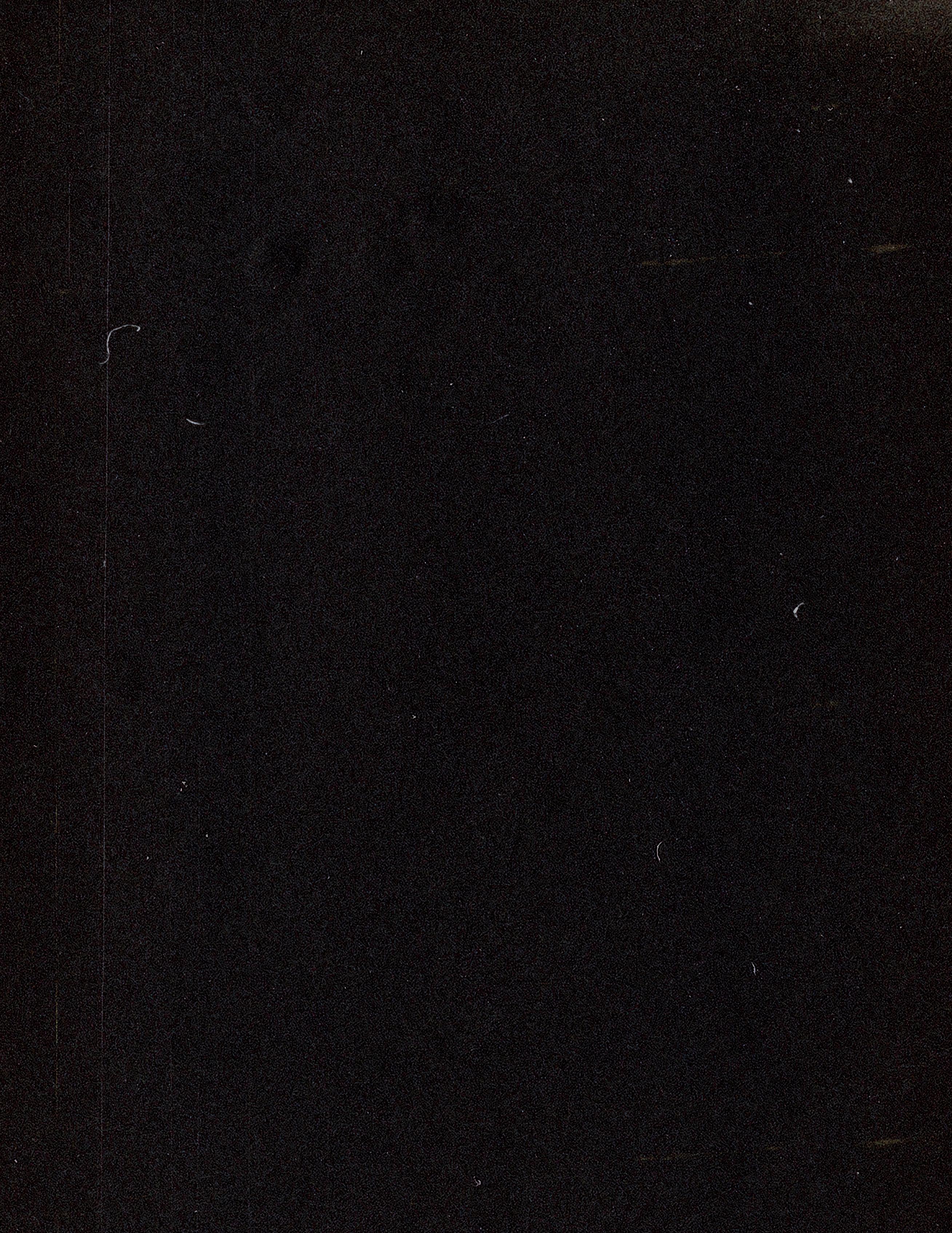
Hip hop is so much more than just music: it’s an art form, a way of life and a global cultural force. Since its inception in the Bronx in the 1970s, where the likes of DJ Kool Herc, Afrika Bambaataa and Grandmaster Flash pioneered the sound, hip hop has transcended borders through fashion, culture and its four pillars: DJing, rapping, graffiti and breakdancing.
In the UK, venues like Subterania, Fridge Brixton, Bar Rumba, Rock City, Hammersmith Palais, SW1 and Labatt’s Apollo helped shape the UK scene, as did the spot outside the Royal Opera House in Covent Garden where breakers congregated to show their latest moves. Icons like London Posse, Outlaw Posse, Slick Rick, Cookie Crew, Monie Love, Klashnekoff, Killa Kela, TY, Sway, Kano, Skinnyman, Akala and Blak Twang all contributed to the musical richness, laying the foundations for a new generation of trailblazers to innovate the British sound.
While this magazine celebrates 50 years of hip hop, it also serves as a reminder of the importance of supporting all levels of musical talent, from grassroots artists through to world-leading stars. Hip hop's enduring influence on today's music industry underscores its vital role in shaping and propelling musical innovation.
Here's to hip hop — a testament to music's transformative and unifying power.
Michelle Escoffery, President of PRS Members’ Council
Blak Twang
The groundbreaking groups of UK hip hop
The lyrical genius of UK hip hop

Breaking down barriers as a female hip hop artist
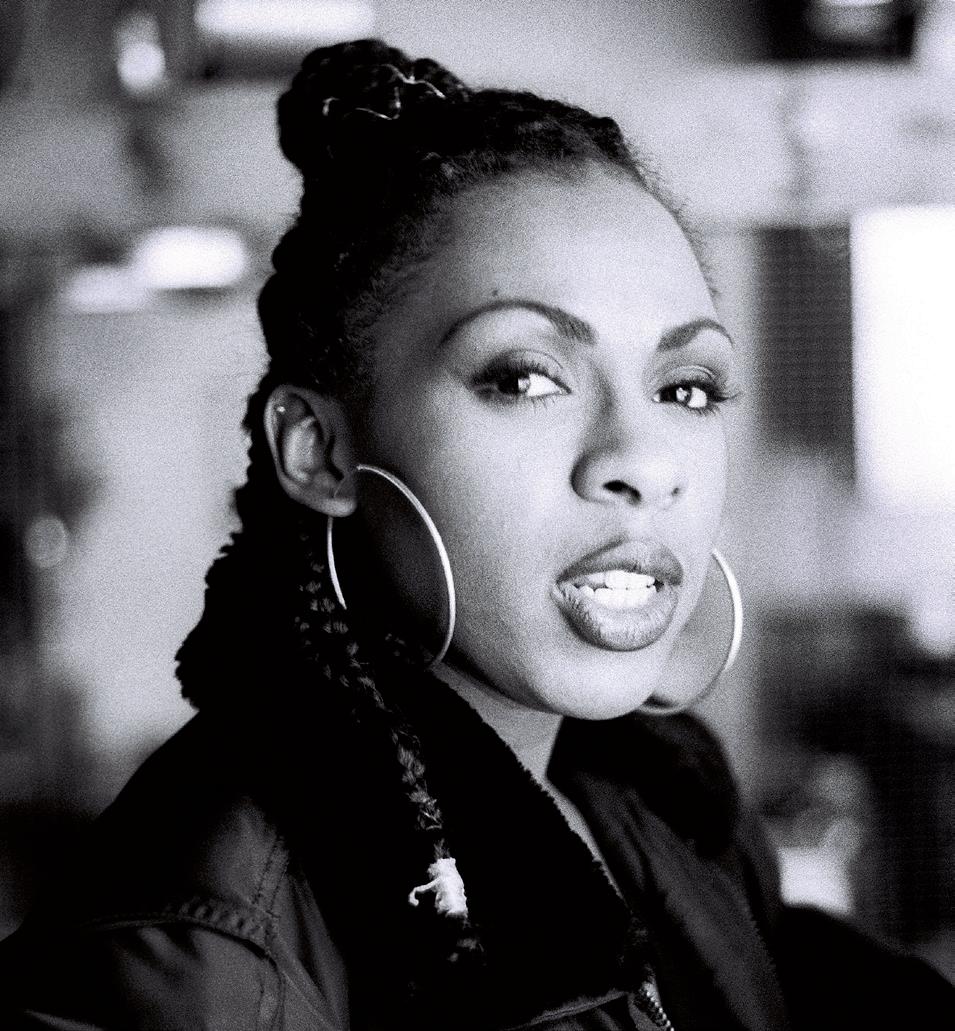
MF DOOM
Tee Max — hip hop’s visual historian
The radical resistant roots of UK hip hop
PRS Foundation — powering up UK hip hop
Hip hop — a force for personal growth
ENNY
How radio DJs shaped hip hop
Producers — the beating heart of hip hop
Hip hop’s sampling legacy
Slick Rick
Under the influence — UK genres that owe a debt to hip hop
The evolution of the hip hop hook P
Contents
Money Hip hop entrepreneurs TY — in memoriam 4 6 10 16 18 22 28 32 36 38 40 42 46 48 50 54 56 60 62
Editor Maya Radcliffe


Content Editor Sam Harteam Moore
Art Director Carl English
Creative Manager Paul Nichols
Contact magazine@prsformusic.com
ISSN 0309-0019© PRS for Music 2023. All rights reserved. The views expressed in M are not necessarily those of PRS for Music, nor of the editorial team. PRS for Music accepts no responsibility for the views expressed by contributors to M, nor for unsolicited manuscripts, photographs or illustrations, nor for errors in contributed articles. Reproduction in whole or in part without written permission is strictly prohibited.
6
Monie Love
The south London rapper and MOBO-winner tells M about coming of age during hip hop’s foray into the UK music scene, and how he and his rap peers began to carve out this country’s distinctive hip hop identity.
By Joanna Chaundy
Even though his 1996 debut album Dettwork Southeast wasn't officially released until 2014, Blak Twang is undoubtedly UK hip hop royalty. The Londoner born Tony Olabode became one of the most successful UK rappers of his time, with five albums (including 2002’s Kik Off, which featured cover art designed by Banksy), a MOBO Award and collaborations with the likes of Rodney P, Roots Manuva and Estelle all under his belt.
There aren’t many other people in the UK more qualified than Blak Twang, then, to talk about the importance of hip hop’s 50th anniversary. 'No one expected it to last this long,’ Twang tells M about the enduring significance of the movement. ‘It changed and influenced everything: language, slanguage, fashion, the way we listen to and perform music. It’s music that best reflects life and making something from nothing: that’s hip hop.’

Having mainly listened to reggae while growing up, the first rapper who truly caught Twang’s imagination was KRS-ONE: as we speak, he starts singing the riff to Boogie Down Productions’ My Philosophy
'When hip hop started making some noise I got into Public Enemy and Big Daddy Kane, and then started properly immersing myself in it,’ he says. 'N.W.A. were a really big influence on me when I was 18, and I started taking hip hop more seriously and listening to what the artists were really saying: I was listening to the lyrics rather than just the music. It also gave me an insight into America, which I never previously paid attention to — particularly black America. All we saw was what was shown on TV, whether it was The Cosby Show or all those Blaxploitation
movies. But then listening to rappers really talk about their neighbourhoods, their struggles and their experiences on top of some wicked beats… that’s when I really said, “Yep, this is me.”’
As the ‘80s blurred into the ‘90s, hip hop began to seep into the London music scene — although, as Twang explains, you had to be ‘in the know’ to access it. ‘Hip hop was very popular in London, but also very underground,’ he says. ‘You had to be in with the right people and know what was going on to get to a gig: it wasn’t at your fingertips like it is now, you had to really work for it. It made you appreciate it more, because it wasn’t so easy.’
The first hip hop show Twang attended in London was Monie Love and MC Mell'O' at The Albany in Deptford (‘It was amazing’), but it was a while before he realised that he wanted to become a rapper himself. ‘Initially, I was just watching,’ he says. ‘Then around 1990, I was rolling with friends of mine who were already writing music.’ Those friends included Roots Manuva and the late TY, who died in 2020 shortly after completing a tour with Twang and Rodney P as Kingdem. 'We all used to go to this studio on the Angell Town Estate that a lady called Dora and her husband allowed us to use, and that’s when we started making demos.’
But what eventually convinced him to become one of the musicians he had so idolised? 'I started listening to Tim Westwood and Friday Nite Flavas, where DJ 279 would play a lot of UK rappers,’ Twang recalls. ‘That's where I used to start hearing rappers with a London accent, or whatever their local dialect was. I'd then go to [London venue] Borderline and would see people like Skinnyman and Fallacy there.'
'HIP HOP IS THE MUSIC THAT BEST REFLECTS LIFE’
He smiles as he then remembers a YouTube clip of him, Skinnyman and MCD doing a cypher together when they were younger. 'That was a day we all went to work on a track called UK Allstars, which was produced by Funky DL, a great producer. It was strange that we all showed up to the studio because that would never happen nowadays, but then it was an awesome time and era to be alive.’
Lyrically, Twang is renowned for using London slang and terminology in his music, and he credits various artists for influencing his writing. 'Nas was one of my biggest influences as far as writing goes, as well as Mobb Deep,’ he says. ‘I used to work with MCD in a studio down Holloway Road, which really made me see a different level of writing — London Posse as well. They were so creative with the words they chose, it just sounded so natural and conversational. I wanted to reach the levels they set for me, and then I put my own slant on it.'
He certainly achieved that: Twang’s lyrics were so personal to his native London that they may have even scuppered any chances of him being accepted by US music fans. Was that a conscious decision?
'I’m glad you asked that question,' he replies, leaning forward. ‘Yes, we consciously decided that we weren’t going to rap in American accents: we had to keep it authentic to ourselves. If you got up at an open mic night and rapped in an American accent, you were getting booed!
‘We championed that real London sound, using local language and colloquial slang,' he adds, with a smile. ‘It was a great time. The UK hip
hop movement grew and grew, and we were almost saying, “Stuff America". We didn’t mean it disrespectfully, but we didn’t want to be compared to our big brother: we wanted to be recognised for what we did. That started to happen when BBC Radio 1Xtra came about and people could hear us everywhere, which really propelled the UK hip hop scene. It’s gone from strength to strength ever since.’
Twang cites the likes of Dave, Wretch 32 and Kano as some of his current favourites, but, as a veteran of the game, he also makes sure to give plenty of credit to his predecessors. 'There’s nothing I can tell ‘em: they’ve already done it,’ he says about the current generation of musicians. ‘They’ve taken what we had and learned from our mistakes, and now they’re capitalising on it in the way we couldn’t.’

M Magazine | 5 Photo: Tee Max
'We consciously decided that we weren’t going to rap in American accents: we had to keep it authentic to ourselves.’
GROUNDBREAKING GROUPSof uk hip hop
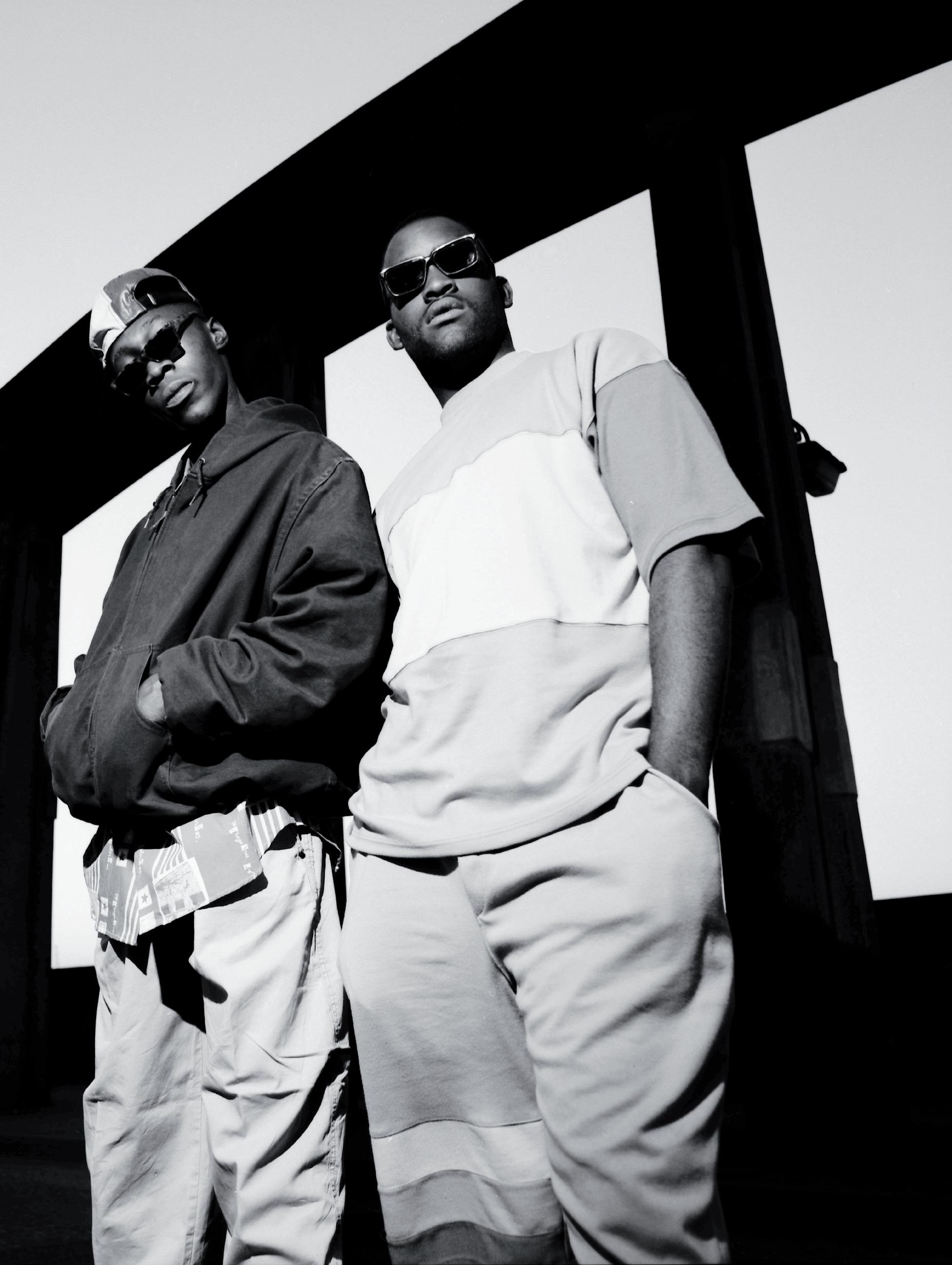
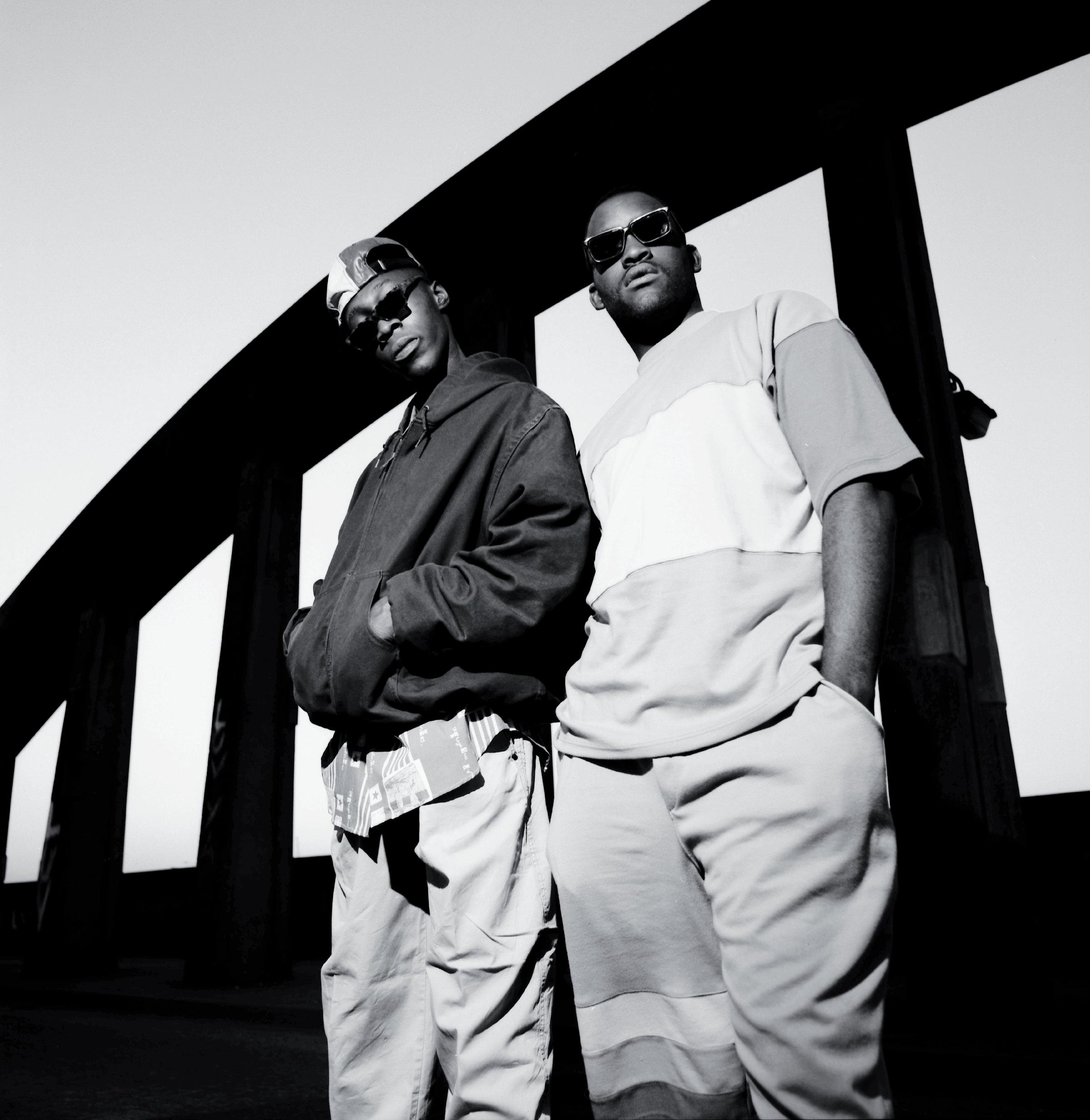
the
 Above: London Posse
Above: London Posse
From London Posse to Cookie Crew, a host of pioneering hip hop groups helped lay the foundations of the UK scene. M traces these acts' groundbreaking contributions, musical innovation and enduring impact on the hip hop landscape.
By Angus Batey
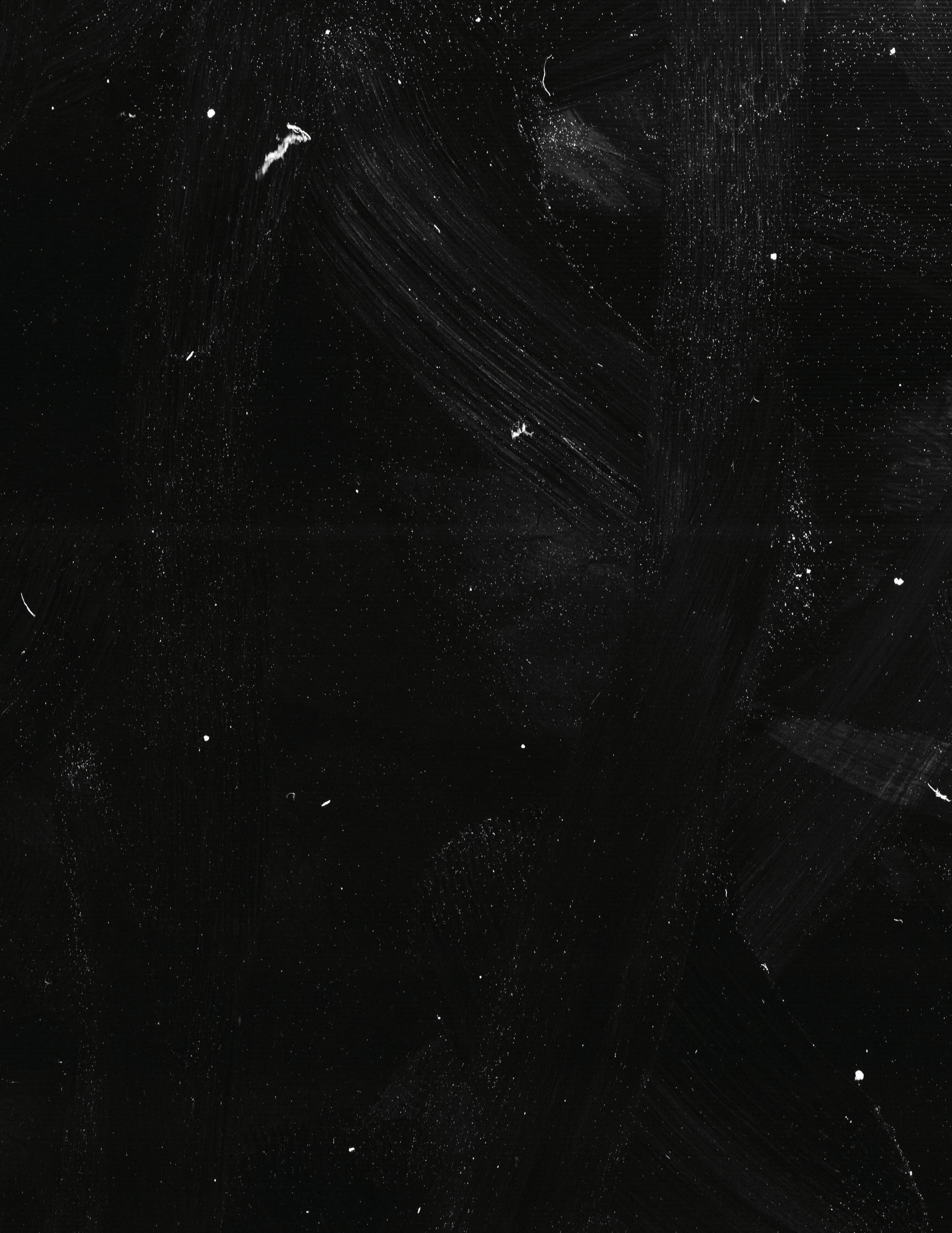
Whether it's Little Simz winning the Mercury Prize, Dave topping the UK album chart or Stormzy headlining Glastonbury, British hip hop looks indomitable. According to the BPI, only pop and rock accounted for more album consumption than hip hop in the UK in 2022, with British artists responsible for the lion's share of those sales and streams. The genre also commanded almost a fifth of the singles market, with eight of the 10 most-streamed and highest-selling tracks by UK artists.
Yet for many years, British rappers were ignored by the media, music industry insiders and even UK rap fans. Regarded all too often as middling talents at best, they were cast as imitators in thrall to the American innovators; wannabes incapable of competing with the avalanche of adventurous, exciting music making its way across the Atlantic. Not only was this deeply ingrained misconception ignorant and unfair, it relied on a series of selective elisions and misinterpretations to retain its shape. Yet despite having little credible basis in fact, this dismissive view held back a scene that is only now beginning to realise its vast potential.
Hip hop made its way across the Atlantic in a kind of audio-visual samizdat form. Brits with friends or family in New York began to receive cassettes made at Bronx park jams or Brooklyn block parties in the late 1970s, alerting them to the new sound being created out of old records by pioneering DJs and adventurous MCs. The art form's visible manifestations — graffiti art and breakdancing — made landfall in Britain first, but the early rap records weren't far behind: the Sugarhill Gang's Rapper's Delight, the first hip hop hit, reached number three in the UK charts as the 1980s dawned.
In many respects, then, we shouldn't have been surprised that British musicians began making rap records — only that it took them so long to do so. Just as in the US — where the Fatback Band's B-side King Tim III (Personality Jock) beat the Sugarhill Gang to the record racks — there is debate about what was the first true British rap record. Newtrament's London Bridge Is Falling Down appears to have been recorded earlier, but it was Dizzy Heights' Christmas Rapping that came out first in December 1982. In the late '80s, industry naysayers would claim the UK had insufficient fans to turn British rap records into hits, suggesting that major labels would never invest in a supposedly inferior, non-US version of the product. Yet Newtrament's single was released by the Arista-distributed Jive, a label that would become synonymous with creative, credible US hip hop, while Christmas Rapping spent four weeks in the Top 75.
Just as notably, these releases came after established British artists from other genres had begun to warm to hip hop's creative potential. The Clash experimented with elements of rap on their 1980 album Sandinista! , while guitarist Mick Jones would absorb hip hop into his creative process when he and The Clash's videographer, Don Letts, formed the band Big Audio Dynamite in the
M Magazine | 7
‘After bumping into him in the queue at a London McDonald's, She Rockers got Public Enemy's Professor Griff to produce their debut single.’
mid-'80s, bringing London Posse member Sipho into the charts in 1986 as a featured artist on the single C'mon Every Beatbox. Pop band Wham! and post-punk outfit Adam and the Ants, meanwhile, both released rap singles in the early '80s. If these efforts made little impact within the UK’s nascent hip hop scene, the 1982 release of Malcolm McLaren's Buffalo Gals was seismic — even if, by relying on New York musicians and shooting the epochal video in the US, it can't really qualify as the first real British rap record.
Early British rappers were savvy enough to make a virtue of their differences, but the influence and inspiration of American hip hop was pivotal. Key dates in the UK rap timeline, therefore, include the UK Fresh '86 festival: organised by Capital Radio and the Streetsounds label (which had found a niche by licensing US rap 12"s and repackaging them as affordable compilation LPs), the all-day event at Wembley Arena brought New York's A-list to London. The DJ service Disco Mix Club hosted its first DMC World DJ Championship in London the same year, with Fresh '86 opening act DJ Cheese its inaugural winner. By November 1987, the city was so well established on the hip hop map that Public Enemy would choose their support slot to LL Cool J and Eric B & Rakim at the thenHammersmith Odeon as the place to record the fevered crowd response segments that were dropped in between songs on their 1988 masterpiece, It Takes A Nation Of Millions To Hold Us Back
The music's power dynamic might not have been starting to shift exactly, but if the big names in the US had previously thought of the UK as just another territory to shift units in, many of them were now aware there was a new scene coming together in Britain and were ready to take British artists seriously. After bumping into him in the queue at a London branch of McDonald's, west London trio She Rockers got Public Enemy's Professor Griff to produce their debut single. Brixton six-piece Hijack were spotted by Ice-T and soon signed to his Rhyme Syndicate label, while Londoner Cutmaster Swift emerged victorious in the 1987 DMC final.
By 1988, when London Posse's single Money Mad laid those 'copying the Americans' critiques to rest with cockney slang and London-accented rhymes, British rap was on a roll. The Music of Life label was providing a home for this sudden explosion of new British rap acts: its A&R man Derek B became the first UK hip hop artist to appear on Top Of The Pops, rapping about being pulled over by the old bill on the M4 in Goodgroove. The female duo Cookie Crew (above right) had already scored a US dance chart hit with the anthemic Females and soon found themselves in the storied Calliope Studios in New York, where De La Soul and the Jungle Brothers had made classic LPs, working on a debut album with members of Stetsasonic.
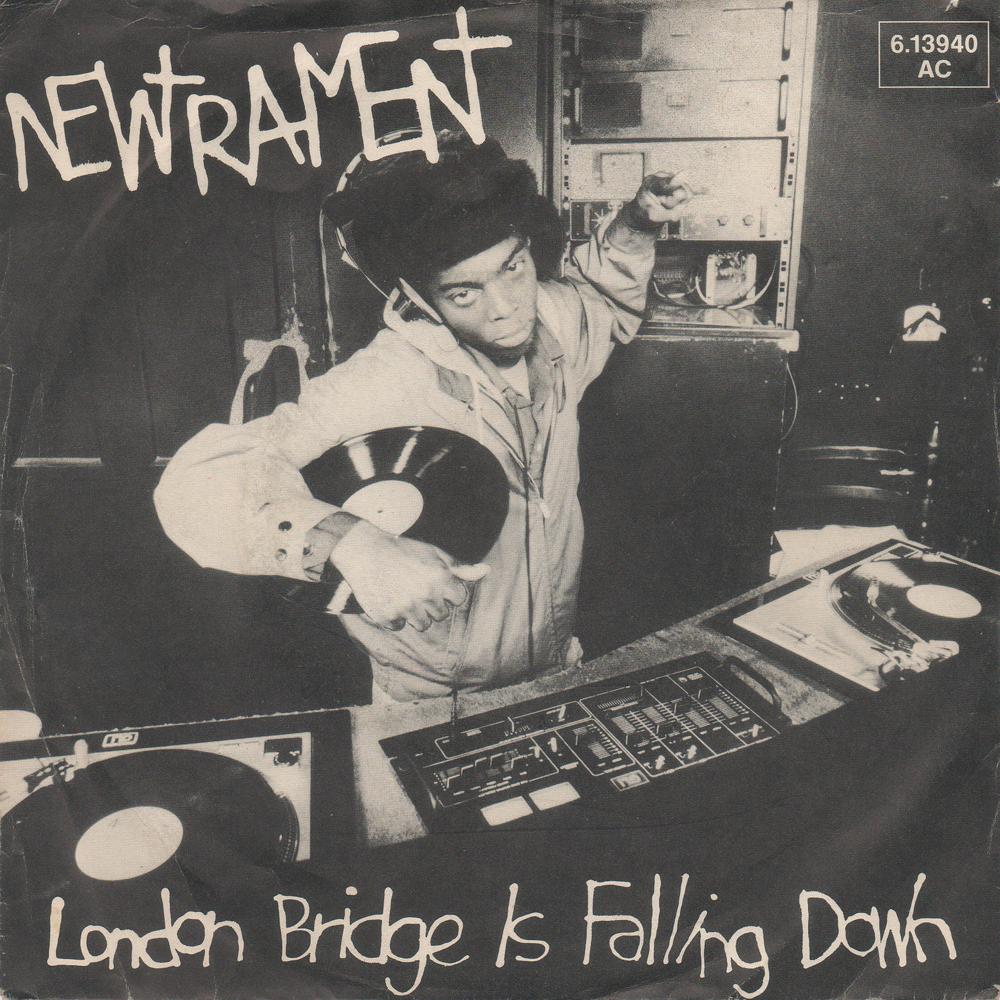
Hijack, meanwhile, had almost single-handedly created a new sound with their blisteringly fast second single Hold No Hostage, released by Music of Life in 1988. Battle Creek Brawl, the debut release from trio Gunshot, took a leaf out of the Hold No Hostage playbook, before Hardnoise's Untitled and tracks like Blade's much-loved 1990 B-side Forward turned an idea into a sub-genre.
British artists ran the gamut, from the likes of Definition of Sound and Outlaw Posse who embraced melodic sampling, to the militant politics of Black Radical Mk II and Katch 22. Stereo MC's — early British rap's biggest band, even if they weren't routinely considered part of the scene — began as a trio with two rappers and a DJ, before recruiting a drummer and backing singers and winning two BRIT Awards for their chart-topping 1992 album Connected. Over time, British artists who grew up on hip hop would come to dominate charts and venues worldwide. Be it The Prodigy, whose musical driving force Liam Howlett had been in a rap group and won a Capital Radio scratch-mix competition; Massive Attack, whose members included storied Bristol graffiti artists

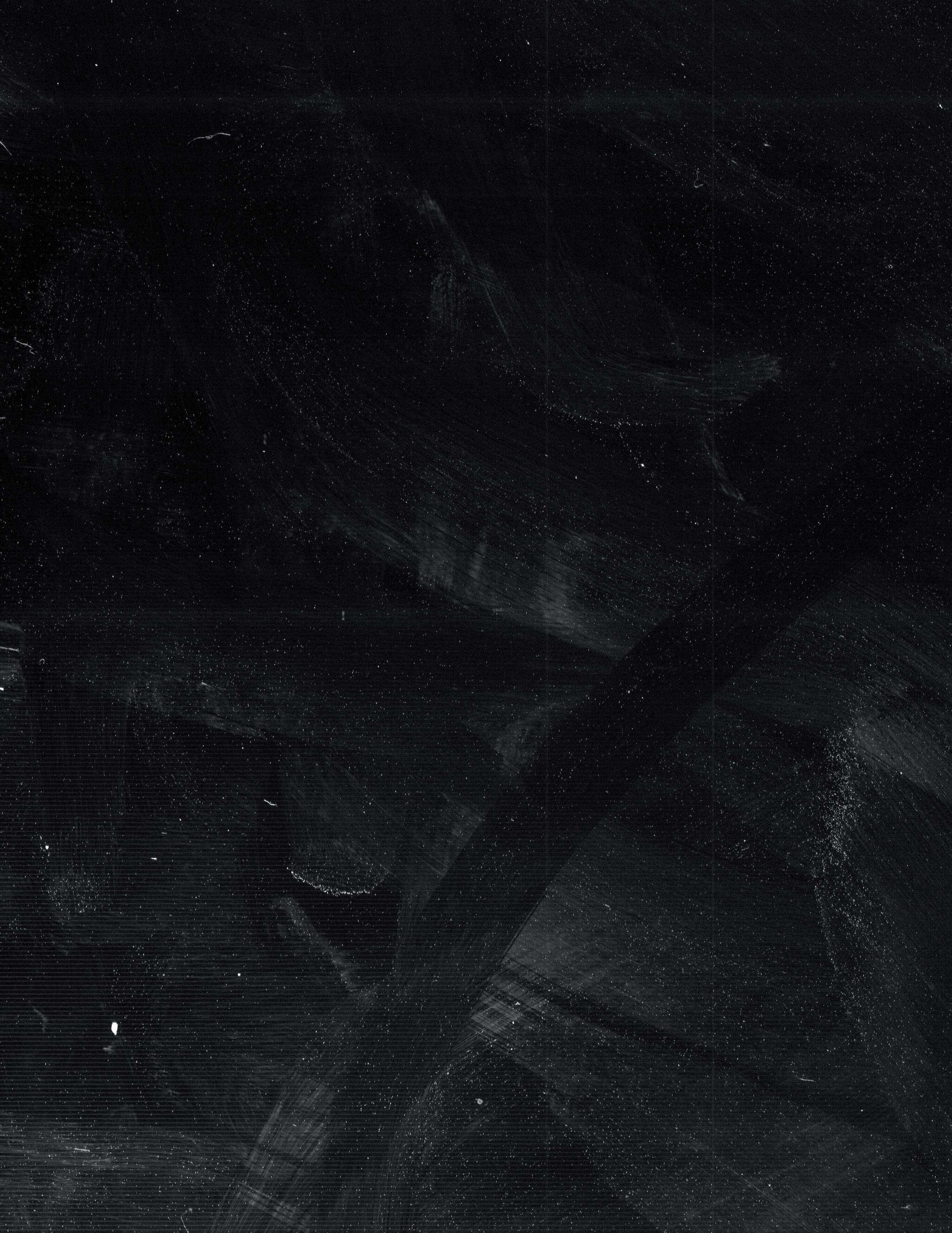
'Over time, British artists who grew up on hip hop would come to dominate charts and venues worldwide.’
and whose sound and style was based around looped samples and scratching; or Norman 'Fatboy Slim' Cook, whose debut album was a breakbeats collection released on Music of Life and whose first big hit was a remix of Eric B & Rakim.
Yet it was the so-called Britcore sound — those uptempo, skittering beats allied to rapid-fire rhymes that were instigated by Hijack, Gunshot, Hardnoise and Blade — that would become arguably the most important and influential development in British rap's foundational years. During the late '90s, when US hip hop became the globe's dominant genre, European fans who prized authenticity and integrity over the partying and excess that characterised the American hits elevated Britcore, treating it as the last bastion of the old-school values of independence, integrity and a refusal to sell-out. By the turn of the century, as drum’n’bass, speed garage and grime respectively developed the idea of spitting fast rhymes over hard, sped-up beats, what had at first been decried a stylistic dead end came to be seen as the first manifestation of a new, and uniquely British, approach to hip hop.
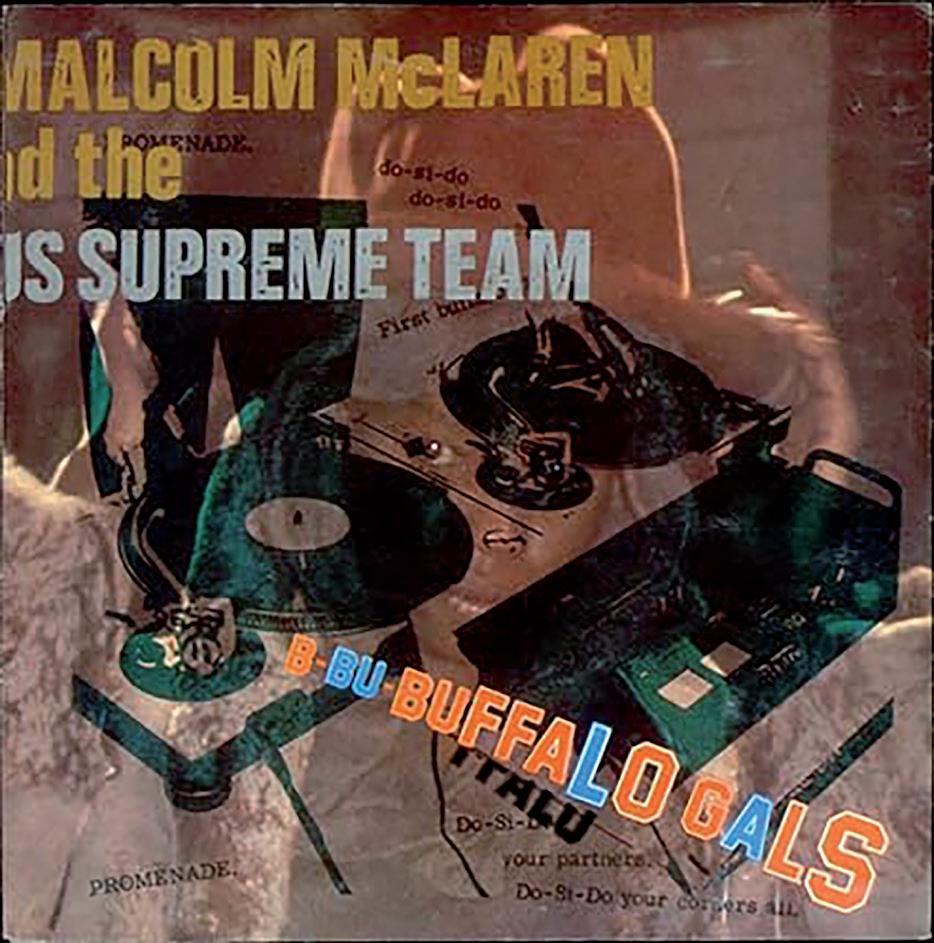

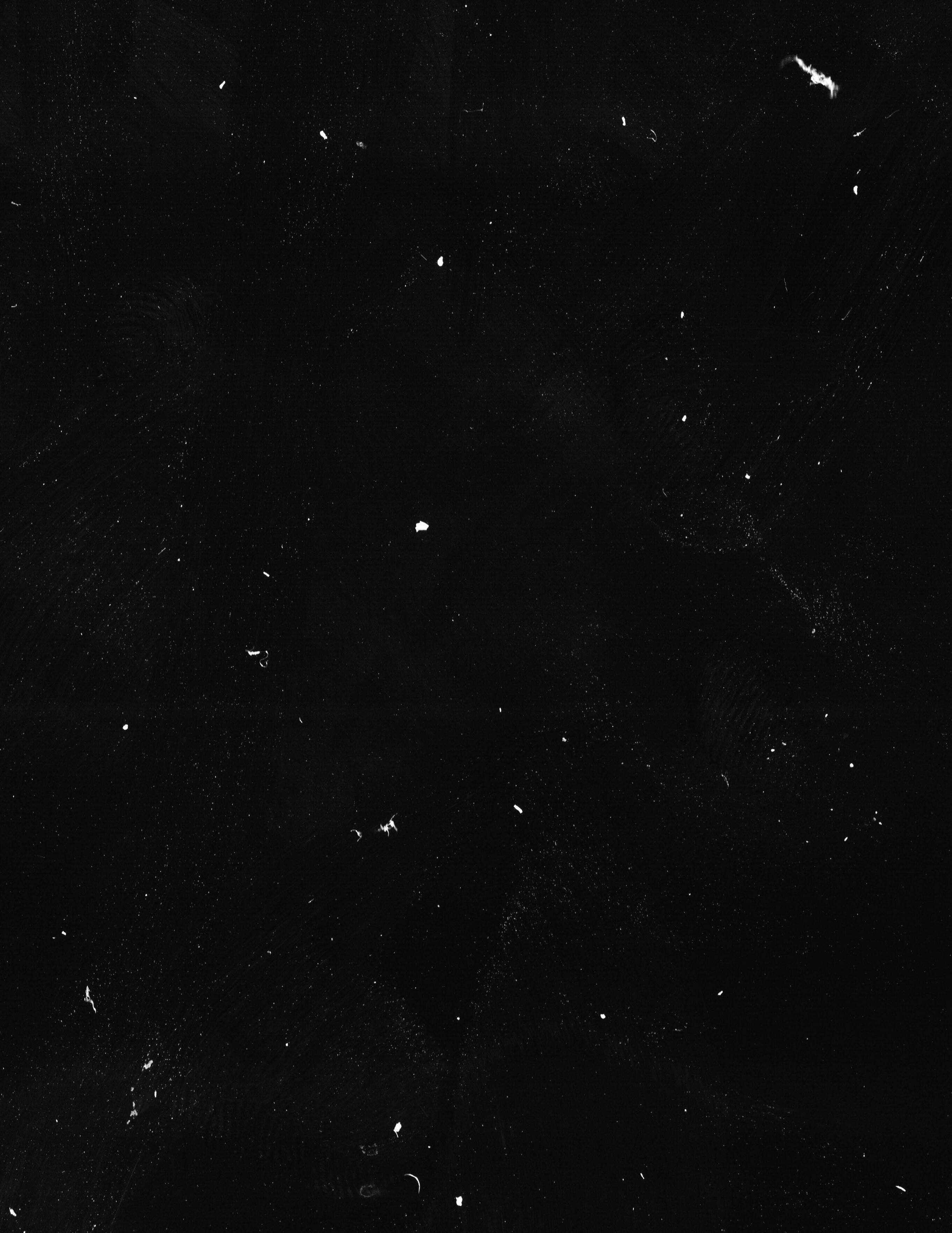

M Magazine | 9
'For many years, British rappers were ignored by the media, music industry insiders and even UK rap fans.’
M explores the poetic evolution of UK hip hop lyricism, from its roots in the Windrush Generation to modern-day greats like Dizzee Rascal and Giggs.

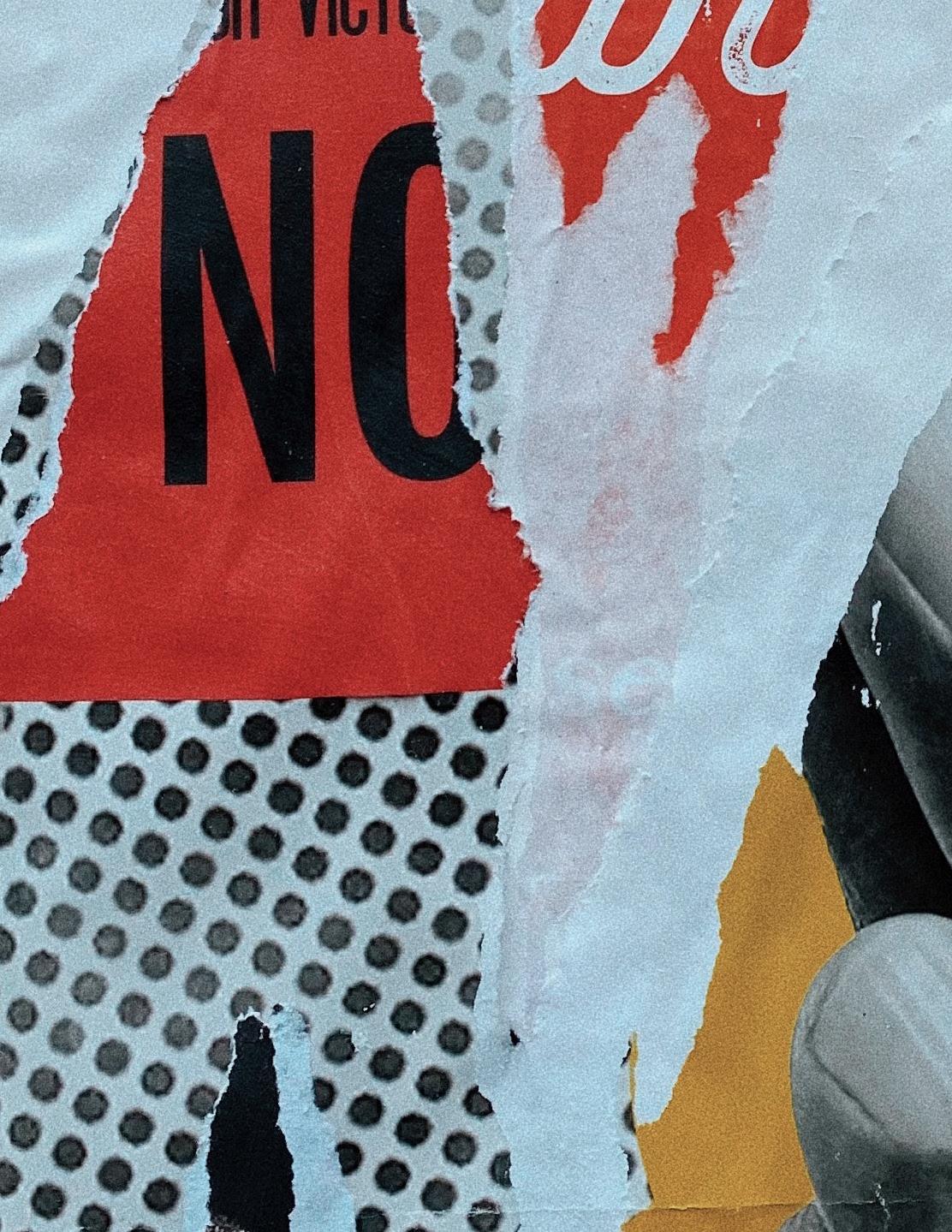 By Jesse Bernard
By Jesse Bernard
Over the past 50 years, hip hop songwriting has been primarily built around storytelling and world-building, elements which can be traced back to the genre’s roots in gospel, blues and jazz music. At its core, the retelling of the Black American experience, both individual and collective, is the very clear thread that weaves these styles together, greatly influencing the music that is created.
To understand the fabric of hip hop in any country it has a strong cultural presence in, an acknowledgment of migration patterns is imperative. While the Great Migration — when approximately six million Black people moved from the American South to Northern, Midwestern and Western states between the 1910s and 1970s — birthed a wave of industrialism and urbanisation in major cities across the US, Black migration to the UK didn’t occur en masse until the Windrush generation of the mid-20th century. Many of these Black immigrants came from Caribbean countries where both gospel music and sound system culture were prominent, and these two traditions were brought with them upon their arrival to the UK, forming the roots of Black British music.

Fast-forward to 1980s Britain, which, to many, evoke ugly, This Is Englandstyle images of Thatcherism, widespread social unrest and the National Front. But for young Black people in Britain, this decade marked the shaping of a Britain that was markedly different from what their parents and grandparents first encountered. They were arguably the first generation of Black people in the UK to self-identify as being British, though, it should be noted, they still primarily considered themselves to be Black first. This generation had to contend with rising youth unemployment levels along with the antagonism, prejudice and racism they regularly faced from those they shared classrooms, workplaces and public spaces with. Long-standing tensions between the Black community and the police, stemming largely from the latter’s disproportionate use of the ‘sus law’ against young Black men, sparked riots in Brixton, Tottenham and Toxteth in Liverpool.

M Magazine | 11
dizzee rascal
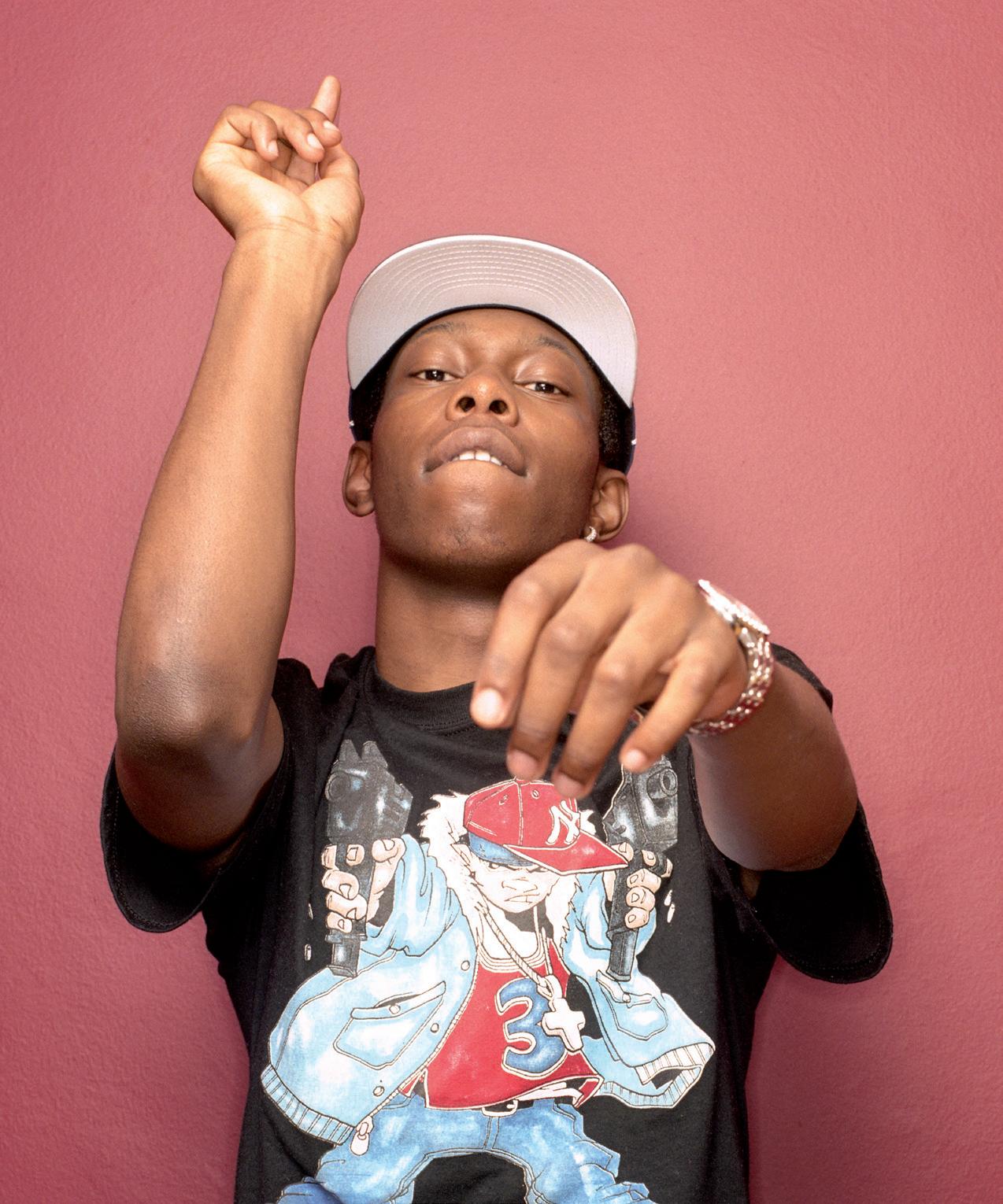
Young Black people were already able to creatively express their frustrations at this time through reggae and dancehall music, but thanks to increased media exposure from the US, they were also learning how their stories could be told in other forms. Early UK hip hop acts such as Demon Boyz, London Posse and Monie Love, who all emerged on the scene in the late '80s, began crafting the language rappers on these shores are still using today, basking in the freedom afforded by a relative lack of songwriting rules.

Despite this, UK hip hop did suffer from something of an identity crisis during those early years. With the genre still finding its feet in this country and US acts only just beginning to tour internationally, several UK artists began to rap in American accents in the belief it would give them the necessary crossover appeal on both sides of the pond. London Posse member Bionic was instrumental in changing this approach, as the group blended their style of rap with ragga music, while the later emergence of jungle, UK garage and grime gave license to British artists to feel empowered by their accents and speak authentically in a language their audience could identify with.
Dizzee Rascal’s song Sittin’ Here, which opened his seminal 2003 debut album Boy In Da Corner, was a watershed moment for what would eventually become grime music. Consciousness of thought wasn’t necessarily new to the jungle scene Dizzee came from, but Boy In Da Corner was a completely new entity; an undiscovered and unchartered area of music. Music critics and fans alike would come to cite Sittin’ Here as a powerful stream of consciousness that explored themes of depression and youthful angst:
im just sitting here i aint saying much i just think
and my eyes dont move left or right they just blink
i think too deep and i think too long plus i think im getting weak cause my thoughts are too strong
im just sitting here i aint saying much i just gaze
im looking into space while my cd plays
i gaze quite a lot in fact i gaze always and if i blaze then i just gaze away my days
lady sovereign
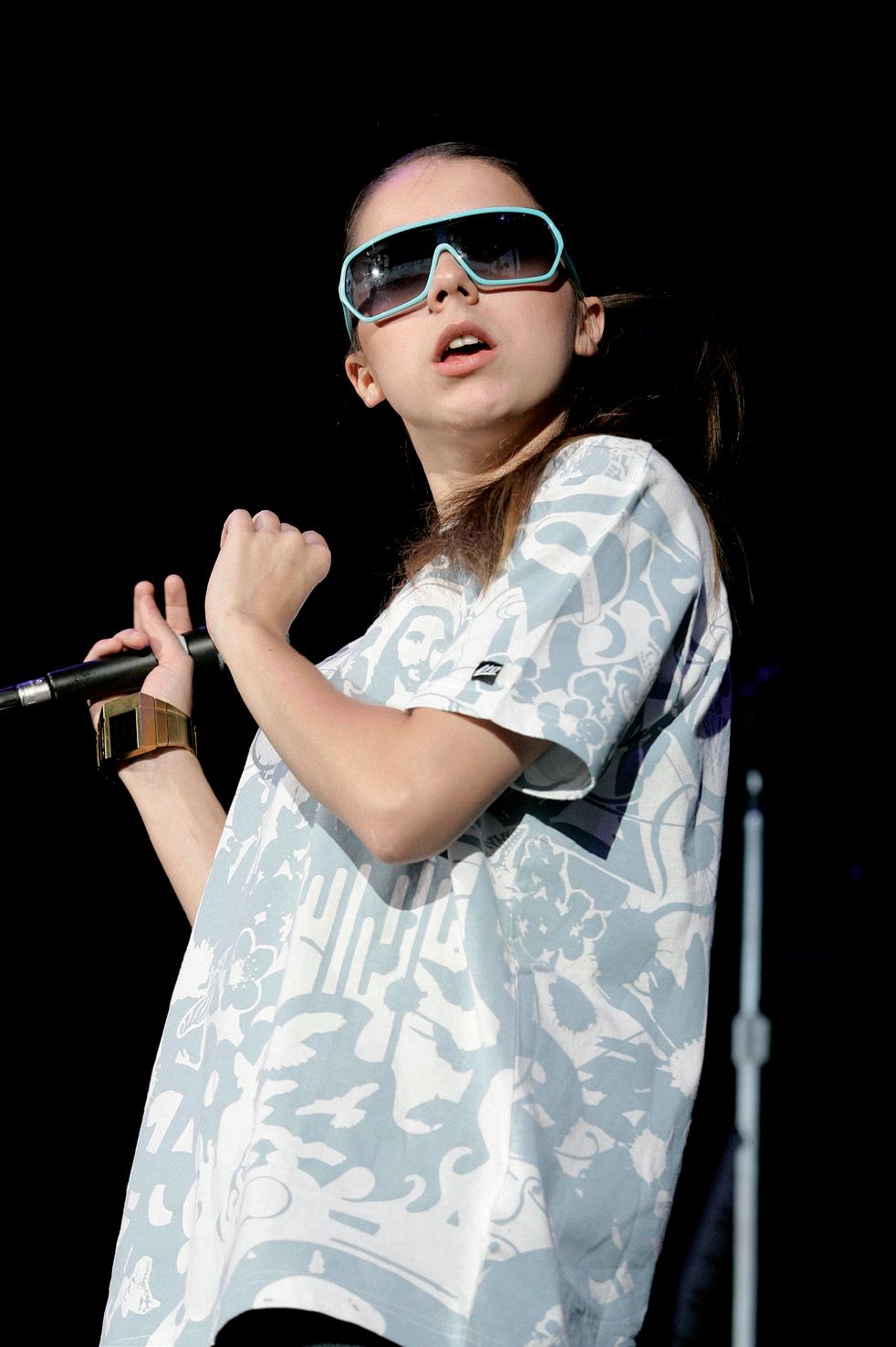
It wasn’t until the early 21st century that UK hip hop, spearheaded by the likes of TY, Skinnyman, Akala, Jehst, Klashnekoff, Shystie, Lady Sovereign and Roots Manuva, began to establish itself as a substantial force in British music. Each of these artists possessed undeniably British cadences and language yet still operated in their own unique spaces, illustrating the breadth of styles within the genre. Take Skinnyman’s 2004 debut album Council Estate of Mind, which represented the working-class through his tales of growing up in housing estates in Islington, one of the UK's most socially deprived areas. The metaphor-laced rhymes of Hackney’s Klashnekoff, on the other hand, possessed punchlines that vibrated through the speakers and hit your chest. To this day, he’s still recognised for creating one of the most memorable UK hip hop anthems in Murda, in which he infamously referenced the 1999 murder of Panorama presenter Jill Dando.

A few years on came the rise of road rap, which was more akin to the gangsta rap found on the east and west coasts of the US. Giggs’ 2007 track Talkin’ da Hardest was the torchbearer, with the Peckham rapper taking the beat from Dr. Dre and Eminem protégé Stat Quo’s Here We Go and making it undeniably British. If you were to ask anyone today who that beat belongs to, most would say Giggs because of the way he gave rise to a completely new style of songwriting in UK rap. His lyrics were simple but effective, employing rhyming couplets so it felt as though each verse contained multiple haikus as opposed to the more traditional storytelling heard in rap: giggs
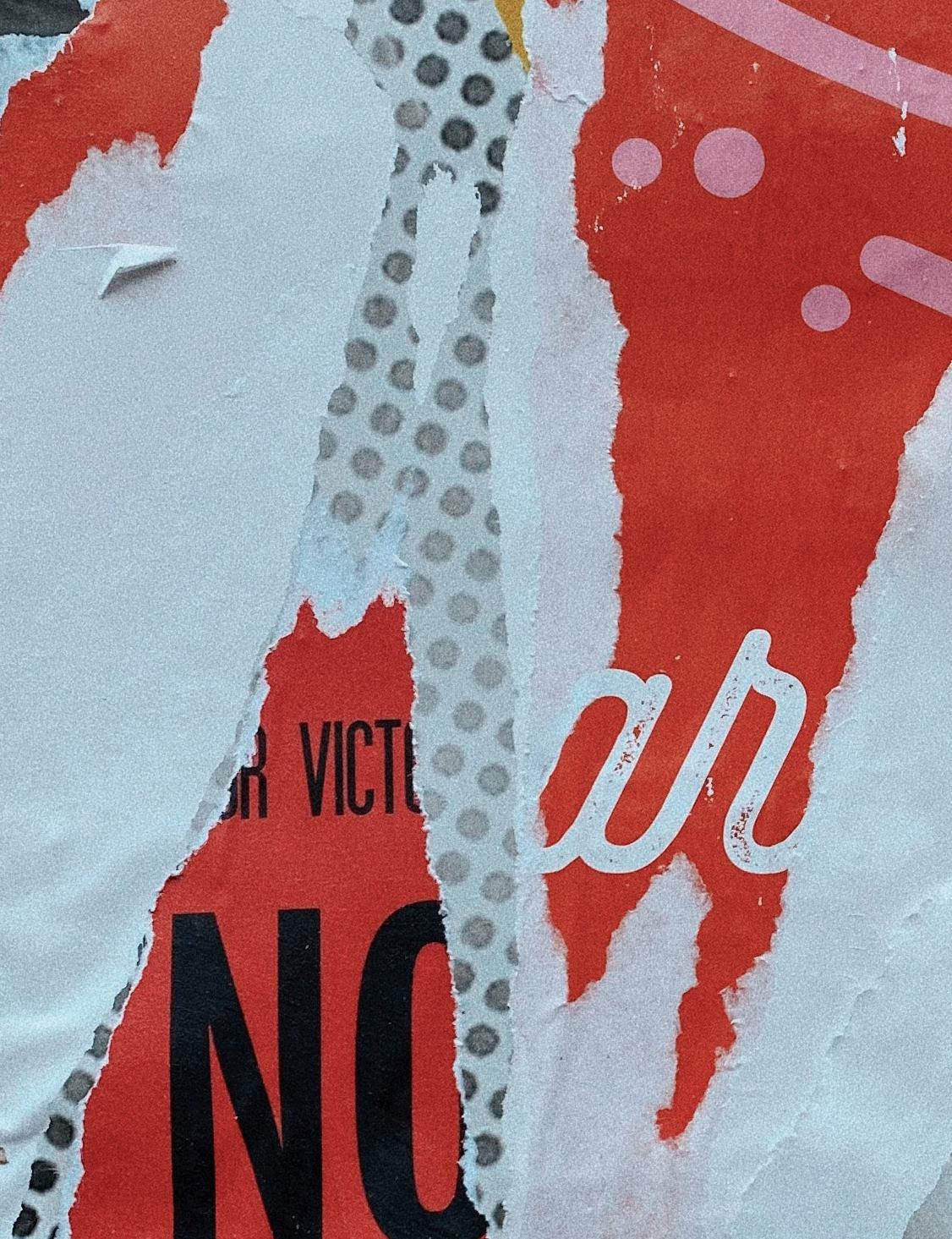
M Magazine | 13
flipping like a quarter a brick bag 28 with a thought of a jib anybody thinks they can talk to my clique will end up covered in red like a portion of chips pour me a drink big fur jacket thats the thoughts of a pimp
'Early UK hip hop acts such as Demon Boyz, London Posse and Monie Love began crafting the language rappers on these shores are still using today.’
Giggs has never been one to shy away from articulating his experiences of life on the road: rappers of his ilk see the brutal reality of street life, which, in some ways, is its own level of consciousness. Talkin’ da Hardest offered a more rounded, if bold and illicit, view of what inner city life was truly like for many young Black people. If the late ‘90s had witnessed a lyrical shift towards more ostentation, Giggs sought to drag the form back towards a rougher and more ominous path as though he was saying, ‘This is what this life is really about’.
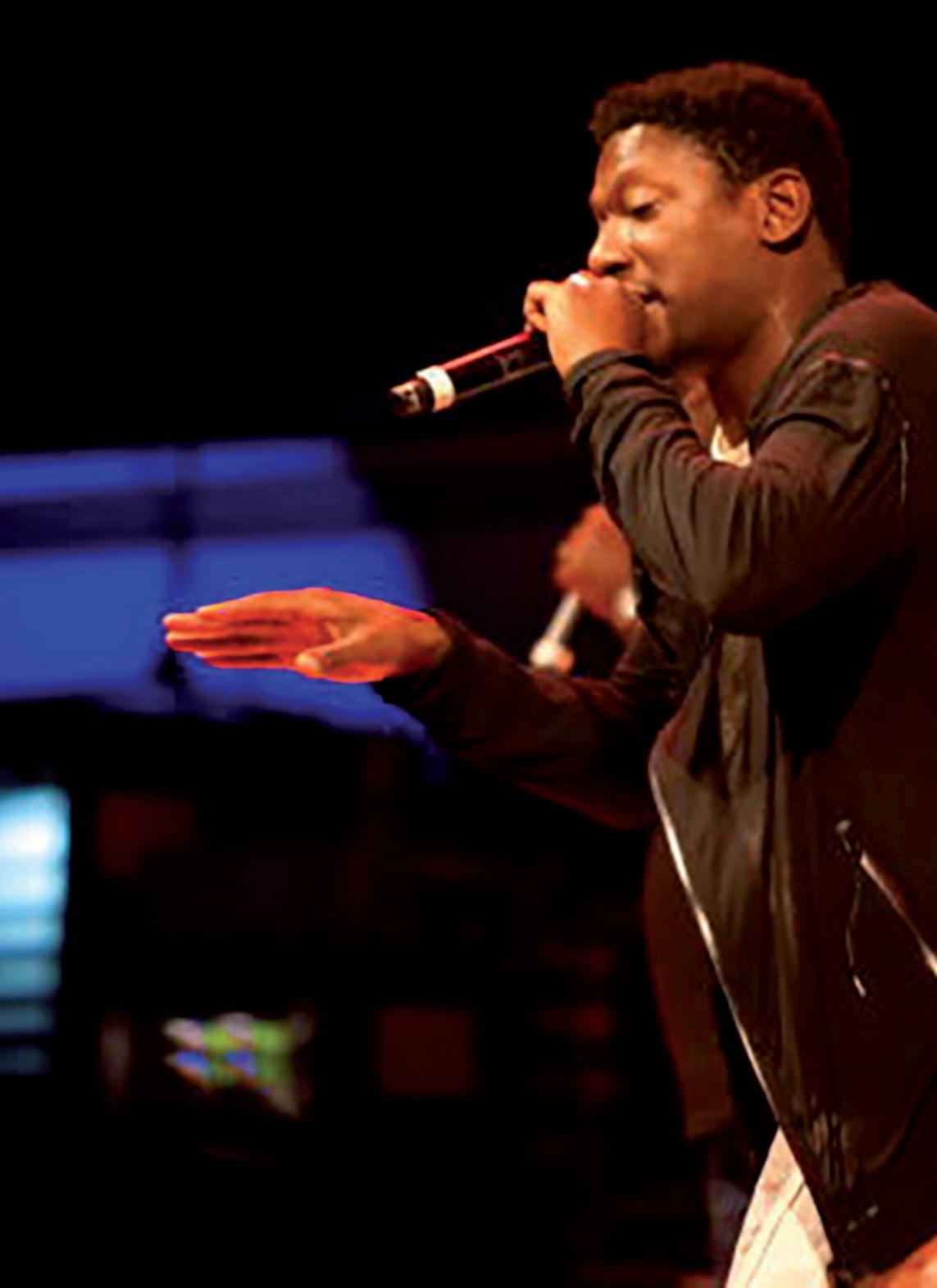
In a country that routinely neglects the working-class and other marginalised groups, and where social mobility is exclusive, telling your story through music is one of the ways in which UK rappers and MCs can take hold of their narrative. This was never more vividly and profoundly felt than on So Solid Crew member Swiss’ 2005 track Cry. I remember first hearing the song when I was in Year 10, and for those that looked like me, Swiss gave us a language that spoke to our existence. We couldn’t quite explain why we had to work twice as hard, but we knew that we had to. The murders of Stephen Lawrence in 1993, Damilola Taylor in 2000 and Anthony Walker in 2005 reminded us that we were the other in the most violent of ways.
Cry was the balm to both Sittin’ Here and Talkin’ da Hardest
The song saw Swiss attempt to answer why Dizzee felt the way he did on the former, while also attempting to offer some perspective as to why people like Giggs ended up being pulled towards the street:

does the lord half care?
theyre just eating bread while everybody starves there
look what happened to the motherland
they dont wanna see blacks the same as another man
and just cos our skins a different colour
i dont change colour but they call me a coloured man
theres only so much you can take in when your heads nappy and with the shade of a slaves skin
the ghetto spent most of my days in
i aint in prison but i feel like im caged in
roots manuva
‘The emergence of jungle, UK garage and grime gave licence to British artists to feel empowered by their accents.’
It was as though Swiss was expounding on the many notes he took over his years growing up in south London, leading him to ask questions of why the likes of Dizzee and Giggs had to be in the positions they were in in the first place. Cry gave young people the words they couldn’t find, imagining a world where Sittin’ Here and Talkin’ da Hardest didn’t exist and instead offering hope and a sense of perspective. There was a Black consciousness beginning to form in UK rap, and while the artists might not have always been able to articulate just how and why life was that way outside of the music, if you gave them a pen and a pad, they could rival some of history’s most prolific thinkers when it came to race and social class.
Then there were those who found themselves straddling the very thin boundary between grime and rap, which still exists today. Justin Uzomba, formerly known by his stage name Mikill Pane, recalls attending rap events as a teenager where grime MCs would attend, and vice versa. There was a mutual respect between the two genres: after growing up and living in the same neighbourhoods and going to the same schools, many of these artists would then cross paths at these events, particularly as spaces were few and far between for rap and grime at the time.
By the mid-2000s, there were three clear strands under the umbrella of hip hop in the UK: UK hip hop, UK rap and grime. The nuances between the three could generally be separated by tempo and the medium in which they were delivered. At the time, grime existed primarily in live radio sets or clashes, while UK hip hop took on a more traditional format through its mix of studio albums and live shows (a more accessible form for audiences who weren’t in regions where pirate radio was prominent). UK rap, meanwhile, largely consisted of freestyles over US rap beats.
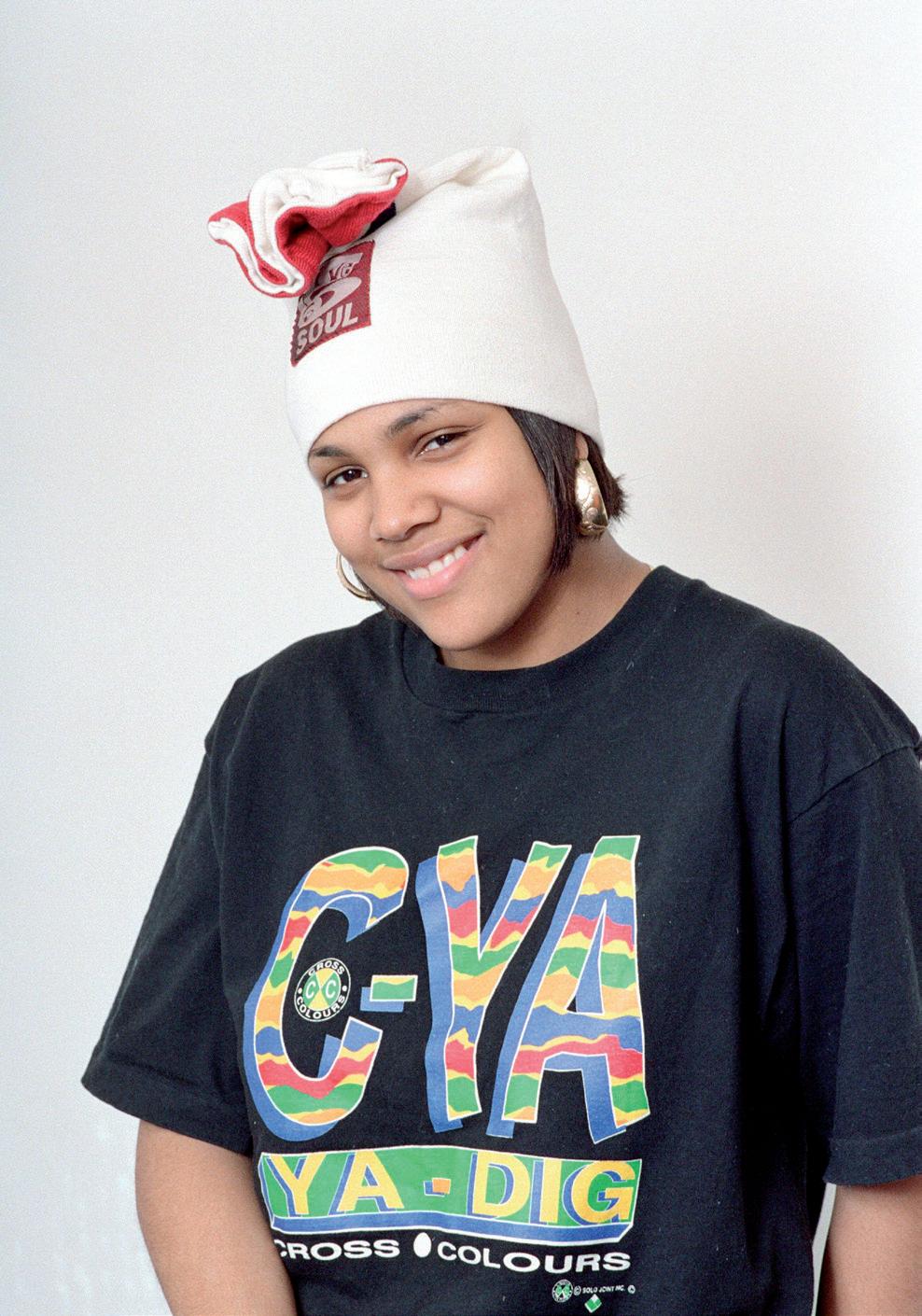


While US hip hop has historically been seen as setting the gold standard when it comes to songwriting and storytelling, UK hip hop’s influence can’t be underestimated. With a clear and traceable lineage that separates it from the US, the UK proudly exists in its own lane — a fact that could only come about through an acceptance and embrace of our roots and history as Black and marginalised people in Britain. Indeed, in 2023, artists such as Central Cee, Dave and Little Simz can be regarded as prominent and genre-leading globally, not just the UK.
UK hip hop’s unique history stands it apart from the country where the genre originated. It can feel like an uphill battle to prove this due to the overarching lore and canon of US hip hop history, which has been retold endlessly. But what has come from the UK since hip hop’s introduction to these shores is more than capable of standing tall, still proudly embracing its authentic roots.
'If you gave UK hip hop artists a pen and a pad, they could rival some of history’s most prolific thinkers when it came to race and social class.’
monie
M Magazine | 15
love
Breaking down barriers as a female hip hop artist
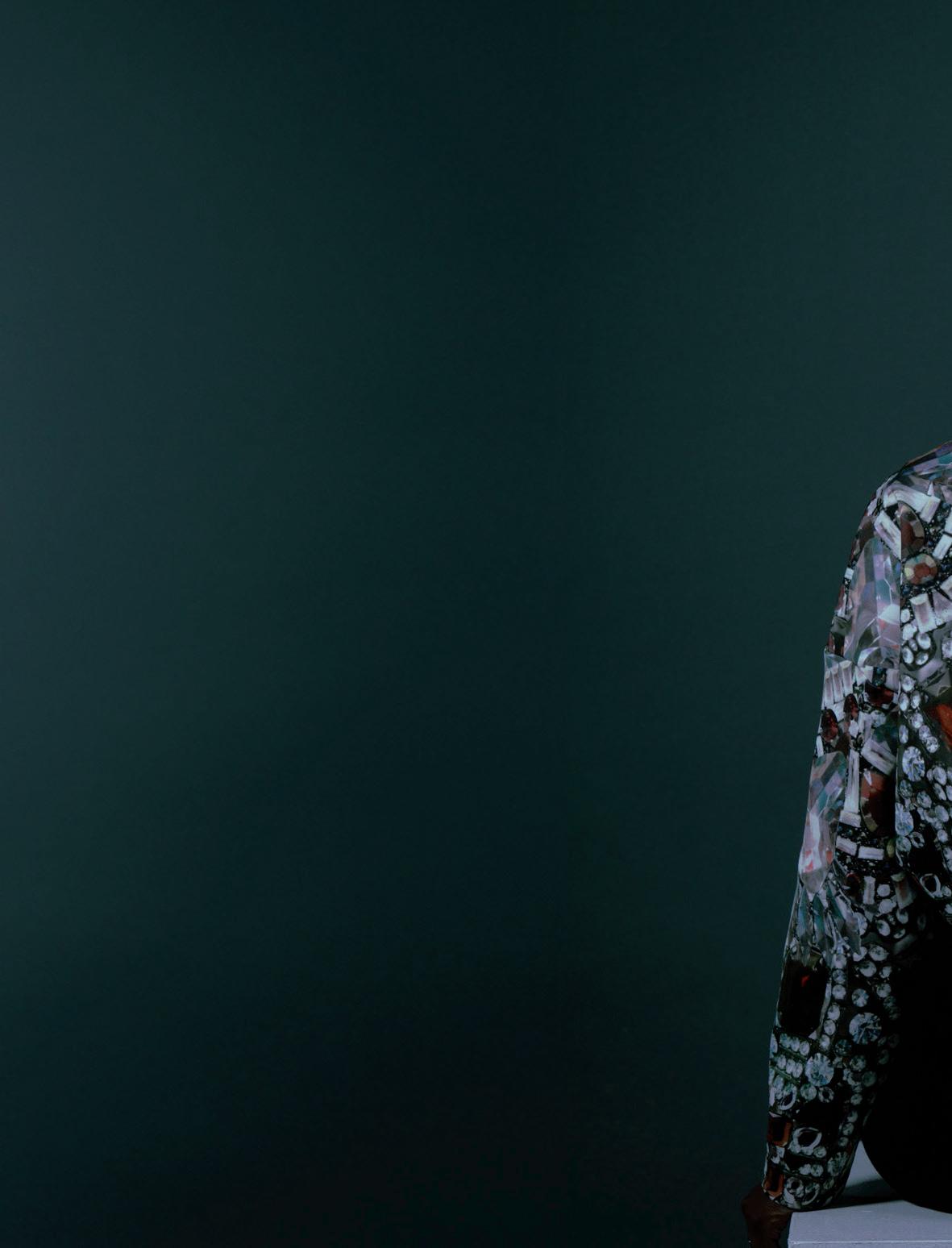
Whether in the US or the UK, women have always been invested in hip hop. While many female artists, particularly those from underrepresented backgrounds, have been marginalised over the years, we're now seeing more women than ever making it to the forefront of hip hop. What is also important to unpack is that the conscious rappers — those who choose to tackle difficult issues in society, politics or real-life suffering - are still being driven further and further underground.
Often referred to as Scotland’s first female rapper, I have had the honour of working, touring and recording with some of the greatest artists of all time during my career. This is my story.
I was born and raised in Edinburgh, and, at the age of 14, I was lucky enough to join the band NorthernXposure alongside Revelations (the founding father of Scottish hip hop) and arguably Scotland’s best hip hop DJ, three-time DMC Champion Ritchie Ruftone. At that time, hip hop was not embraced by the wider Scottish music industry, and many found the accent difficult to swallow. Undeterred, I took it to London and performed live in Covent Garden and Deal Real, Soho’s now-closed hip hop specialist record shop.
Back in those days, if you weren’t on tour, you weren’t a real rapper. Making music for your friends didn't count and there was no social media, so if you wanted people to hear your music, you had to physically be there in the room with them. I toured and worked with a whole host of UK legends — including Estelle, Amy Winehouse, Lethal Bizzle, Sway, Giggs, Fallacy and Fusion, Kano, Jehst,
Blak Twang, MCD and Akala — before going on to join Skinnyman’s Mud Family and Roots Manuva’s Banana Klan collectives. The work rate back then was intense: there were no shortcuts, and it wasn’t for the faint-hearted.
After the success of our 2009 album The Last Piece of The Puzzle, we were invited on tour with Damian Marley and Nas, received recognition from the MOBOs and became the first unsigned Scottish rap act to play at Glastonbury. Add to that appearances on Jools Holland, Tim Westwood and BBC's The Culture Show, and it still feels strange to look back and realise we were not only making Scottish hip hop history, but also UK music history.
Music, for me, was all about creating a competing ideology. I had no problem sacrificing fame or money as it was always about the music, interacting with the audience and the feeling you get when you know you've rocked a venue. My life and work were always about connecting the past with the future, whether promoters understood it or not.
At home there was not only racism, but real and physical persecution as well. I would promote shows by myself, bringing major artists such as Busta Rhymes and The Game to Scotland. Local lads, though, would rip down my
The Edinburgh artist now part of hip hop collective LOTOS takes us through her against-the-odds journey as Scotland’s first prominent female rapper.
‘I had no problem sacrificing fame or money, as it was always about the music.’
posters and pay their money just to give me abuse. It was madness, albeit a totally different time. But, as Skinnyman said, if they're not hating, you're not doing something right.
It wasn’t all doom and gloom, though, as there were also good people at home and abroad. Joining forces with Glasgow sound system Mungo’s Hi Fi gave me a new lease of life, renewing my love, joy and faith in music and leading me to roots reggae. I toured Europe with the Spanish rap group Violadores Del Verso, played internationally with artists such as The Skatalites, The Mighty Diamonds, Yellowman and John Holt, and recorded with Sugar Minott, DJ Vadim and Fat Freddy's Drop. In the US, I toured with the likes of Naughty By Nature, The Roots, Mos Def and Talib Kweli, while a career highlight came when I performed at Barclays Center in Brooklyn as part of the Ruff Ryders Reunion show. Playing on the same bill as the late legend DMX did enough to quench my thirst for music after decades in the game.
Relying on my talent helped me gain the respect of my peers. While massive labels offered deals which were never right for me, I was always hyper-aware of the history of Black music, the struggles of African Americans and the many artists who sacrificed their lives for the game at home and abroad. For me, though, it was always about creating real music, not striving for awards or being a slave to the industry — something that many people didn't respect, aside from the true hip hop heads and the originators of the culture who paved the way.
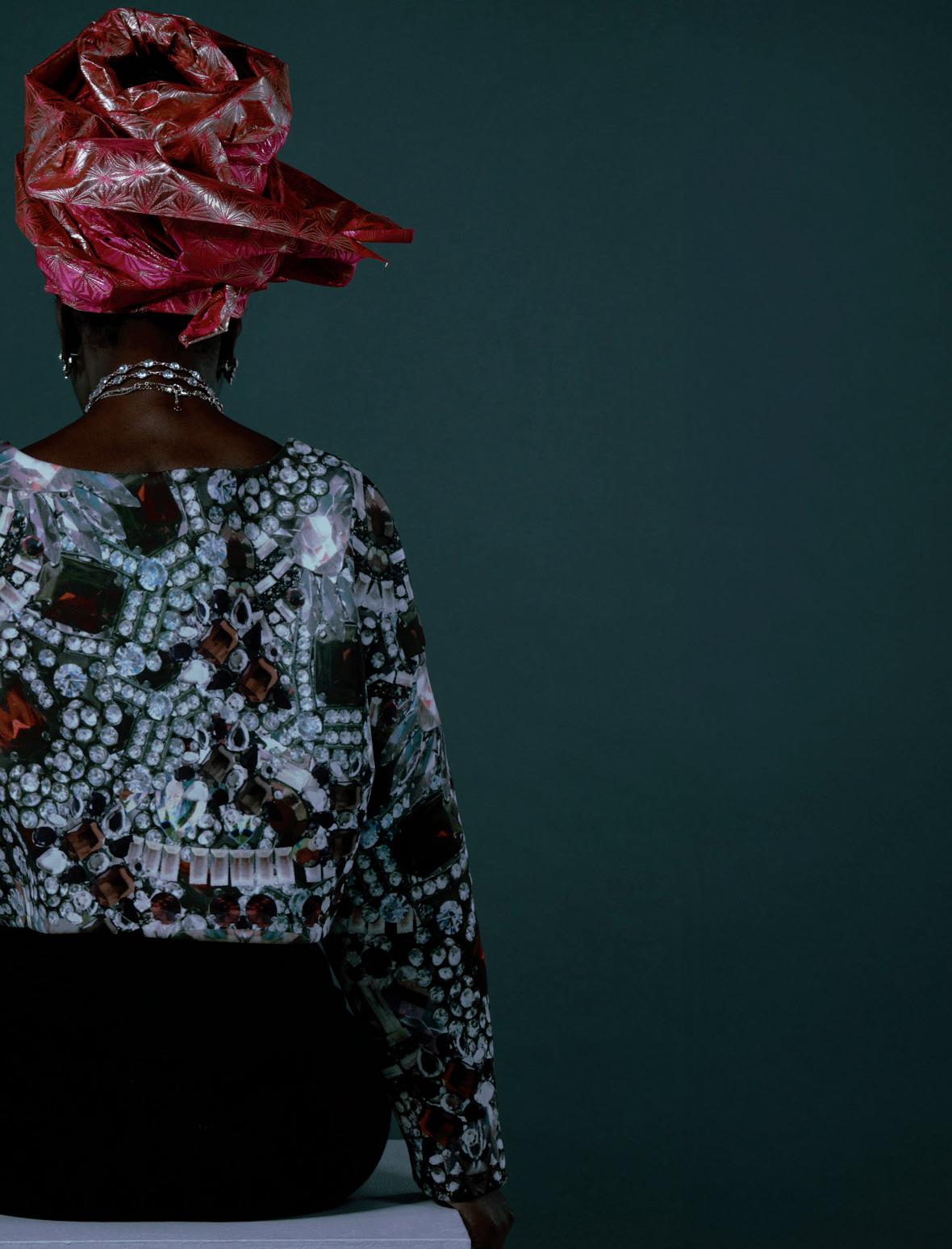
Working with Police Academy star and beatboxer Michael Winslow in the US taught me that hip hop didn't have to be about how hard, tough or sexy you could be. Instead, it’s a chance to make real music and real art. I accepted there and then that, like most women in hip hop, my contribution may be written out of music history, but it would forever be preserved in the hearts and minds of those who came to see me perform live, bought my merchandise and loved me because I refused to conform. I never exploited myself or made anything less than pure, unadulterated art, and what I have now is dignity, clarity and success.
Where we are today is a beautiful thing. Artists can take control of their own destiny by using technology and social media to forge a path of their own, while many institutions in the industry are finally trying to give a voice to the voiceless. But, of course, we still have more to do.
M Magazine | 17
‘Playing on the same bill as DMX did enough to quench my thirst for music after decades in the game.’
MF DOOM ENIGMATIC RAP RACONTEUR
 By Oumar Saleh
By Oumar Saleh
Blessed with an ability to ‘order rappers for lunch and spit out the chain’, Daniel Dumile was one of the best to ever pick up the mic. M examines the man behind the MF DOOM mask to appraise the late London-born rapper’s hugely influential career, multiple personas and distinctive legacy.
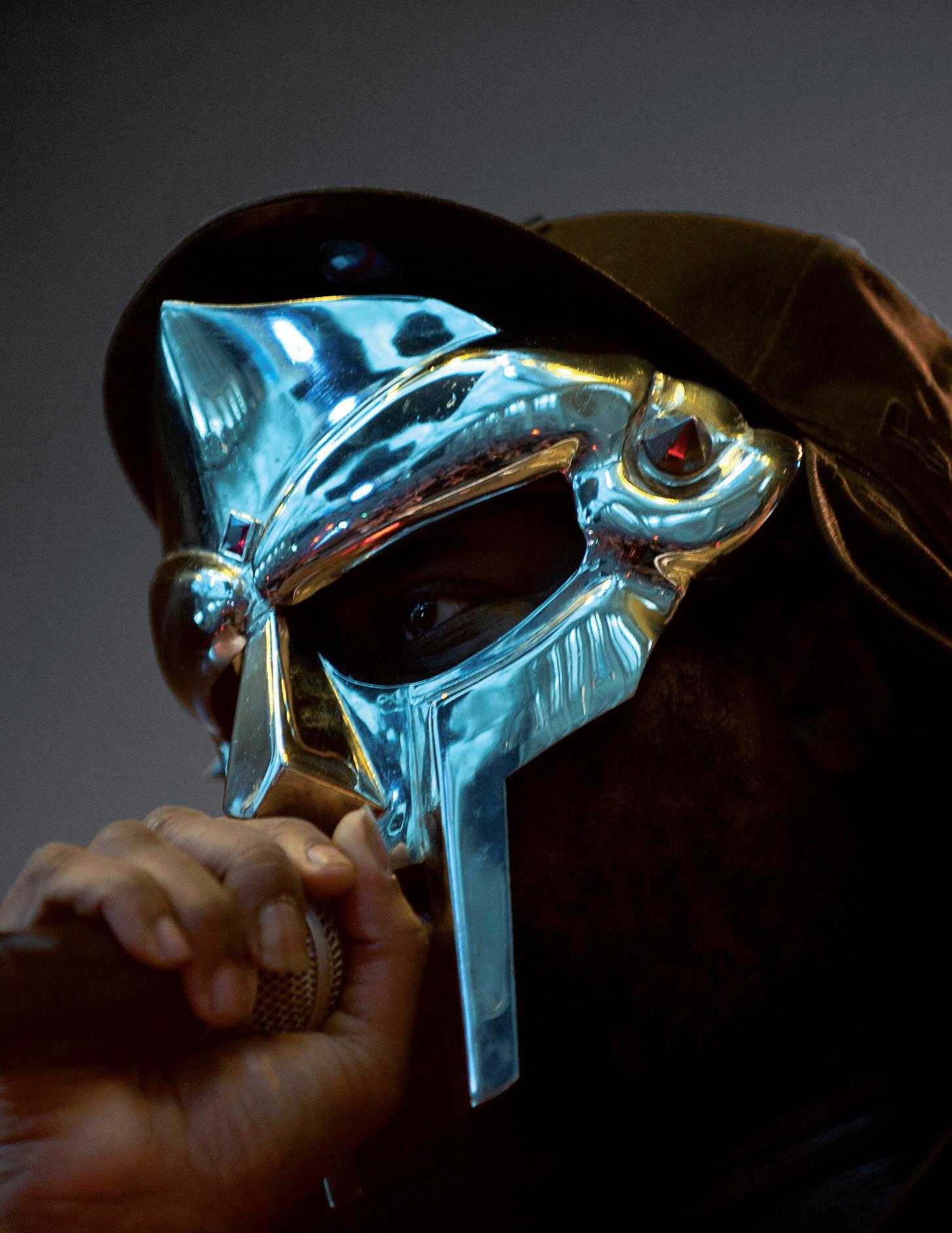
M Magazine | 19
If you’ve been anywhere around Glasgow, London, Manchester or Leeds, chances are that you will have stumbled upon an MF DOOM mural. Featuring his name in all caps (like the man demanded) and his iconic metal mask, the vibrant artwork that reflects the technicolour oeuvre of the enigmatic rap raconteur has been sprawled across buildings, underpasses and bus stops since his untimely passing in October 2020. Considering that the London-born DOOM spent most of his life across the Atlantic, the UK graffiti dedicated to rap’s ultimate supervillain is testament to how much these shores embraced him.
Born on July 13, 1971 in Hounslow, Daniel Dumile and his family swiftly relocated to Long Beach, New York. Inspired by KRS-One and DJ Scott LaRock’s Boogie Down Productions, Dumile formed the hip hop group KMD along with his brother Dingilizwe. The siblings adopted new monikers (Dumile went by Zev Love X, while Dingilizwe became DJ Subroc) and quickly won fans with their effervescent 1991 debut record Mr. Hood, which balanced socially conscious raps with Sesame Street shoutouts. Tragedy struck, however, in April 1993 when Dingilizwe was killed in a car accident, aged 19. Compounding the misery, KMD were dropped by their label a year later, in part due to the latter’s reported objection to the incendiary cover art of KMD's second album Black Bastards, which featured the group’s 'Sambo' character hanging from a noose.
His spirit crushed by these overwhelming setbacks, Dumile vanished into obscurity for several years. Vowing to unleash revenge on the music industry that failed him, he began to invade open mic nights at Manhattan’s Nuyorican Poets Cafe with a stocking cap concealing his face; Zev Love X’s exuberant flow and idealistic witticisms replaced by a grizzled demeanour and grandiose ambitions. The cap soon gave way, though, to a metal face visage: spying a kindred spirit in the Fantastic Four’s archnemesis Viktor von Doom, whose origin story eerily resembled his own, these drastic creative shifts were the prelude to Dumile's final form as MF DOOM. As the antithesis to Puff Daddy and Bad Boy Records’ ‘jiggy rap’ that dominated the airwaves at the tail end of the ‘90s, MF DOOM’s debut LP Operation: Doomsday was a lopsided, disorienting masterpiece that forever changed underground rap. Juggling bleakly comic lyricism, wonky lo-fi beats and offbeat samples (ranging from ‘60s cartoons to old-school monster movies), Operation: Doomsday was heralded upon its 1999 release as a future cult classic.
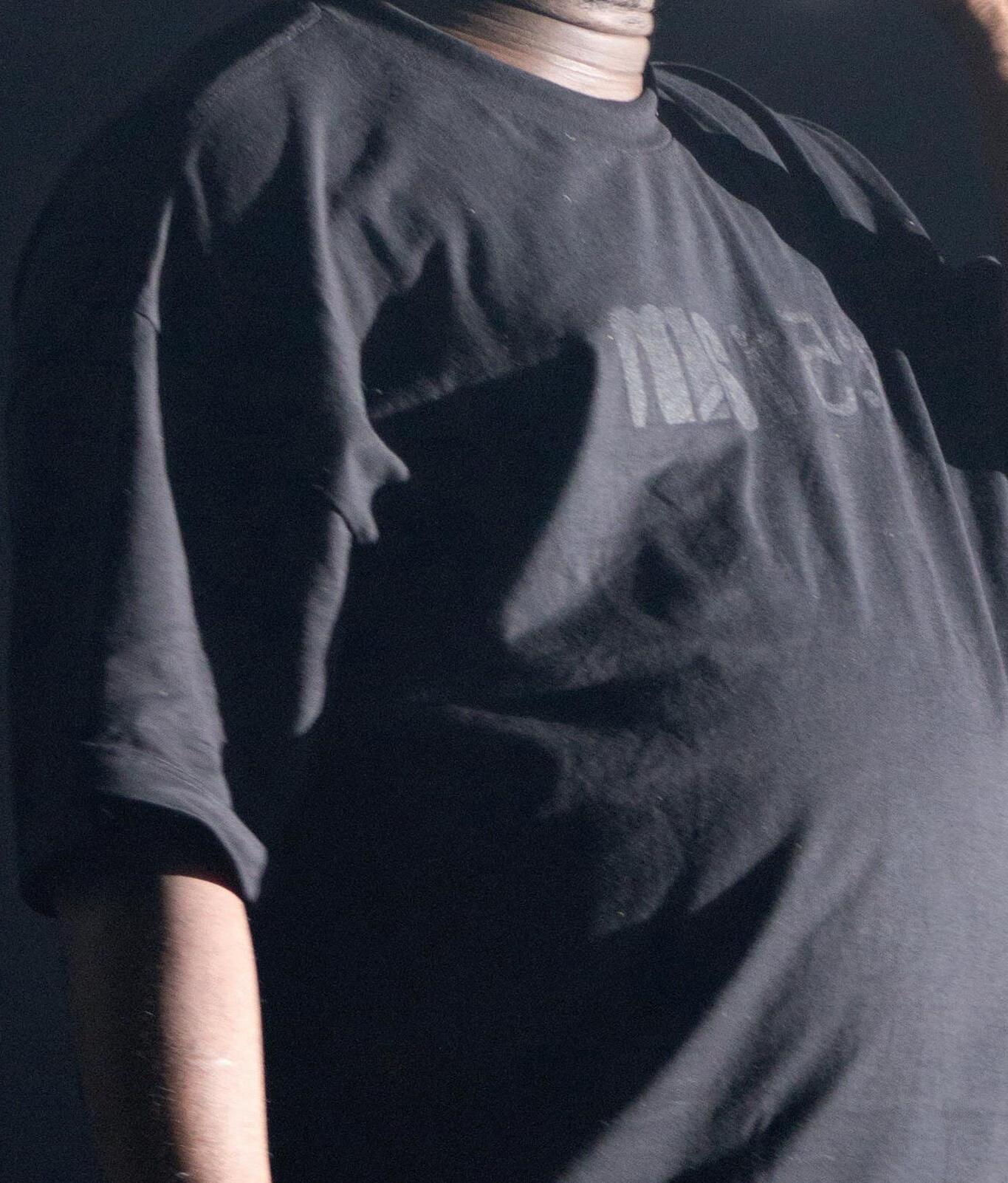

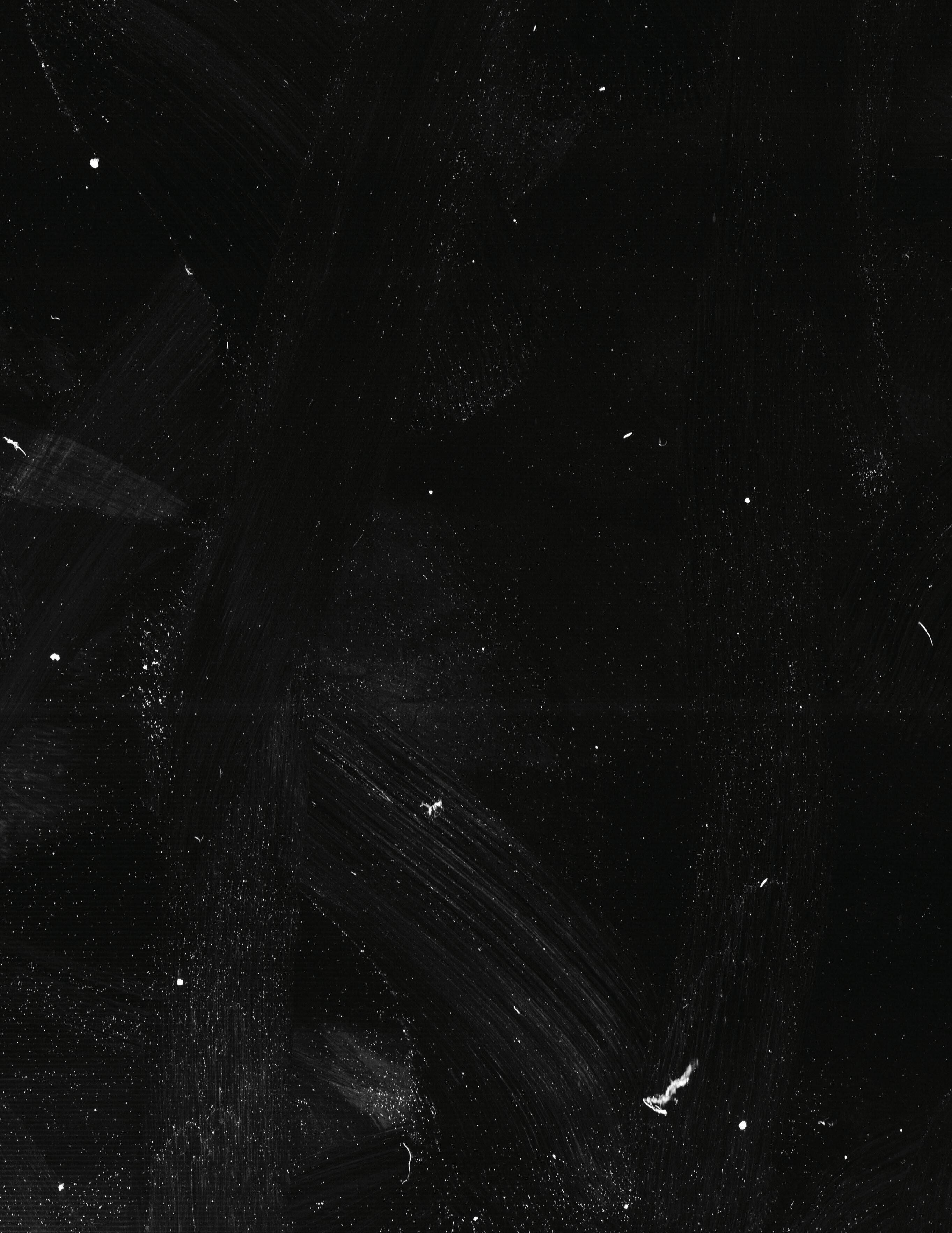
Radiohead frontman Thom Yorke practically hailed DOOM as rap’s James Joyce.
What followed Operation: Doomsday is the stuff of legend. DOOM ushered in the new millennium by releasing a host of projects over a 17-month span from 2003-04, introducing the world to an ensemble of artistic personas in the process. In June 2003 he dropped the distorted space concept odyssey Take Me to Your Leader as the three-headed King Geedorah, an intergalactic horror straight out of the Godzilla Monsterverse. As cocky hoodlum Viktor Vaughn, he assumed another fearless alter ego that cared for little outside of trapping and time travelling on September 2003’s compelling Vaudeville Villain — a grittier, grimier album compared to its predecessors.
Most notably, MF DOOM starred alongside his musical soulmate Madlib on March 2004’s Madvillainy, considered by many to be both the rapper and producer’s magnum opus. Joining forces as Madvillain, the duo combined stoner rap aesthetics, obscure comic book references and avant-garde soundscapes to create one of this century’s most innovative albums. Overcoming a leak that occurred a few months before the record officially dropped, Madvillain justified the hype that preceded the final re-recorded version as DOOM’s lyrical chops were enhanced by Madlib’s pristine production that deftly toed the line between soulful and spaced-out. Even the subject matter went to another stratosphere, with both DOOM and Madlib’s alter egos making memorable appearances: the raucous America’s Most Blunted saw Madlib face off against Quasimoto, while Vik Vaughn’s romantic laments on Fancy Clown became renowned as rap’s first-ever self-diss track.
a tantalising preview of their planned DOOMSTARKS album, which sadly never came to fruition. Other notable collaborations, however, did materialise: DOOM’s dense discography includes fruitful partnerships with the likes of Gorillaz, BadBadNotGood, Czarface, The Avalanches and Westside Gunn.

Away from the music, Dumile faced an ultimately unresolved battle to return to the US after he was denied re-entry in 2010 following a European tour (in what was only his second international excursion as a touring musician). Despite never becoming a naturalised American citizen, he assumed that his American wife and five children would be enough to secure his return. However, not even a supervillain like MF DOOM could defeat the complex US immigration system, leaving Dumile to vow that he was 'done with the United States'. After proudly proclaiming in a BBC Radio 1 interview in 2012 that he was finally in possession of ‘the right colour passport', he quickly set about adopting British customs in his music, gleefully referencing the Cockney accent (‘hello, guvnor!’) and vintage UK TV in August 2012’s Key to the Kuffs, a collaborative album with abstract indie beatsmith Jneiro Jarel. Though isolated from family and friends at the time, Dumile’s enforced exile further exhibited DOOM’s skill in adapting to whatever challenges life threw at him.
DOOM’s next move? The November 2004 solo LP MM.. FOOD, a much more triumphant affair than his previous works. Beginning with the declaration 'Operation Doomsday is complete!', MM..FOOD was littered with the kind of absurdist musings and punchy multi-syllabics that went way beyond the ostensible edible-fuelled tributes to his favourite foods. Beef Rapp explored the collective obsession with clout years before social media engulfed the zeitgeist, while Deep Fried Frenz was a funky tribute to the true meaning of friendship.
After such a prolific run, DOOM’s next — and, as it would turn out, final — solo studio album arrived five years later with the Charles Bukowski-inspired Born Like This, which saw DOOM team up with fellow rap luminaries Raekwon, J Dilla and Ghostface Killah. Having previously worked together on projects like DOOM’s October 2005 collaborative album with Danger Mouse (The Mouse and The Mask), DOOM and Ghost’s off-kilter Angelz offered
Before he left this mortal realm, artists spanning numerous genres were quick to point out how DOOM had shaped their artistry and sound. Joey Bada$$ took inspiration from DOOM’s eclectic production on the Special Herbs beat tapes for his own debut record, while the oddball joie de vivre of Tyler, the Creator and Earl Sweatshirt quickly earmarked them as apt successors to DOOM’s Operation: Doomsday persona. Enamoured by how 'an entire album without hooks can sound so good', Danny Brown’s uncompromising style was directly influenced by Madvillainy. Well before he ascended as the world’s premier R&B crooner, The Weeknd’s early career mystique was clearly modelled after Dumile’s penchant for anonymity (while the mask worn on stage by the former during his recent After Hours til Dawn stadium tour seemed to be a direct homage to DOOM). Radiohead frontman Thom Yorke, who previously said that DOOM was his favourite rapper, practically hailed him as rap’s James Joyce by praising how he ‘would free-form his verses' like no one else.
In a weird way, it almost makes sense that Dumile’s passing at the age of 49 was announced two months after it actually happened in October 2020. After all, the man behind the metal face thrived in the shadows, going as far as to send in impostors to appear at gigs on his behalf during his peak years. Despite his ostentatious personas and often outlandish subject matter, MF DOOM was borne from a sad origin story of disillusionment at the music industry for discarding him so early on in his career. The outpouring of grief and heartfelt tributes upon his death becoming public knowledge only strengthened Dumile’s standing as a rap savant with incomparable pop culture acumen. There won’t be many after him to have such an iron-clad legacy.
M Magazine | 21
MF DOOM’s debut Operation: Doomsday was a lopsided, disorienting masterpiece that forever changed underground rap.

'What I really got from meeting these people who are now recognised as icons was how human they were.’
Hip hop’s visual historian
As he opens up his photographic archive of ‘90s hip hop legends, the UK photographer tells M about sitting down with Biggie, hanging out with Wu-Tang Clan and the biggest creative lessons he learned.
'I remember the first time I heard Main Source's Live At The Barbeque on the radio in 1991: everybody went nuts as it was the first time they’d ever heard Nas spit,’ Tee Max tells M as he casts his mind back to the first time he heard the New York rap legend, who he would photograph three years later. ‘Nobody knew who this kid was. When he came to the UK to do press for the first time, some of Illmatic had been played on the radio. But did I know he was going to be going to become an icon? No, I was just a fan of the guy.’
It was, Tee continues, ‘the same thing’ when he encountered The Notorious B.I.G. ‘Biggie was somebody who had been played on the radio constantly; everybody was really looking forward to his debut, Ready To Die. So the opportunity to be able to sit in the same room with him, let alone take photographs, was amazing. But, back then, I was just a fan of the music: the things Biggie and Nas were saying, how they were coming across and the stories they were telling in their music hadn't been told in that way before. People take those things for granted now, but what they were doing in hip hop at the time was revolutionary.'
Armed with his trusty camera, Alder White — AKA Tee Max — was able to get up-close-and-personal with a host of hip hop and R&B legends throughout the ‘90s. Documenting the likes of OutKast, Beyoncé and Busta Rhymes in their formative days, the photographer amassed an impressive archive while simultaneously ‘discovering who I was as an individual, creativelyspeaking’. Having kept much of his work from this momentous time out of the public eye since withdrawing
By Sam Harteam Moore
from the scene at the turn of the millennium, Tee has only recently begun to share his candid and striking shots with the world through exhibitions such as The Ascension Years at Brixton’s Black Cultural Archives.

'It was about me being able to somewhat more dispassionately look back at what I’d done,’ he tells M about his newfound willingness to exhibit his work. ‘Even when I started taking photographs, the notion wasn't that I was going to be somebody taking images for a magazine or a record company: I just did it because I really loved doing it. When people were saying to me in the late ‘90s, "You should put these in a gallery": why the hell would anyone want to go see my work in a gallery? That's absurd. It took me another 10 years after that to actually get exhibited on a wall, and that was only because I really liked the space.
‘Fast forward to now: if you ask me whether or not my work should be in gallery spaces, hell yeah! It should be in all the major gallery spaces now. It’s been a journey.’
M caught up with Tee to get his memories of working in music photography during the ‘90s, the biggest lessons he’s learned as a creative and what it’s really like to hang out on a Wu-Tang Clan video shoot.
Your photography career started when your mother gave you a camera at the age of 11. When did you start to fuse your love of photography with music?
'I studied photography during sixth form, which taught me how to print, load and process film. I then started taking my camera out and going to live shows and outdoor
M Magazine | 23
Main image: Busta Rhymes photographed by Tee Max
events, like Notting Hill Carnival. It was always interesting how people reacted to you at these events when they saw you with a camera, because there weren't that many people with cameras at that time.’
Opportunities to shoot some big names started to materialise as your profile rose. How did these commissions typically come about?
‘The main purpose of these artists being in the UK was to do live shows, so record companies would see it as their opportunity to get some press behind each artist. I’d get sent to the hotels they were staying at around London, and I’d either be in a hotel room, or the foyer, making the best of whatever I've got, which added another level of complexity to it because, for the most part, hotel rooms are not very attractive. It was really frustrating sometimes because you want to be more creative, but you have a certain amount of time on a certain day and that was pretty much it because the artists are only in the country for as long as it took them to do the show and then be on a plane to wherever else they're going.'
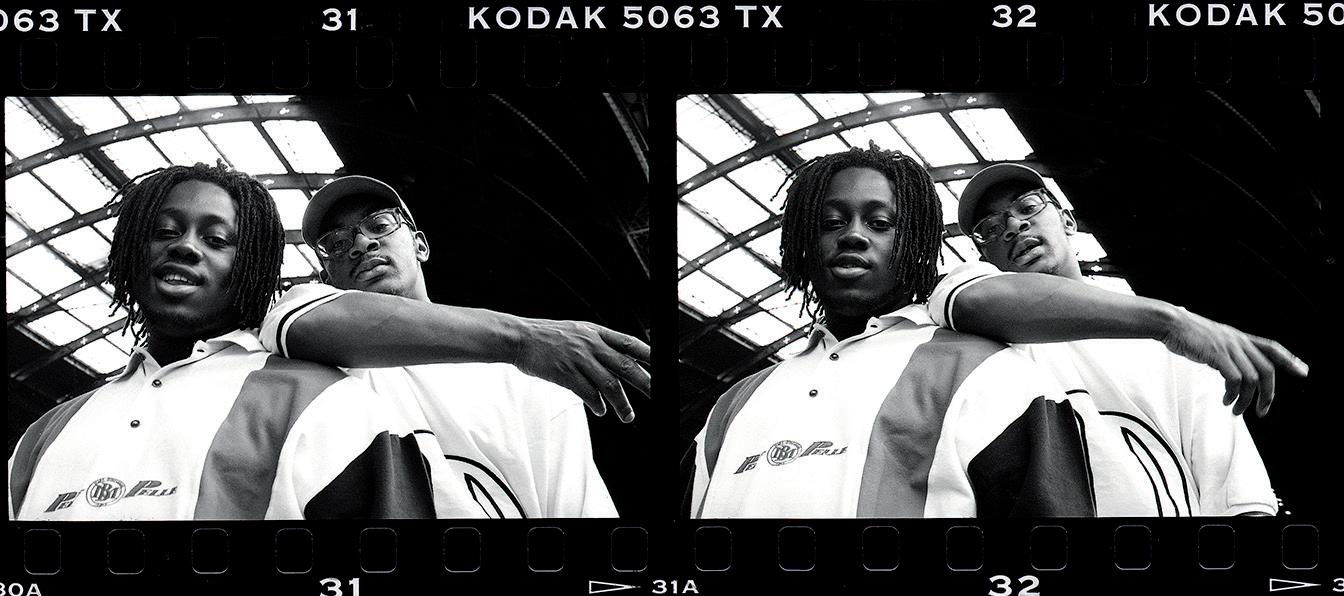

Do you have any particular favourites from your photographic archive?
'It's tough, as there’s tonnes of images I’m really looking forward to getting out in the world at some point. The Biggie images are some of my favourites because, y'know, it's Biggie. I can say it now: it's a really strong image. I love the image I've got of Nas because it spoke to who I met that day specifically. Again, I'm expecting a really braggadocious individual, but what I'm getting is a very introspective young man — and I got that in the image. One of my favourite images compositionally is Da Brat, just because of how she's posed [and] the depth of field is really nice.
‘I've got a shot of Keith Murray that I love because there must have been five or six other photographers in the room with me. We all had to get photographs somehow, and you're not usually in that kind of situation where there's literally somebody over your shoulder watching what you're doing. But the image I
This page pictured from top L-R: Fallacy & Fusion; Mary J Blige; LL Cool J; Shortee Blitz and TY
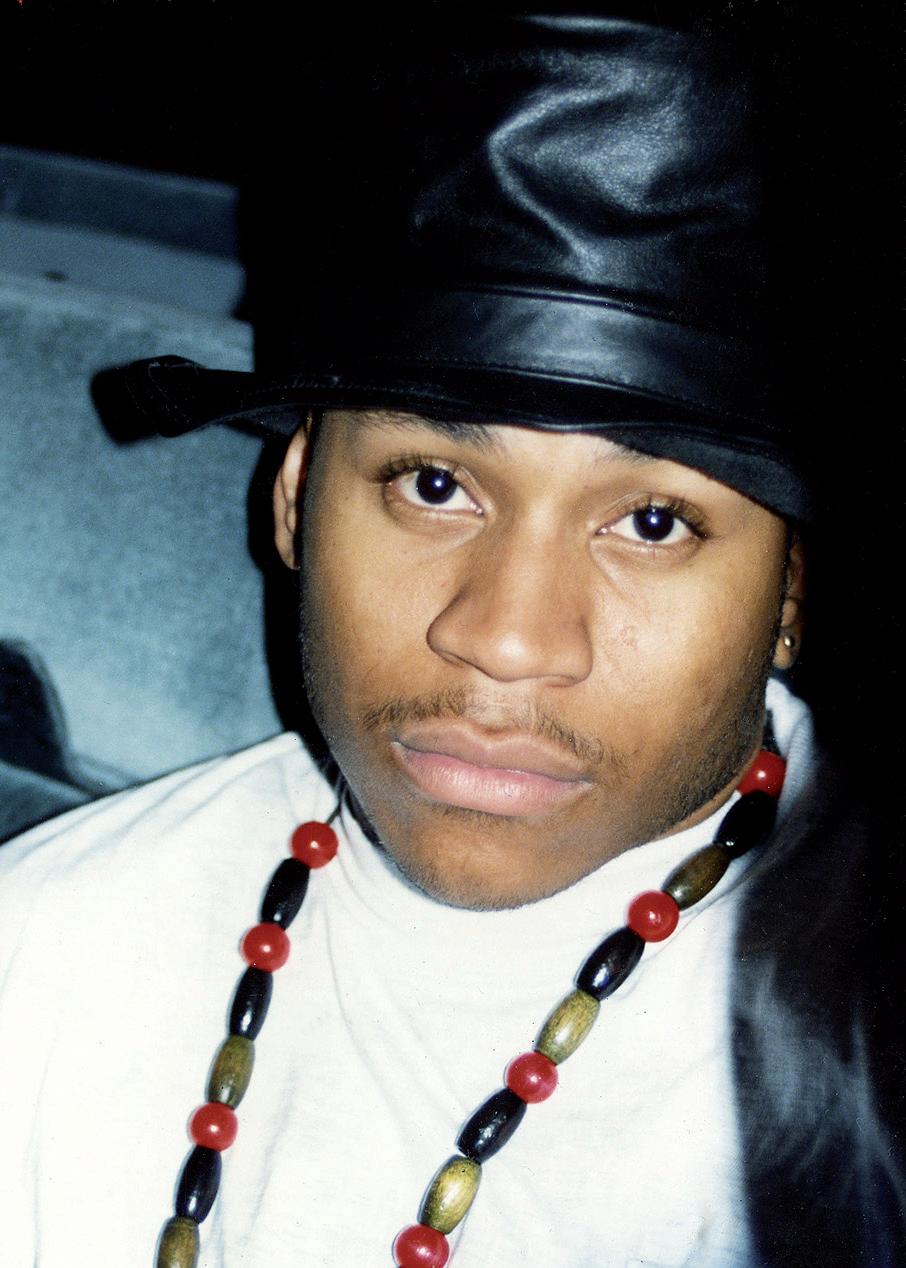

Opposite: Method Man
All photos by Tee Max
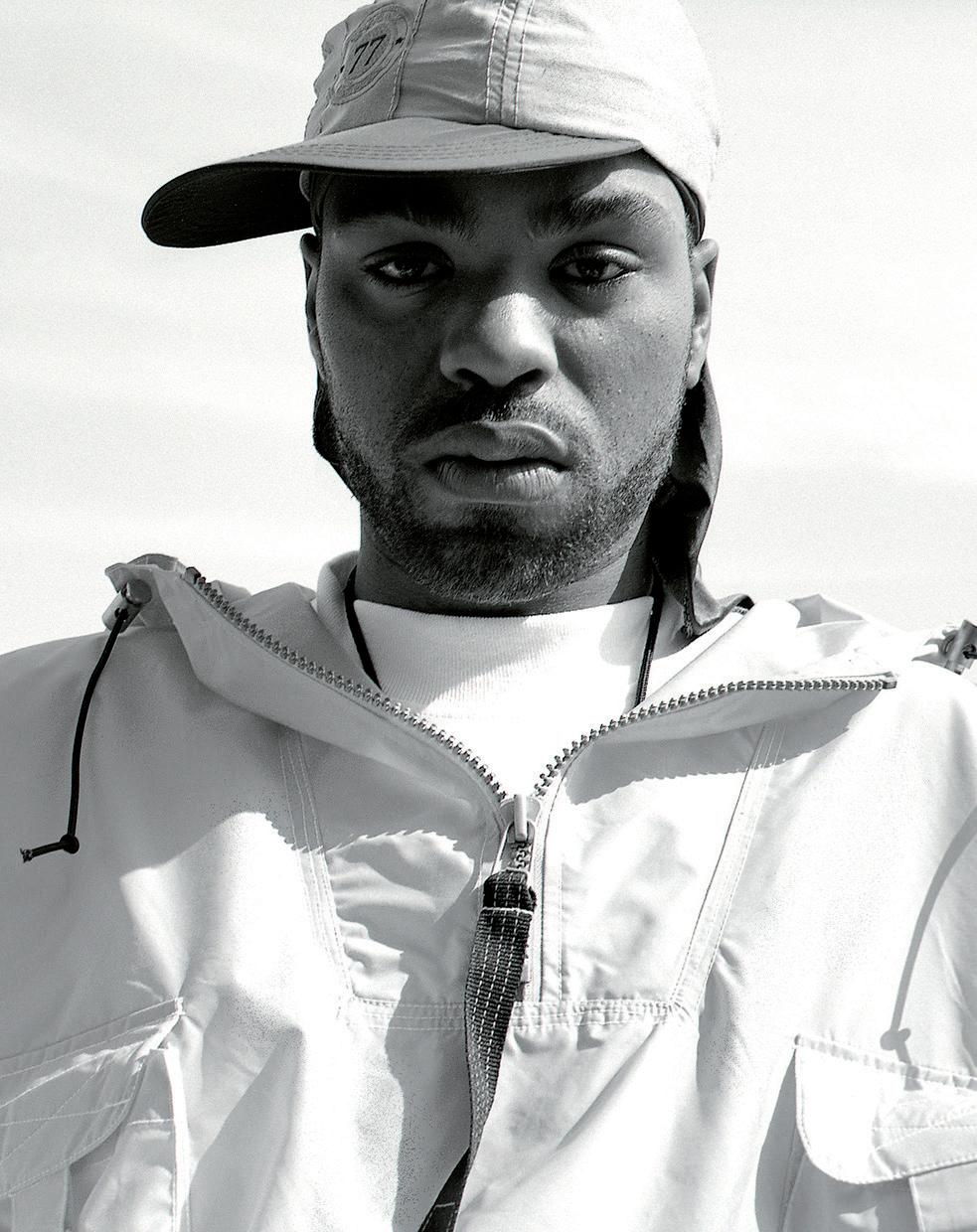
M Magazine | 25
‘I really thought Method Man hated my guts, but he was just messing with me — we got the best interview footage ever.’
This page pictured from top L-R: Da Brat; Skinnyman; Maxie Priest; Nas; Shy FX

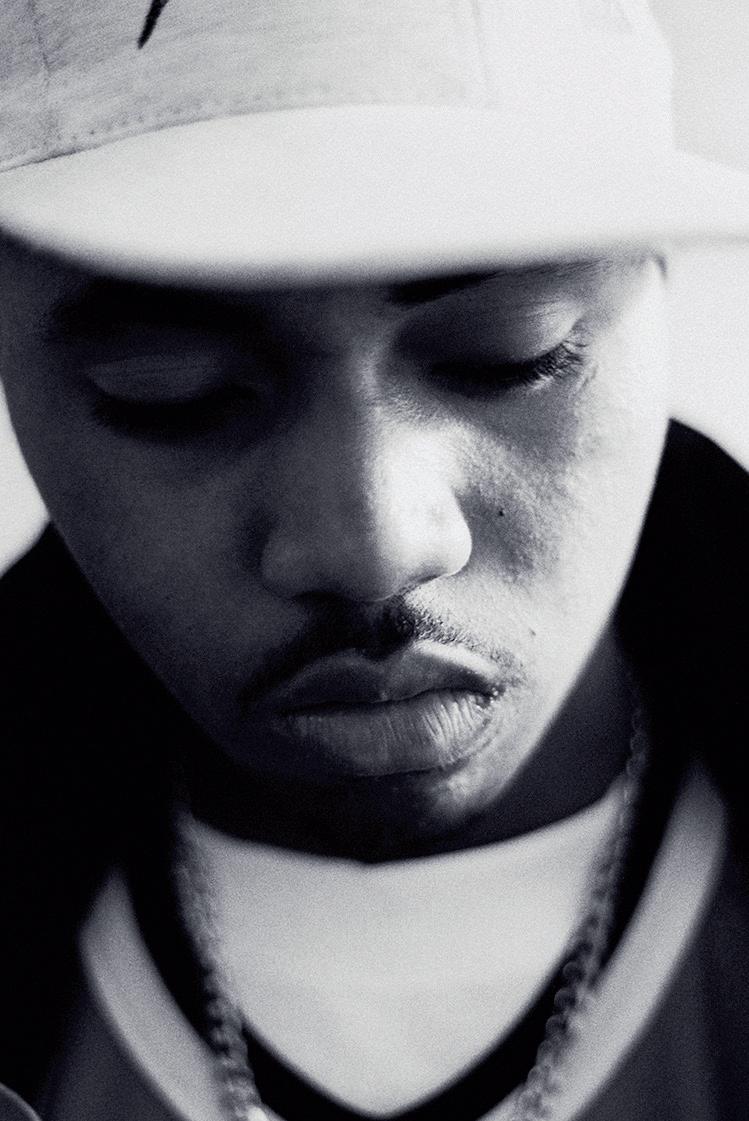

Opposite: Coolio

All photos by Tee Max

‘What the likes of Biggie and Nas were doing in hip hop in the early ‘90s was revolutionary.’
got from it, I really love. What that experience taught me was that it doesn't matter who else is in a room, because they're going to see things in different ways and have different things to achieve. I hadn't been in that situation before, and it taught me that it's all about what you see and how you get that image that you believe is gonna be the one.’
Some of your best work was taken on the set of Wu-Tang Clan’s video for Gravel Pit. How did that experience come about?
'Me and my friend Fusion — Alain Clapham — were working on a show for MTV Base at the time, an opportunity we’d been given completely out of the blue. Our senior producer told us that they had some extra money in the budget, so we pitched to go to LA and found out that Wu-Tang Clan were doing a video shoot there. By the time we got to the shoot it was approaching 120 degrees, and Wu-Tang are all there in their furry, Flintstones-esque costumes: all very regular!
'I had the best interview with Method Man: I really hope one day people get to see it again, because he was not compos mentis at the time completely, but it was a lot of fun. I really thought he hated my guts at the time, but he was actually just messing with me and we got the best interview footage ever. It was so much fun, and I got a couple of nice shots out of it as well. By that time I'd actually taken a break from shooting, but for some reason I decided to take my camera out there, and I'm really glad I did.’
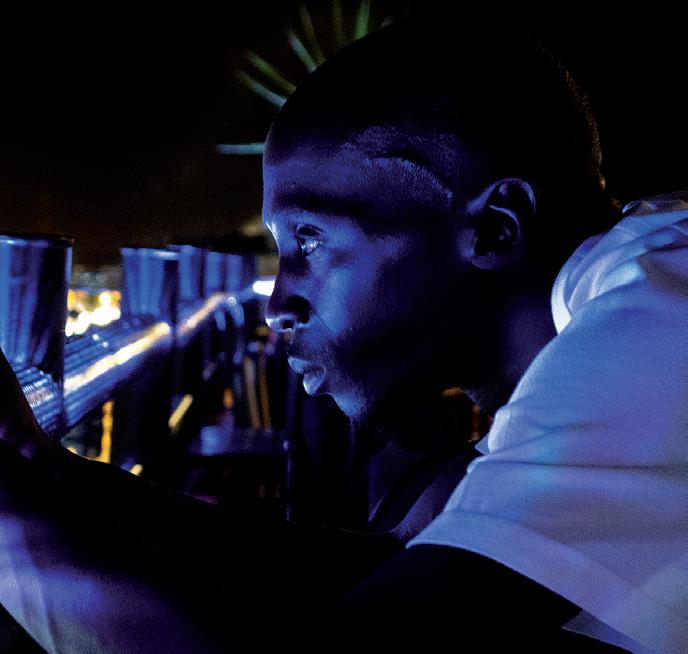
What were the biggest lessons you learned from being a photographer during this era?
'What I really got from meeting these people who are now recognised as icons was — and it sounds really weird — how human they were. They were all very different. We want to homogenise experiences via the little bit of information that we get; the nuance of who you are as an individual isn’t something you're privy to for obvious reasons. Nas was a prime example: listening to Live At The Barbeque, which was him saying quite provocative stuff, you're then expecting this Queensbridge MC with all of that bravado to be sitting in front of you. What I actually got, though, was a really quiet, introspective 19/20-year-old, and it was intriguing.
‘It really illustrated to me that you have to be open to that human element of things. It was the ‘90s and it was very easy to pigeonhole people, particularly when it came to young Black men talking about things that are very viscerally challenging in terms of their lifestyle, the things they see and how they perceive and put things across. If you're not of that world or mindset and you're coming from somewhere completely different, it's a very challenging thing to hear and listen to. For the most part, it just seems either too incredible or too traumatising. There was that juxtaposition between somebody who's been brought up in the projects, where they're seeing
real world, first-hand accounts of simply being able to survive in a very real way, and a Black kid who lived in the suburbs in a predominantly very white middle-class area. These two worlds are worlds apart, but in the culture and dialogue that's being expressed through music, there was now a window to see what that individual sees. It's just allowing people the space to be able to be human.'

M Magazine | 27
Tee Max photographed by Ahmed Akasha
‘When Dave took to the piano at the 2020 BRIT Awards and branded then-Prime Minister Boris Johnson “a real racist”, the news cycle ran for days.’
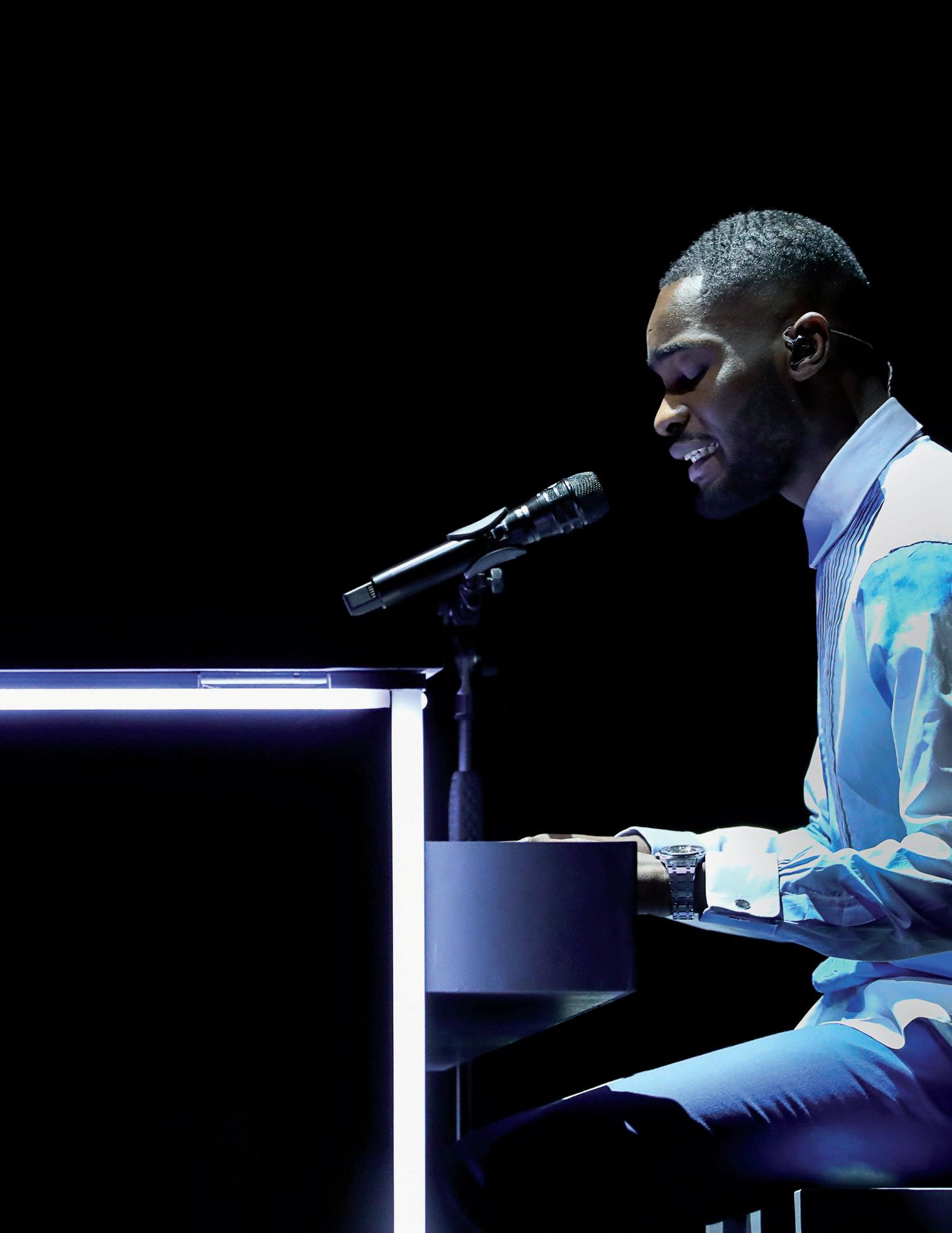 Photo: JM Enternational
By Will Pritchard
Photo: JM Enternational
By Will Pritchard
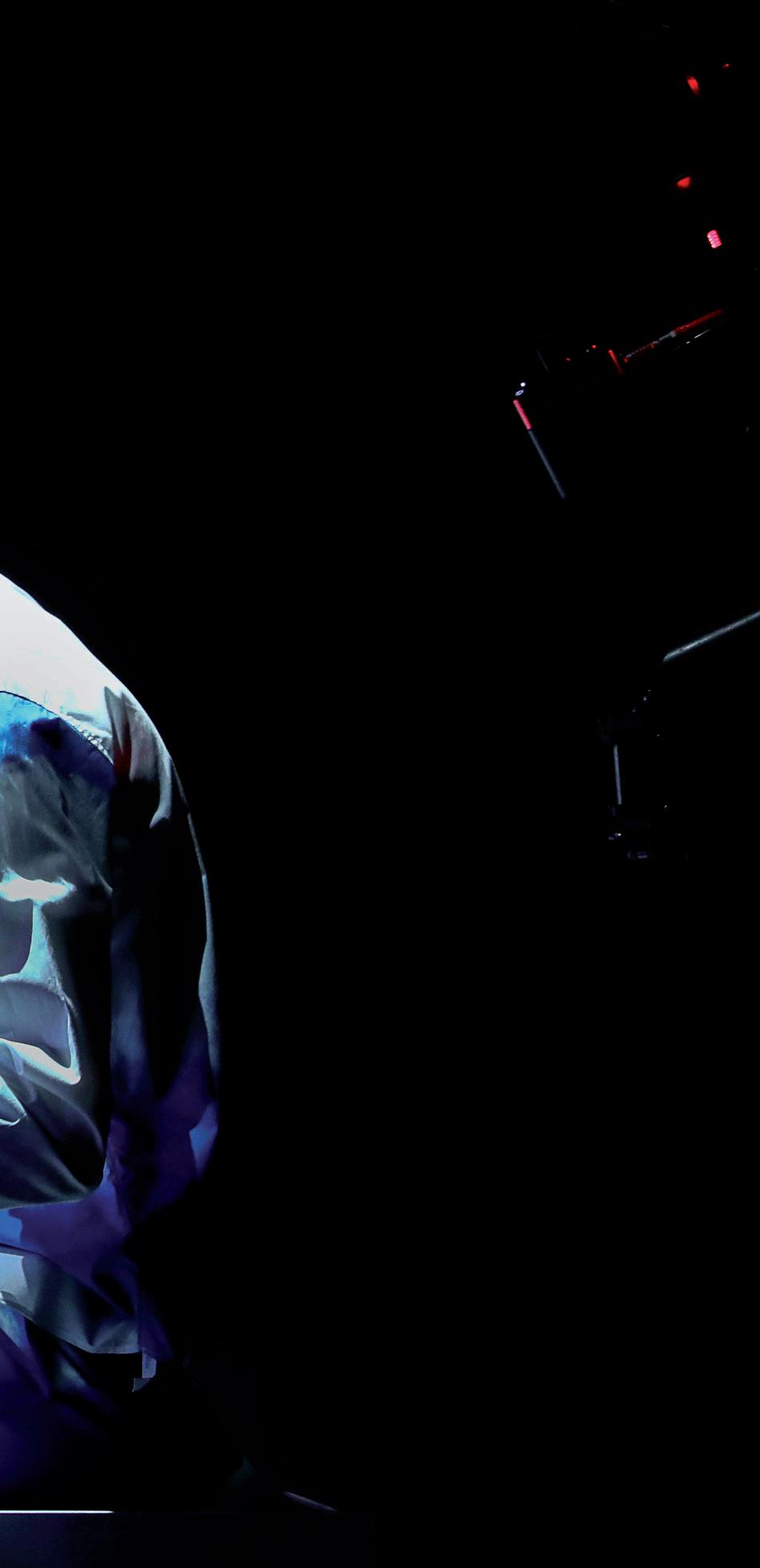
Rebellion runs through hip hop like the grooves on a 12-inch record. It’s impossible to unpick the sound’s defining characteristics from its liberational roots, which were built on samples of expressive, subversive jazz and funk tracks that mirrored the rhythmic structures of slave songs, themselves passed down from the cotton fields and the Underground Railroad to segregated public housing ghettos and the streets that snake out from them. US rappers and MCs have sailed over these beats for half a century and counting, speaking ignored truths to entrenched powers. This is just as true of the UK’s homegrown hip hop pioneers, who wove their own narratives of struggle and release through a tapestry of US-inspired sampling and postWindrush sound system culture.
It was the early 1980s when David Emmanuel, performing under his Smiley Culture stage name, began experimenting with a ‘fast chat’ style of reggae toasting over the scooped bass bins of the Saxon Studio International sound system. In a manner that mirrored his boom-bap counterparts in the boroughs of New York, he found slim pockets between the rumbling dub basslines and clattering hi-hats and snares to fill with his whipsmart observations about life as a Jamaican in south east London. His 1984 debut single Cockney Translation offered a guide to East End dialect, swapping cockney offhands for patois aphorisms and foreshadowing the 21st century’s boom in multicultural London English in the process.
But laced in with Smiley’s cheeky chappy persona were stark stories about the realities of the prejudice Black people living in the UK faced at the time. His second hit single Police Officer, also released in 1984, recounted a common instance of police harassment: Smiley is pulled over by the cops, but the story takes a turn as the policeman hassling Smiley eventually recognises him (‘You what? Did you do that record, Cockney Translator?’) and requests an autograph in return for letting him go.
M Magazine | 29
From Smiley Culture calling out everyday prejudice on Police Officer to Stormzy verbally targeting a Prime Minister while headlining Glastonbury, UK hip hop artists have never been afraid to speak out. M explores the roots of the genre’s rebellious streak.
Some 27 years later, another encounter with police would end tragically for Smiley as he wound up dead during a raid on his home. An inquest returned a verdict of suicide, but Smiley’s family — who were never shown the report produced by the Independent Police Complaints Commission — have strongly disputed the finding.
While Smiley’s music in the 1980s was released against the backdrop of race riots in south London, sparked by heavy-handed policing of the Black community in Brixton, his death — and the suspicious circumstances surrounding it — would add tinder to a fresh pile of tensions years later that would ignite with the shooting of Mark Duggan by police in 2011. London, Birmingham, Bristol, Coventry, Derby, Leicester, Liverpool, Manchester and Nottingham burned through a summer of what was the most significant stretch of civil unrest in modern British history.
( Council Estate Of Mind ) built cult followings with their unfiltered visions of the lives of the overlooked, underserved and discriminated-against. Despite a common tendency among the wider public, and those in power, to dismiss rappers as either dangerous or clownish, over time their voices — and audiences — have grown to the point of being unignorable. By 2017, grime MCs were being sought out to rally votes, under the somewhat clunky #Grime4Corbyn banner, for a shift in the political status quo. When Dave took to the piano at the 2020 BRIT Awards and branded then-Prime Minister Boris Johnson ‘a real racist', the news cycle ran for days.
The distinctly Black British meld of sound system delivery and forthright, observational lyricism plied by the likes of Smiley Culture and contemporaries like Tippa Irie and Maxi Priest would be picked up by 1980s UK hip hop crews like London Posse, Cookie Crew and Demon Boyz. Their songs balanced braggadocio with brotherhood that extended across borders, while throwing off the fauxAmerican accents that, until then, were commonplace among homegrown British hip hop artists. In the late ‘80s and early ‘90s, the Black Rhyme Organisation to Help Equal Rights (or B.R.O.T.H.E.R.) supergroup brought together rap acts and reggae MCs for a string of releases protesting apartheid policies in South Africa and innercity gun crime, while also raising funds for sickle cell anaemia research. When groups like N.W.A. and Public Enemy brought their brands of firebrand rap activism to UK shores, it was the likes of London Posse they brought along to tour with them.
These early forays would ultimately lay the foundation for the many future iterations of underground UK hip hop culture — and the activist helix in its DNA would continue to be passed down as subsequent generations of beatmakers and rappers produced new evolutions. By the mid-'00s, rappers like Akala and Lowkey had taken up political loudhailers, while the likes of Klashnekoff (with his debut album The Sagas Of… ) and Skinnyman
For all those artists taking the fight to political powerbearers, there are just as many UK rappers who’ve found success and then turned their attention more directly to their communities. Not content with dropping their backto-back 7 Days and 7 Nights mixtapes in 2017, Croydon duo Krept & Konan established a youth work project, The Positive Direction Foundation, at the secondary school Krept himself had attended, providing working-class kids in their neighbourhood with access to creative workshops and the chance to expand their horizons. Before his death in 2022, SB.TV founder Jamal Edwards established a network of youth centres, with the similar aim of plugging a gap in youth service provisions following more than a decade of government-led cuts to the sector. Road rapper Nines took an even more direct approach to supporting his community: handing out hundreds of Christmas turkeys to his Church Road estate neighbours while filming the video for his mixtape hit My Hood in 2011.
Given the linguistic dexterity required of the form, it’s hardly surprising to see hip hop artists’ words proving so potent. For some, this has extended beyond the recording booth. Akala’s charisma and ability to articulate complex ideas of class, race, colonialism and structures of oppression — and to do so in way that is not only informative, but invigorating — has made him something of a modern-day apostle. While his ideas were laid out in thorough, practical detail in his 2019 polemic memoir Natives, they’re arguably most widely known from a clip of him dismantling Stephen Yaxley-Lennon (better known as EDL founder Tommy Robinson) during a 2013 episode of the BBC Three debate show Free Speech — footage which does the rounds with reassuring regularity.
As a growing handful of UK MCs have begun to achieve household name status, their role as advocates — and agitators — has only become more significant. Stormzy has used his profile (and deep pockets) to fund everything from a publishing imprint focused on supporting writers from under-represented communities to Cambridge scholarships for Black students. And when actions alone won’t suffice, he’s proven adept at picking his moments
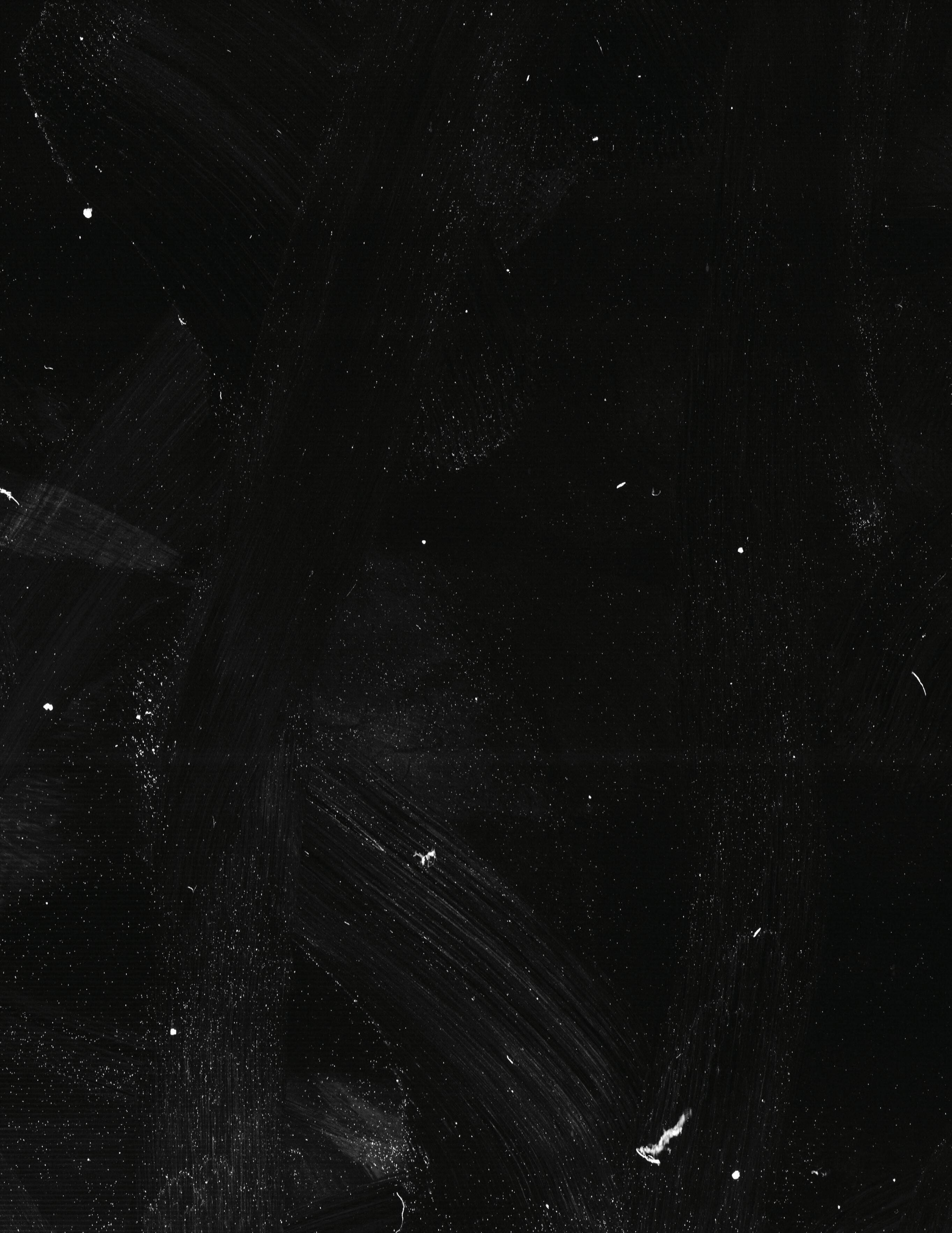
‘As UK MCs have begun to achieve household name status, their role as advocates has only become more significant.’
to make his voice heard: be it calling out the government’s response to the Grenfell disaster while performing on stage at the 2018 BRITs, donning a symbolic Union Jackstreaked stab vest for his Glastonbury headline slot, or saving a tee-up call-and-response line on his 2019 hit Vossi Bop for a since-disgraced former Prime Minister (‘Fuck the government, and fuck Boris’).

Yet despite being a fixture of contemporary popular culture, homegrown UK hip hop is still forced to strive against every odd. In recent years, MCs have found themselves being forced to defend their artistry against heavy-handed attempts at state censorship, including the use of terrorist legislation to restrict how acts can
release and perform their music. Rap lyrics have an increasing presence in criminal court rooms in the UK too, where they’re used to prove guilt or propensity for serious criminality. These developments reflect not only a latent prejudice against Black art forms, but a broader misunderstanding of the communities they grow from — and presents yet another front for activist-minded artists to fight on.
But history, and all the fight and fervour that comes with it, is firmly on the side of hip hop here. As more fans and followers come to learn of the genre’s radical, resistant roots, it’ll be their voices joining in to demand a more vibrant, undeniable and fairer future.


M Magazine | 31
'History, and all the fight and fervour that comes with it, is firmly on the side of hip hop.’
Smiley Culture
Powering up PRS Foundation:
PRS Foundation has been investing in the future of UK music for nearly 25 years. Having previously supported the likes of Little Simz and Dave, the organisation’s focus on championing hip hop music creators has never been greater than it is today.
By Sam Harteam Moore
As the UK’s leading charitable funder of new music and talent development, the PRS for Music funded organisation has proactively supported some of the country’s most talented music creators. This is particularly true when it comes to UK hip hop artists, with the likes of Little Simz, Dave and AJ Tracey all receiving support from the Foundation at crucial stages in their careers. Vital talent programmes like POWER UP and the Hitmaker Fund, meanwhile, are ensuring that budding creators in the genre and beyond are receiving the necessary funding they need to take their creativity to the next level.
M spoke to PRS Foundation CEO Joe Frankland and POWER UP manager Yaw Owusu to find out more about the Foundation’s continued support of UK hip hop.
How would you describe PRS Foundation’s relationship with UK hip hop?
Joe Frankland: ‘We pride ourselves on offering timely support to exciting new music creators across the UK. Through the expertise of our team, independent advisors and

industry-wide partnerships, we have a strong track record for supporting hip hop artists, songwriters and producers. For decades, creators working in hip hop and associated genres have been pushing musical boundaries and building on varied influences while constantly evolving the sound and pioneering new ways to create music and reach new audiences. In a musical and business sense, the innovation within these genres is mind-blowing: over the last 50 years, the evolution of the industry and the way in which creators and industry professionals work has been hugely influenced by hip hop. This is particularly true in the UK, which has witnessed the arrival of genres like UK rap, grime and drill.
‘However, it’s safe to say that within the grant-making sector and during the Foundation’s early years, hip hop music, and creators working in its associated genres, were not receiving a representative share of grant support. I consider a big part of PRS Foundation’s overall role to be to reflect what’s happening in creative scenes, ensuring that financial and other talent development support is available and helps to nurture and impact the careers of music creators in all
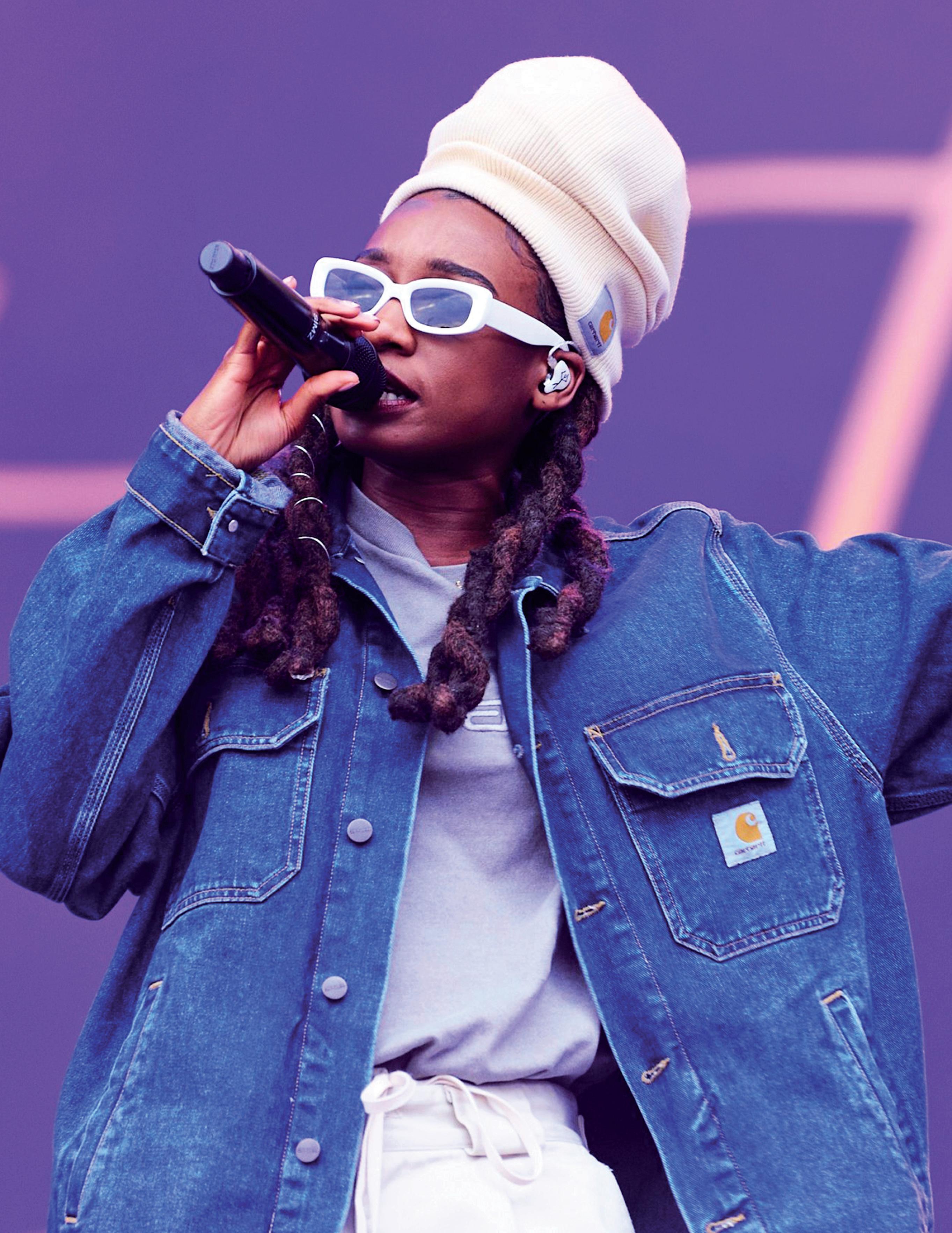

M Magazine | 33
genres. I’m proud that, in recent years, over 10% of the music creators and organisations we fund work primarily in hip hop and rap genres — and over 20% work in Black music genres, including hip hop — better reflecting what’s happening creatively and commercially in the UK. The shift in the last 10 or so years has been huge. I expect this trend to continue and look forward to supporting more incredible members working in hip hop in the coming years.’
Who have been some of the best success stories from this relationship, and why?
Joe: ‘Our funding and support is reaching and helping so many UK artists, writers and producers, it’s hard to pick just a few. But we’re very proud to have supported members at crucial points in their journey including Little Simz, Dave, Bugzy Malone, Ms Banks, Mace the Great, Sanity, Young Fathers and AJ Tracey. Through programmes like the Hitmaker Fund, we’ve also been supporting behind-the-scenes creators like The FaNaTiX, Celetia Martin and Savannah Jada.

‘Many of these creators first accessed talent development support through non-profit organisations we fund, then accessed direct support through programmes such as the PPL Momentum Music Fund or the International Showcase Fund. Aside from being a huge fan of her music, that’s what jumps out to me about someone like Little Simz. She’s been supported by the likes of UD and Roundhouse, had grant support to take her first steps into the US through our International Showcase Fund and was supported earlier in her career through the Momentum Fund. Now she’s one of our country’s finest writers and performers and pays it forward in many ways.’
Yaw, what can you tell us about the work being done by POWER UP?
Yaw Owusu: ‘POWER UP is an ambitious, long-term initiative which supports Black music creators, industry professionals and executives, as well as addressing anti-Black racism and racial disparities in the music sector. As part of the development of this initiative, more than 80 Black music executives and creators came together through themed focus groups to contribute and steer the initiative. We then implemented a consistent strategy through the POWER UP Executive Steering Committee, which is made up of a cross-section of experienced and successful specialists in the areas in which we operate, including Keith Harris OBE, Paulette Long OBE, Ammo Talwar MBE, Sheryl Nwosu, Jackie Davidson MBE and Danny D. We also work with dozens of partners across the music industry including YouTube Music, Beggars Group and the Black Music Coalition.
‘Through our Participant Programme, POWER UP elevates exciting Black music creators and industry professionals and addresses barriers for those at crucial career stages. We cover all genres and are very proud of our work with an assortment of hip hop artists, including the likes of Guvna B, Bemz, Graft, Kasien and L E M F R E C K. We have also supported industry professionals who focus on platforming and developing the genre, such as Glasgow hip hop platform owner Sami Omar, Nottingham hip hop producer and promoter Joe Buhdha and studio owner James Ayo.
‘We are committed to supporting individuals who drive hip hop forward, both from a creative standpoint and in terms of infrastructure. We will continue to do so in the future, alongside our work across all genres.’

‘The PPL Momentum Music Fund helped progress my career as an artist massively.’
– Queen Millz
'I look forward to supporting more incredible members working in hip hop in the coming years.’
– Joe Frankland
To get an artist’s perspective on the Foundation’s important work, M spoke to former Mercury Prize winner Speech Debelle (below right) — who is also a POWER UP creator and has been supported by the PPL Momentum Music Fund — and rising rapper Queen Millz (pictured left) has received grants from the PPL Momentum Music Fund and International Showcase Fund.

This year marks the 50th anniversary of hip hop. What does hip hop mean to you?
Speech Debelle: ‘It feels alive, like it’s a living entity. Imagine [if the] music came to us as artists to be heard. If that were the case, then we are listening to something that absolutely wanted and needed to be heard. Five decades really puts into prospective the conversations around the changes in hip hop, such as the emergence of mumble rap. How can anyone live to 50 and not evolve, change or experiment? 50 years old is an honour.’
Queen Millz: ‘Happy birthday hip hop! Growing up, I wasn't the best-behaved child. My parents put me into poetry workshops to guide my energy down a more productive path, and that led to me becoming a rapper/MC — so I thank hip hop for giving me a focus that has now turned into my career. Hip hop is the founding father of every genre that I ever touched: without hip hop, my sound wouldn’t be what it is today.’
How has hip hop influenced the UK music industry?
SD: ‘Jamaican culture was the catalyst for the birth of hip hop, and that was the case here in the UK as well. We went from wearing grey and brown clothing to colour clothing because of the Windrush era. So my first point of reference in terms of influence is actually Jamaica. Hip hop, though, has changed the music industry here hugely. Labels had to start [specific] departments and then have A&Rs of colour, and now the biggest stars in the UK are people of colour. Hip hop is forceful, proud and hypnotic.’
QM: ‘I think hip hop has influenced the UK massively: garage, rap, trap and grime have all stemmed from the hip hop sound. Hip hop has created careers for many people from underprivileged backgrounds in the UK to become successful.’
What are your hopes for the future of UK hip hop?
SD: ‘The women in UK rap are the most exciting currently. Whether musically like ENNY, Bree Runway and of course Little Simz, or the women within the industry like the A&Rs, managers and DJs. The future for UK rap is women-led. It's going to really shake the table when the UK music scene has its #MeToo movement.’
QM: ‘I hope that UK hip hop continues to grow, because it has come a long way to now be part of mainstream culture. I hope the underground can continue to flourish and make subgenres to develop the sound in different ways.’
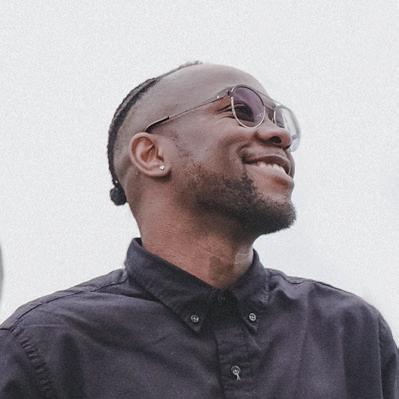
You’ve both been supported in the past by the PRS Foundation-supported PPL Momentum Fund. How valuable was that support to you as an artist?
SD: ‘To be recognised as someone who deserves that kind of support is so important. I've contributed hugely to the scene both in front and behind the scenes, so it's like giving me my flowers. I'm completely independent, so I have to think about my budgets. I shouldn't have to use the money I make outside of music to support myself when it comes to releasing music. PRS funding is a way of making sure I don't have to.’
QM: ‘The Momentum Music Fund helped progress my career as an artist massively. It contributed to me releasing my debut mixtape Causing A Scene, and because of that I have been able to perform at festivals such as Reading & Leeds, Radio 1’s Big Weekend and SXSW — the latter of which was definitely one of my best experiences as an artist to date.’
Speech, you’re also a POWER UP Music Creator. Again, how valuable has that initiative been to your career?
SD: ‘Kinfolk: it’s really powerful to be in a WhatsApp group with people like Gaika and Josette Joseph. Our skills and talents are so varied, and POWER UP shows we can be so many things while also being Black. Helping us stay connected is crucial to surviving the kind of tactics a place like the UK has against us. How can you pit us against each other when we can just pick up the phone?’
M Magazine | 35
‘We are committed to supporting individuals who drive hip hop forward.’
– Yaw Owusu
Journalist and author Grant Brydon shares a selection of the life lessons he’s learned from pursuing his passion for hip hop.
Hip hop is many things to many people: a culture, a lifestyle, a music genre. At different times in my life, it has been all the above. But as I reflect on the effect it’s had on me, my peers and the hundreds of artists I’ve interviewed throughout my career, I see it as something far bigger. The most accurate way I can describe hip hop’s impact? It’s a force for personal development.
In his theory of person-centred therapy, pioneering psychotherapist Carl Rogers talked about the concept of the actualising tendency: his belief that, given the right conditions, we tend towards achieving our potential. I can’t help but see a parallel with hip hop, a creative movement that has motivated and enabled so many to use what is available to them in order to transcend toward something much larger.
Hip hop reminds us that our personal stories matter. Generally narrated in the first person, the lyrics permit us entry into the inner world of its creators: the life experience of an artist in one locality can be transmitted to listeners across the world. By hearing these thought processes and personal perspectives we're then able to empathise with a huge variety of different life experiences, as well as find the words, metaphors and references that can help us make sense of our own. As Jay-Z wrote in his 2010 book Decoded: 'Slick Rick taught me that not only can rap be emotionally expressive, it can even express those feelings that you can’t really name — which was important for me, and a lot of kids like me, who couldn’t really find the language to make sense of our feelings.’
While artists like Kendrick Lamar have recently started to bring the therapy room into full focus in their music (see last year’s Mr Morale & The Big Steppers ), hip hop has long possessed a therapeutic quality for creators and fans alike. The sincere words shared on record are not ones that often come up in casual conversation between friends — sometimes they may not even be raised with close family. But by writing so candidly, hip hop artists are able to help shape our lives as peers, mentors and role models.
I have endeavoured in my journalism to explore the creative processes of these artists, and, more often than not, I've learned something about myself. Perhaps the most significant of these instances occurred during an interview I conducted with J. Cole in 2014; a time when I was ensnared by hustle culture and toxic productivity. I was over-identifying with my line of work, which would have been a dream come true to my younger self, and yet I didn’t feel fulfilled.
Sitting across from Cole, who was days away from releasing his now-beloved third album 2014 Forest Hills Drive , our conversation turned to the subject of success. The rapper admitted that, time and again, he had expected his career goals to make him happy, only to then be let down. 'I didn’t want to worry about bills or anything financial, and I thought that would be happiness,' he said. 'I [then] got to a level where I don’t gotta worry about bills or anything financial, and I was like, “Wait, I ain’t happy yet?”
‘You’re doing something you love and you’re being productive in it by really getting out into the world and creating things you want to. That’s the joy, right there,'
‘Hip hop reminds us that our personal stories matter.’
Cole added, inadvertently turning the tables on our interview. ‘But by focusing on money that doesn’t exist, you’re not fully appreciating the blessings that you’re getting from your dream. It’s pulling you away from the moment. It’s steering you the wrong way.’
After this conversation, I started to realise that my profession had taken over my entire life. It’s easily done at the best of times, but for those of us who have made a career out of something we love and that we’d likely be doing anyway, the lines become increasingly blurry. It can be hard to recognise that we aren’t looking after ourselves: at times, it was difficult to remember why I was doing what I was doing in the first place. I was doing all the things I believed were necessary for a successful career, and I wanted to build my following and gain recognition: but what was it all for? I think that this is a vital question to repeatedly ask ourselves every time we feel a little lost in order to return to a sense of presence and intention.
In a recent interview I did with Joey Bada$$, he talked about the importance of knowing what our personal understanding of success is. ‘When you’re exposed to so much externally, it’s hard not to compare or
measure yourself against what's going on around you,’ he explained. ‘At the end of the day, there’s always going to be someone who is more advanced than you, or further on in life than you are. But that is no reason to measure up your own life or your own success, because everyone’s path is different.’
While it's easy to get swept up in the many metrics that attempt to quantify success, it’s more important to reflect on the personal significance of our actions and experiences. If you'd have asked me to define myself 10 years ago, I’d probably say I was a hip hop journalist. But by listening to the music more closely over the past decade, its true power has come into sharper focus: I now see how hip hop influences everything I do and who I am, holistically, as a writer, editor and person.
If there's one thing I hope you take away from this piece, it’s to consider your own potential, your own definition of success and your own sense of who you are. Hip hop, after all, teaches us to embrace and celebrate our uniqueness, not to follow the crowd.
Grant Brydon is the author of Life Lessons From Hip Hop, out now via DK/Penguin Random House.
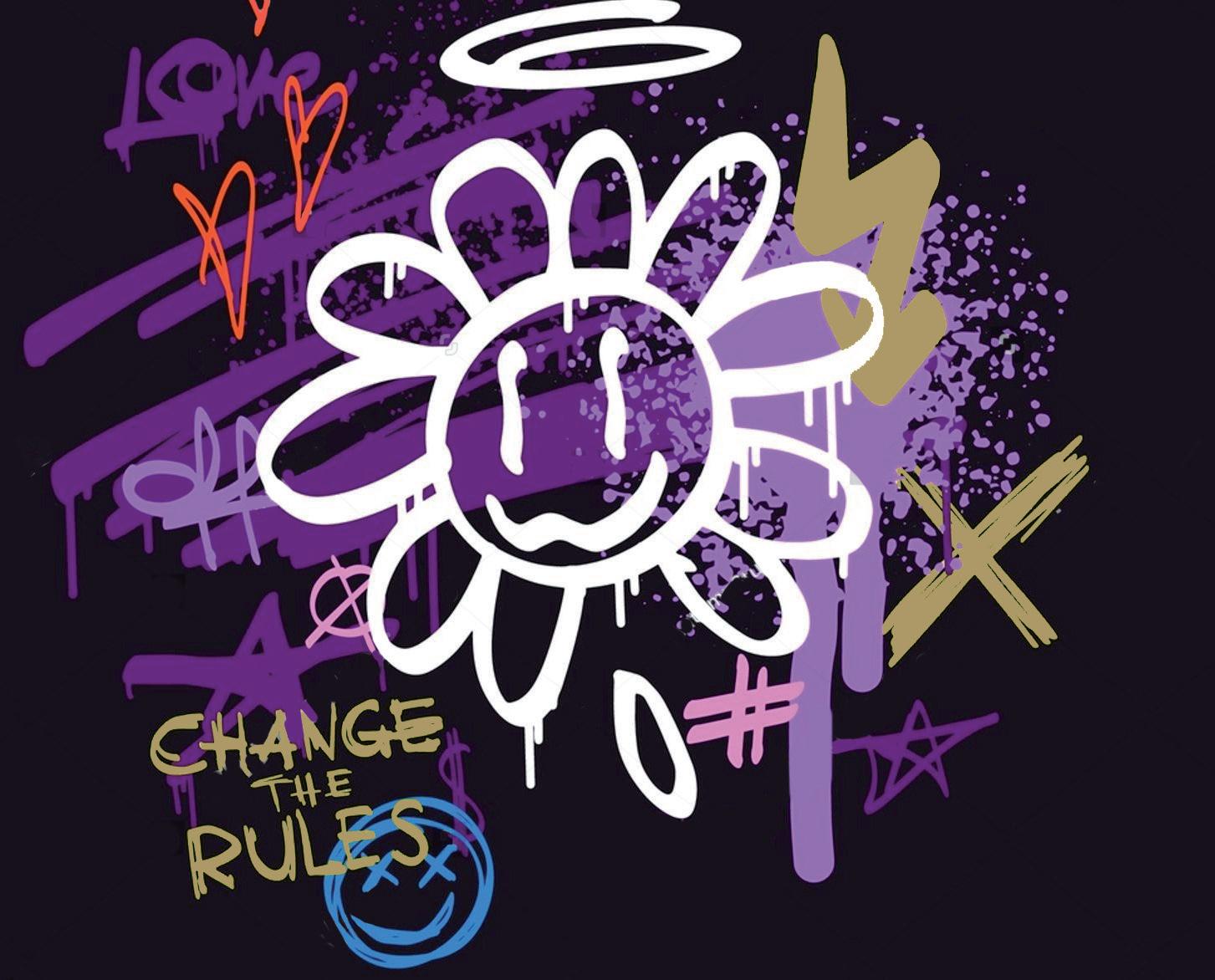
M Magazine | 37
'Hip hop artists are able to help shape our lives as peers, mentors and role models.’
‘HIP HOP IS ABOUT COMMUNITY, SOLIDARITY AND THE MESSAGE’

The south London rapper, singer and songwriter speaks to M about her eclectic musical upbringing, coming out of her shell as a creative and the importance of preserving hip hop culture.
By Danielle Koku
ENNY made her name in the throes of a chaotic lockdown with her breakout hit Peng Black Girls, a spirited ode to the limitless beauty of London’s Black women that was later remixed by Jorja Smith. A crafty wordsmith, her witty, audacious raps batted away the corny, preachy sermons commonly associated with ‘conscious rap’ with ease, energising the form with a tongue-in-cheek relatability that remains hard to resist.
Three years on from Peng Black Girls and fresh off a US tour, ENNY is taking M through the music that shaped her quintessentially British-Nigerian upbringing. Between her mum’s love of gospel music, her brother’s rap, her sister’s indie and dance and her dad’s soul and jazz, it’s hard to tell which genre won out in the end; rather, a blend of all of the above helped create an artist who pinpoints the Spice Girls as ‘the band of my life’ and Ja Rule (of course) as ‘the love of my life’. Spoiled by the golden age of '90s-00s hip hop, she was also no stranger to the street dances which accompanied the likes of Missy Elliott’s Work It on MTV Base.
As this colourful culture palette formed in the background, ENNY’s appreciation for sound further developed both in and out of the classroom after forming a band with her friends. A shy homebody, though, she felt most at home while sat in front of her dad’s keyboard. ‘I had my dad’s keyboard, and I was always at home,’ she recalls. ‘That was the only thing I played with.’
From this reserved, self-contained teen to the woman behind the anti-love song love song No More Naija Men, it’s safe to say that ENNY has now truly emerged from her shell.
Pleasantly shocked by her own growth, she laughs when M asks how she manages to package up heartbreak with humour in songs like Charge It. ‘The fact that you think it’s tongue-in-cheek is funny, because it just sounds like pain to me,’ she says of our reading of the We Go Again track.
While keen to recognise the likes of TY as pioneers of the genre, ENNY notes that, despite being an ‘established’ force in music on these shores, UK hip hop’s still-’budding’ community is vastly overshadowed by that of UK rap. Resisting the assumption that culture can simply be lifted and copied, it’s clear that hip hop does not exist in the same way in the UK as it does in the US.
‘We’ve developed our own things: we’ve got grime, we've got drill,’ ENNY says. ‘But hip hop as a culture in the UK is something very different to UK rap, and that’s a conversation that needs to be had… hip hop is a culture we share with America, but it’s not inherently ours.’
Despite the vast diversity of the genre, hip hop too often becomes a catch-all term for anything Black and vaguely lyrical. ENNY is clear, though, in making a distinction between the cultural and industry sides of hip hop, seeing herself as existing purely in the former.
‘I’ve come up in a space where, through the producers and people I’ve worked with, there’s always been a hip hop sound,’ she explains. ‘By detaching from the industry [side], that space has been sick because it goes back to what hip hop is all about. It’s about community, it’s about standing for something, it’s about solidarity, it’s about movement, it’s about message.’

M Magazine | 39
'I’ve come up in a space where there’s always been a hip hop sound.’
HOW RADIO DJS SHAPED UK HIP HOP
Shortee Blitz, Ellie Prohan and Esi explore radio's enduring impact and profound contribution to the hip hop scene.
By Rahel Aklilu
While hip hop has been inextricably linked to the cultural heritage of the US since its inception 50 years ago, it hasn't always been as prevalent in the UK. Inspired by Jamaican sound system culture, which was brought to the UK by Caribbean migrants, and the practices of MCing and toasting, hip hop took time to find its true footing on these shores. The eventual emergence of homegrown hip hop-affiliated genres like UK rap and grime, though, began to change the narrative, while Afroswing, a light, universal sound that meshes Afrobeats, dancehall and rap with a British twist, has more recently helped move the needle. Further propelled by the success of artists like Skepta, Little Simz and Dave (who have all won the Mercury Prize), UK hip hop and its various forms have risen in prominence to the point where they now dominate the charts: take Dave and Central Cee’s single Sprinter, which spent 10 weeks at number one earlier this year.
During this transition from undervalued underground genre to acclaimed mainstream mainstay, there has been one constant that has nurtured UK hip hop: radio DJs. These specialist tastemakers serve as voices of authority on the genre, with a single spin on any one of their primetime radio shows providing many a UK rapper with a career-defining milestone. Many of the UK’s most respected hip hop DJs, such as Kenny Allstar, Charlie Sloth
and Ellie Prohan, also play instrumental roles in the music industry outside of radio. DJ Semtex, who was a BBC Radio 1Xtra host for 15 years, is a celebrated author and Sony Music UK’s director of artist development, while Tiffany Calver, who was the first ever female host of BBC Radio 1’s Rap Show, recently partnered with Polydor to launch her own imprint, No Requests.
The primary role of these DJs, though, is to act as a conduit between the masses and the hottest music around, as experienced DJ, radio host and TV presenter Shortee Blitz explains to M. ‘Back in the day, radio was one of the few ways that DJs could get new music that they thought was stellar enough out to the people on a regular basis,’ he says. ‘In the 90's, certain DJs would only play what was "hot" from the US while neglecting the wealth of artists from these shores. That's not what I wanted to do once I got an opportunity to do radio: I really had faith in the UK scene and wanted everyone to hear what we had over here.'
The rise of streaming and playlisting over the past decade has extended the need for specialist radio shows, allowing DJs with trusted tastes to bring music from outside the mainstream to a wider audience. KISS DJ and activist Ellie Prohan is keen to use her platform to spotlight marginalised communities and artists within UK rap:
breaking the sound barrier
each week, she aims to give over 25 new artists their ‘ KISS First Plays’. ‘The best DJs are the ones that shine light to a new sound,’ she tells M
An important distinction, Ellie adds, needs to be made between UK and US hip hop, particularly in how ‘uniquely British’ the former is ‘in how it brings together different genres’.
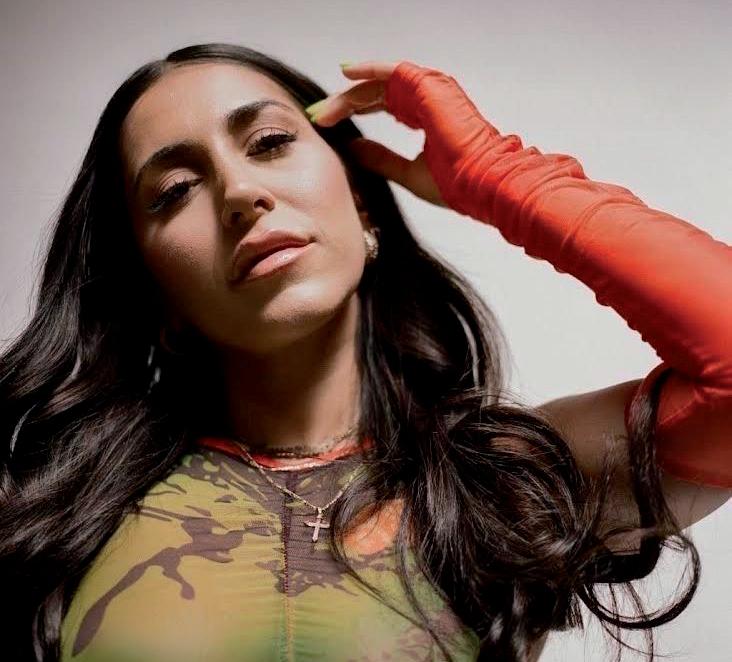
'A lot of us who grew up on US music, including UK artists, bring its influence into [our] music, but we have undoubtedly carved our own way of telling our stories and struggle within UK rap,’ she says. ‘The journey has been a beautiful one to watch.'
At a grassroots level, radio hosts at community stations like Westside and Reprezent often provide emerging artists with their first introduction to the wider world. KISS host Esi, who started her career at Westside in 2016 before her own specialist rap show on KISS, has seen first-hand how UK rap’s acceptance into mainstream music has triggered a domino effect of sorts.
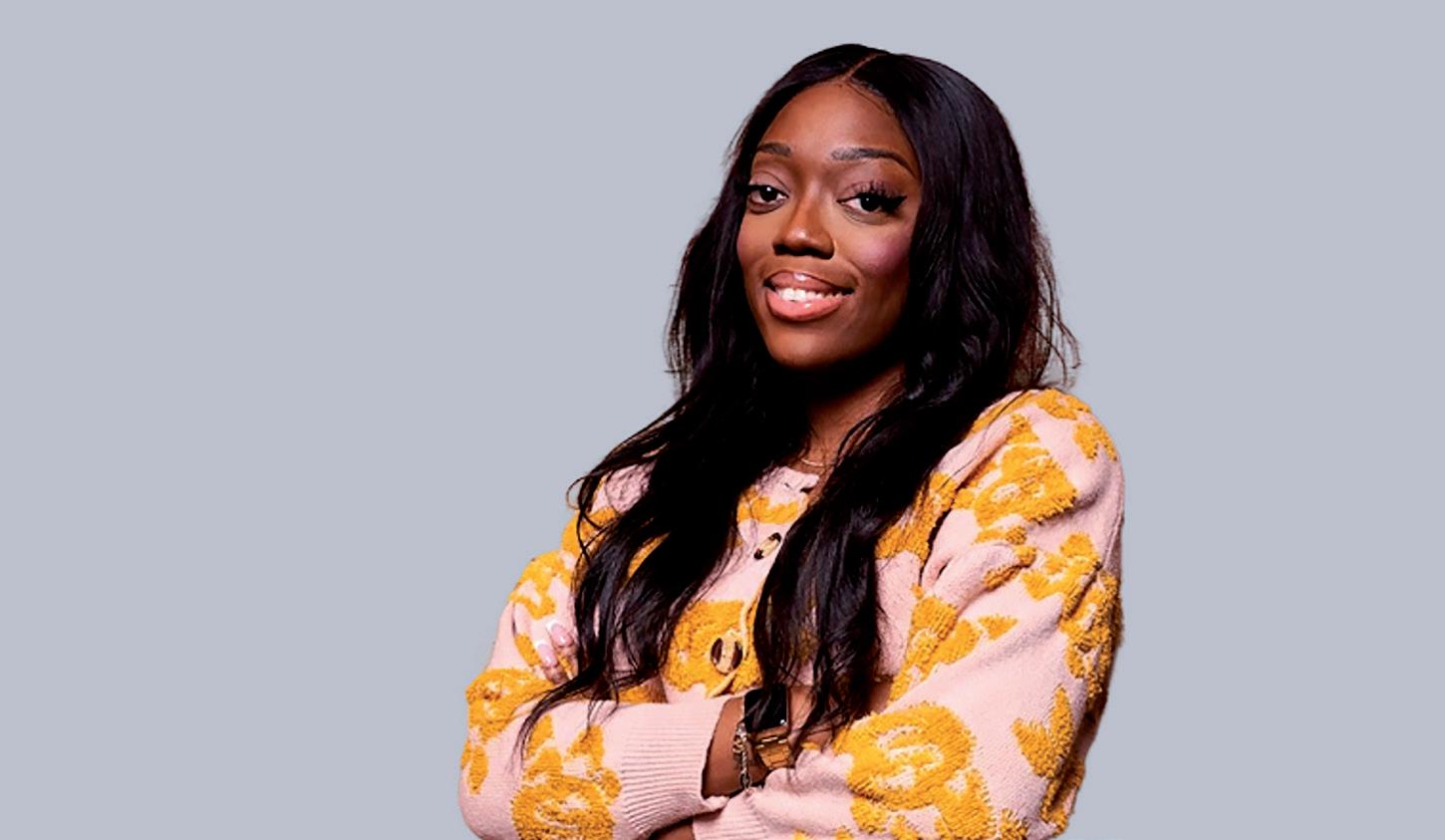
‘Initially, pluggers weren’t sending rap music because rap wasn’t being represented by the major labels, which meant that rap DJs had a responsibility to play it,’ she remembers. ‘Now the tables have turned: a specialist show is about striking a balance between playing well-known artists and newer ones that haven’t been sent by pluggers to encourage further music discovery among listeners.’
UK hip hop has ultimately become part of modern pop culture — and the work put in by radio DJs in discovering, building and preserving talent across the genre has more than paid off. The role of the DJ has grown, too: no longer just a broadcaster, these influential figures are A&Rs, music journalists and marketing experts rolled into one. Although the means of music discovery may have broadened for the average music fan with social media and streaming playing a larger role than ever, the integral role of the radio DJ, particularly when it comes to UK hip hop , can never be underestimated.
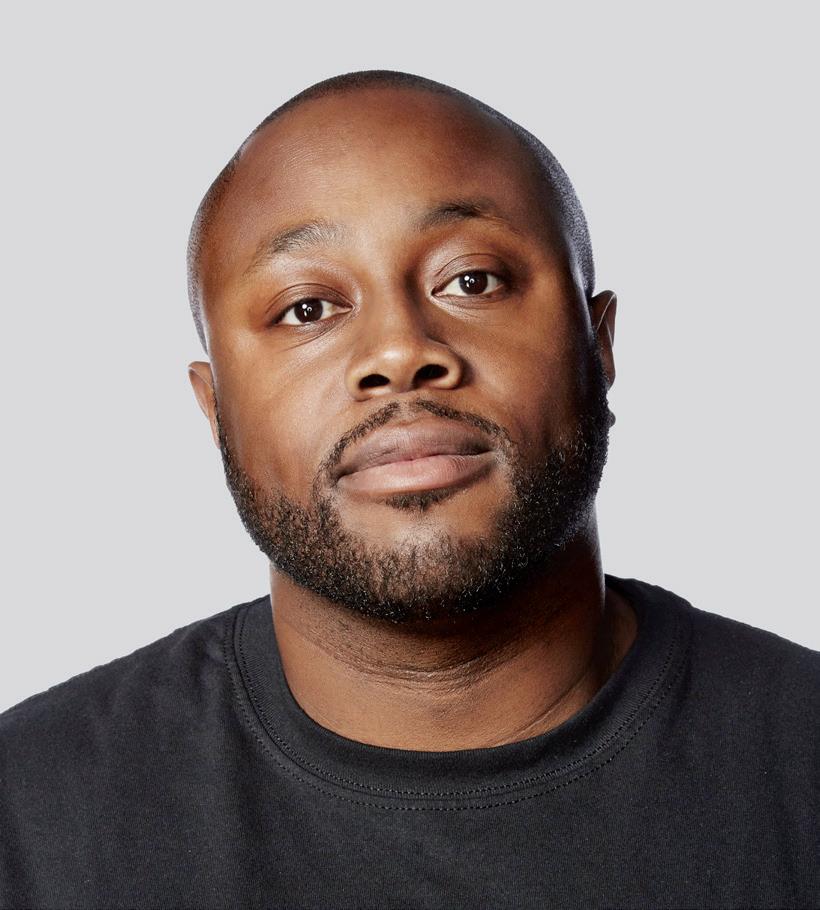
M Magazine | 41
'We have undoubtedly carved our own way within UK rap: the journey has been beautiful to watch.'
– Ellie Prohan
‘I really had faith in the UK scene and wanted everyone to hear what we had over here.'
– Shortee Blitz
'Initially, pluggers weren’t sending rap music because rap wasn’t being represented by the major labels, which meant that rap DJs had a responsibility to play it.'
– Esi
WHY PRODUCERS ARE THE BEATING HEART OF
Production has been at the core of hip hop since its inception. M speaks to some of the UK’s leading and emerging producers to get their take on how integral their line of work is when it comes to advancing hip hop culture.
By Luke Morgan Britton
‘As a kid, I wanted to rap,’ admits Jae5, the BritishGhanaian producer best known for his work with J Hus and Burna Boy. One of the UK’s most sought-after producers, the Grammy Award-winner (real name Jonathan Kweku Awotwe-Mensah) rose to prominence as part of the JOAT Music production group before receiving acclaim in 2015 for his work on J Hus’ debut mixtape, The 15th Day. Since then, he’s worked with virtually all the contemporary bighitters in the UK scene — including Skepta, Headie One and Dave — as well as with international stars like Koffee and the aforementioned Burna Boy.
But, as he tells M, becoming a producer wasn’t his original dream career path. 'Rap wasn't working for me. I just didn't feel I was good enough,’ Jae5 adds. ‘The next best thing was making beats. I actually found that more enjoyable than rapping, and I got good at it quicker… I could sit at a computer for eight hours and not realise that [time] had gone by.’
With the 50th anniversary of hip hop falling this year, there's been much celebration of the biggest MCs the genre has birthed, from Rakim and Jay-Z to modern greats like Kendrick Lamar. But production — the breaks, beats, scratches and loops — has been 'at the root' of hip hop since its inception, as the celebrated broadcaster, photographer and DJ Normski explains to M
'The most important part of the musical side of any hip hop act is the producer,’ Normski, who has been immersed in hip hop culture in the UK since the ‘80s, argues. ‘You really do need to have that kind of collaboration [between producer and performing artist].’ UK hip hop DJ and radio presenter Dave VJ agrees. 'Being the producer is always about trying to give the performer the best platform to perform,' he says when asked by M to define the producer’s role.

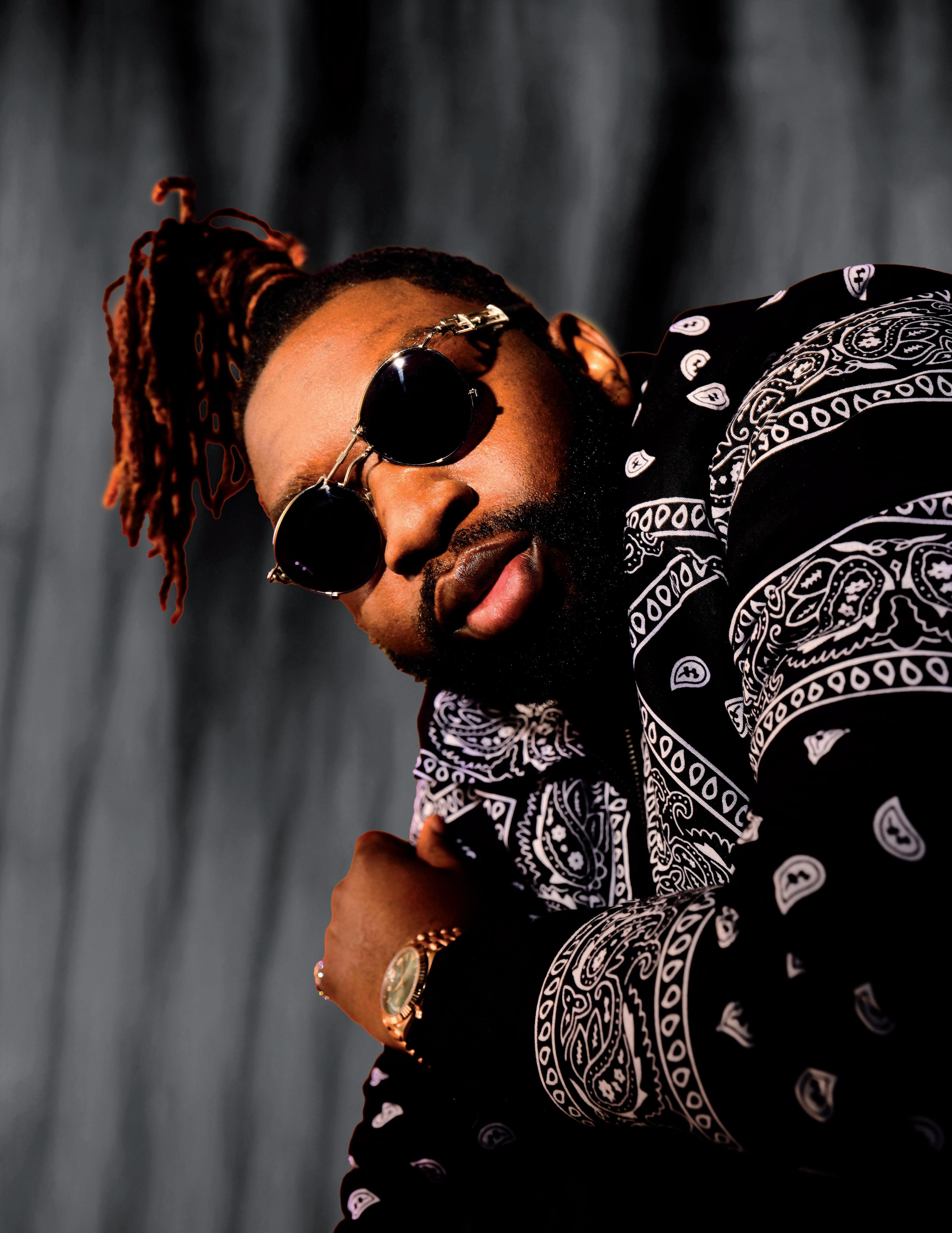

M Magazine | 43
'The producers dictate where the sound is going.’ – Jae5
Photo: Theo Cottle
Not only are the producers vital to the artists themselves, they’ve also been integral to shaping and propelling the sound of hip hop and all its related forms. Indeed, the very origin of hip hop can be traced back to instrumentals: during one set in August 1973, the Bronx’s DJ Kool Herc laid down the blueprint that would become the basis for modern hip hop production by mixing isolated breakbeats from funk and reggae records on twin turntables. To many, this is the moment that the essence of hip hop was born.
One way of looking at it is that without producers, the MCs couldn’t get to work. ‘I've seen in a lot of hip hop sessions that the rapper won't even approach the mic until they know they've got a beat that sounds incredible,’ notes Mr Hudson (above), the artist, producer and songwriter best known for his work with Kanye West and Jay-Z. ‘Whereas if you're in indie or alternative [music], [the artist] might be sitting on a porch with the guitar.’
Jae5 is keen to point out that 'a lot of times an artist gets credited for introducing a new sound, but more times it’s [because of] the beat, not necessarily the flow. The production is what dictates what's new, what's poppin’, what's trending. The producers dictate where the sound is going.’
It’s true: if you look at the sub-genres that have spawned from the UK scene alone, their hallmarks all come from a distinguished sound that’s adopted at producer-level. For trip hop, it was all about the elongated, downtempo breakbeats, while UK garage centred around its shuffling rhythms. Grime sped things up to 140 BPM, allowing MCs to spit rapid-fire bars, and UK drill synced snares and hi-hats to achieve its signature sound.
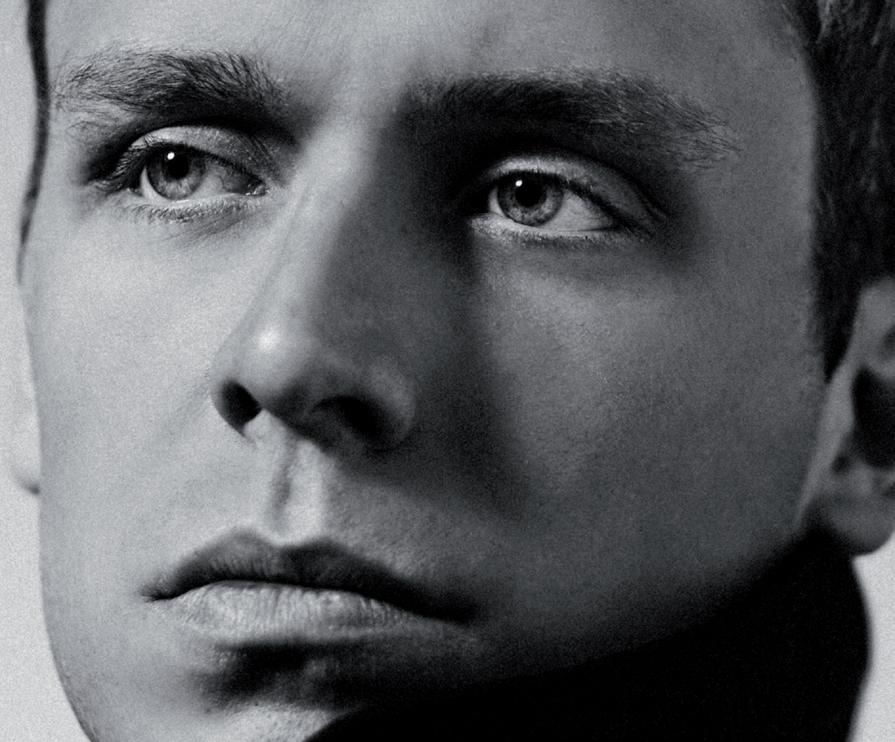

Producers have also continuously reflected and reinforced the very DIY nature of hip hop culture. Over the years, hip hop music has regularly incorporated the various home studio technological advances of
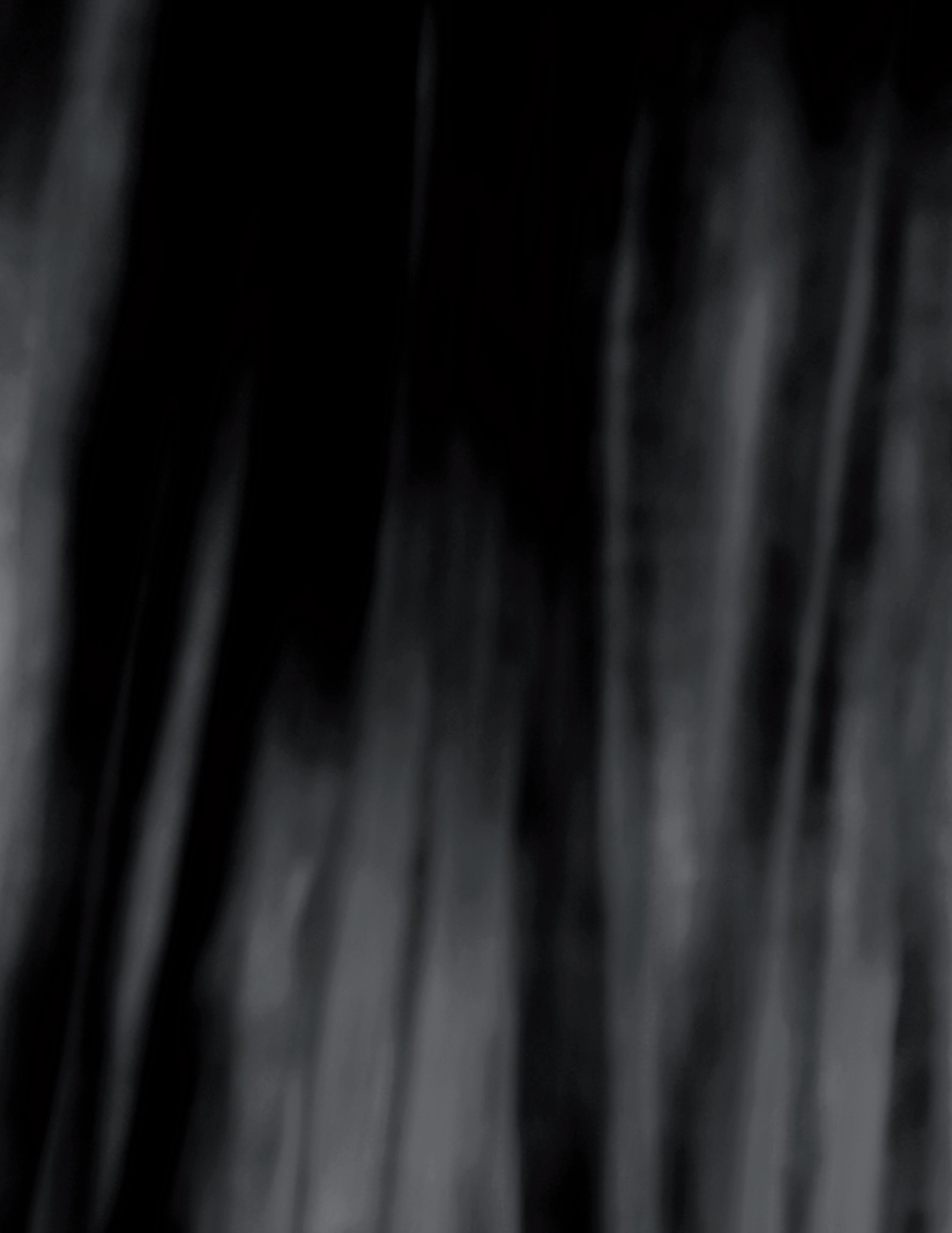
‘I've seen in a lot of hip hop sessions that the rapper won't even approach the mic until they know they've got a beat that sounds incredible'
the times: whether that’s drum machines and samplers for loops in the 1980s, synthesisers for basslines and stabs, or software taking over from hardware, with digital consoles completely opening up the realms of possibility at one’s fingertips.
'We come from a do-it-yourself world,' says Dave VJ, which Normski agrees with: 'One thing with hip hop is that you don’t have to be a musician: the producer is a whole band in a room.’
But how has the hip hop producer’s role changed over the years? Well, for one, there’s more recognition now of how essential producers are to the creative process, rather than just acting as a technical engineer. 'A lot of people are starting to understand the role of producers, especially with artists and the relationship between them,’ says emerging UK producer CeeBeaats, who has worked with the likes of Digga D and AJ Tracey. 'Sometimes you have to sit down with the artist and create that sound together.’
Jae5, though, points out that there’s still much to be done in elevating the producer’s stature in the current scene. ‘I think there was more recognition in the past,’ he says. ‘I think now you know a producer’s name because we put a tag on the track. But in the past there were super-producers like Dr. Dre, Timbaland and Quincy Jones. I don't know if we have many of those types of producers now.’
Recent years have, however, seen more recognition for how UK producers have grown the sound of hip hop through sub-genres like grime and drill. Mr Hudson points out that while hip hop might not be considered to be ‘our’ genre, UK music creators constantly succeed at adding ‘a twist’ to the form.
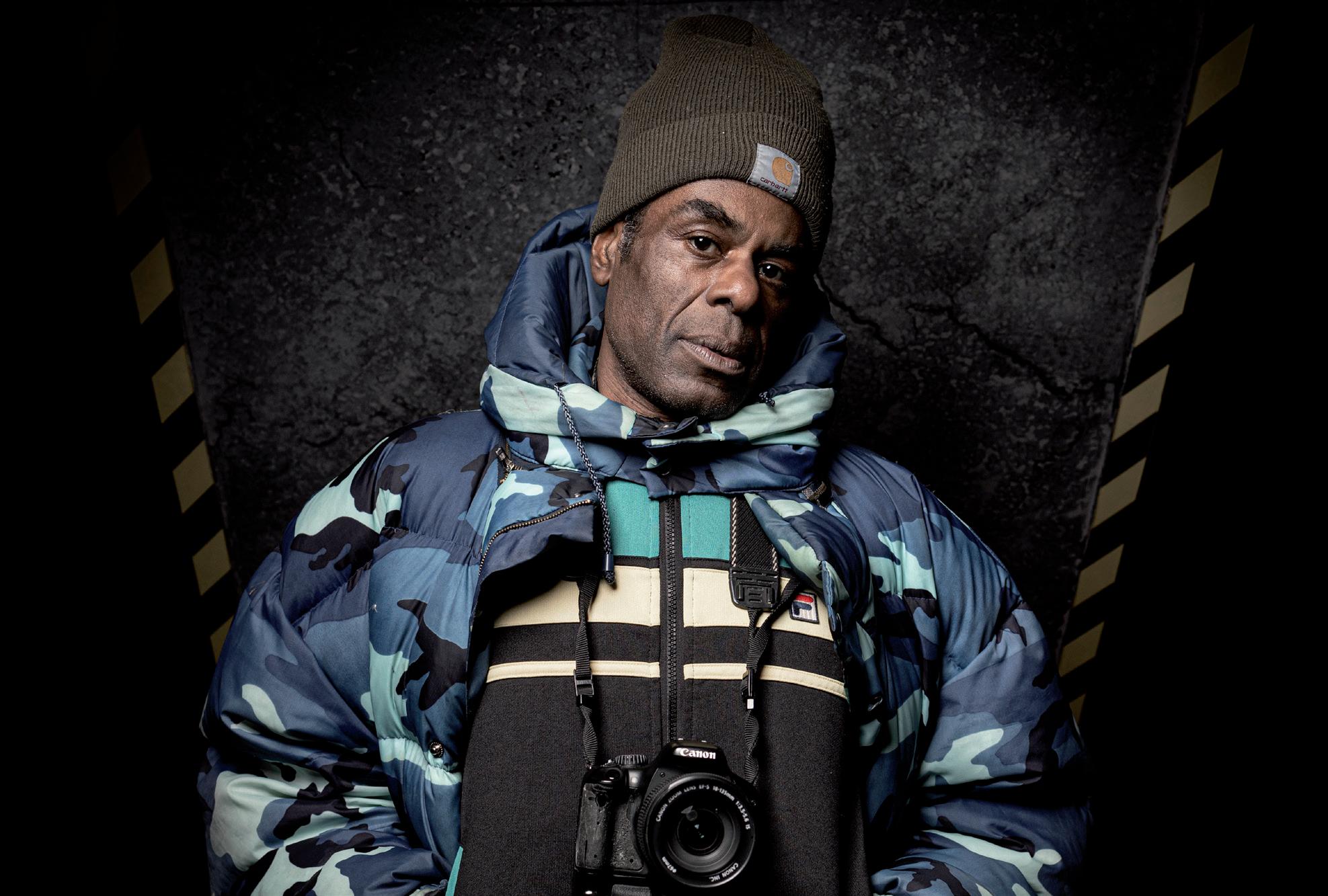
‘UK producers have been able to create something [unique], for example UK rap, Afroswing,’ adds CeeBeaats. ‘It has shaped [hip hop] in different ways… it’s growing very quickly and expanding.' Dave VJ agrees: ‘Without a shadow of a doubt, the UK are leaders in the world.’
‘I think it's important to celebrate hip hop,’ CeeBeaats goes on to say of this milestone year for the genre. ‘Hip hop mainly came from the streets and has become mainstream now. This shows how influential it’s been.’
Normski appears taken aback by the growth that has happened over the past five decades. ‘I can't believe I'm talking about a subject that’s 50 years old,’ he says. ‘It's really been our lifeline and backbone… they’re now using hip hop beats as incidental music in the background of Masterchef! Nobody thought this was ever gonna happen in the beginning. Well, I can hear it on the news now! That's how important hip hop production is to this day.’

M Magazine | 45
'The most important part of the musical side of any hip hop act is the producer.’
– Normski
By Felicity Martin
Without sampling, there would be no hip hop. From its beginnings on the streets of New York in the early ‘70s through to the sample-laden albums of today that take a fine-tooth comb to unpack, sampling has helped shape the genre as now we know it.
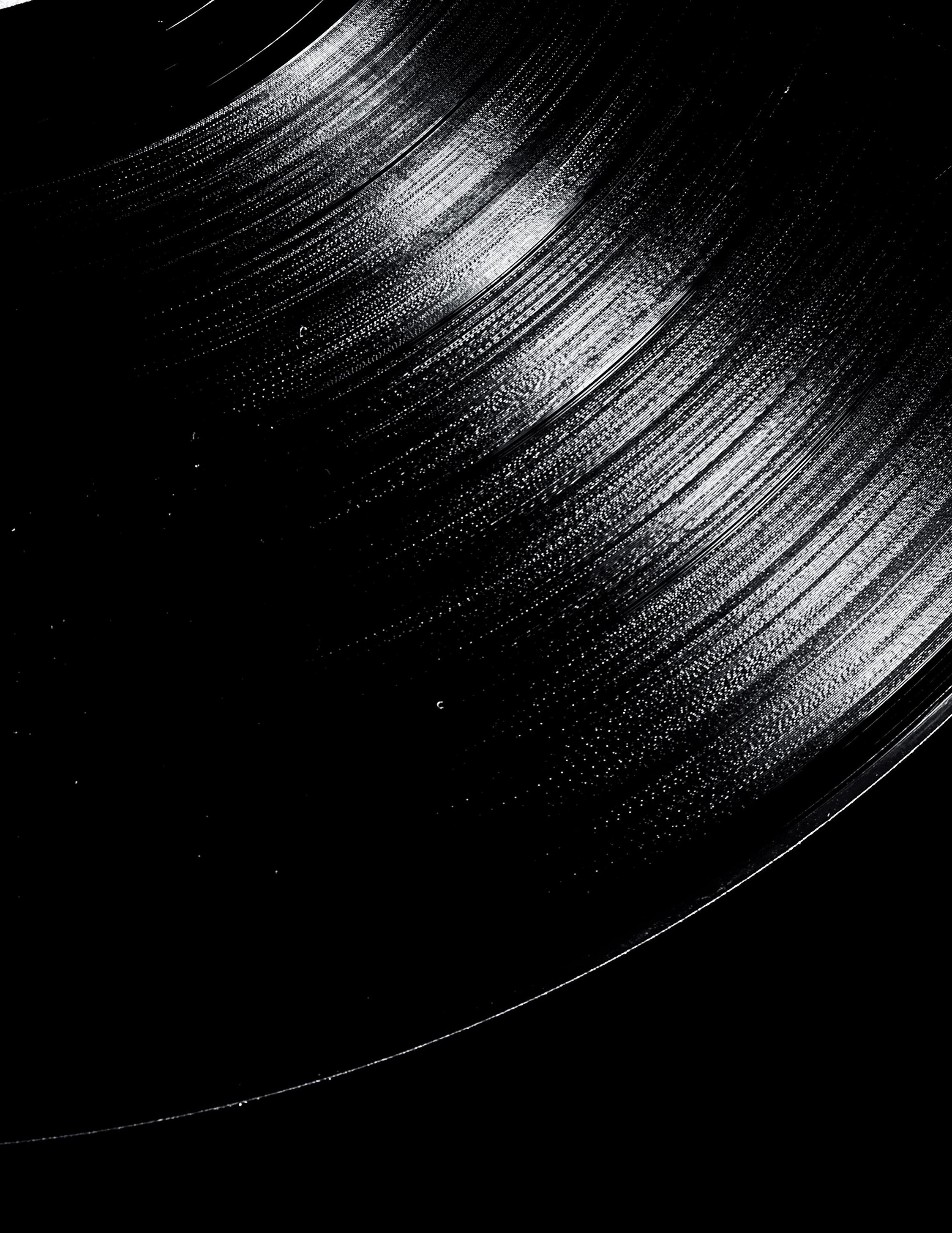
A sample is a sonic idea pulled from an existing track — a vocal snippet, drum or synth sound — which is then rearranged via pitch, rhythm, speed, tone or volume, and then looped or otherwise given a new context. These span from the subtle, such as using obscure drum snippets or vocal loops, to the more overt, with whole lines being lifted from tracks.

The practice originated in Jamaica in the early ‘60s before arriving in the US in the early ‘70s when DJs in the Bronx started looping percussion sequences, which they termed 'breaks'. When hip hop was born in 1973


the DJs were the stars, using turntables and a mixer to breathe new life into sounds as the MCs hyped up the crowd. As electronic samplers became more affordable, producers including DJ Kool Herc, Afrika Bambaataa and Grandmaster Flash began digging through their vinyl collections, finding funk riffs and old soul records to loop.
Rick James once described himself as 'the most-sampled artist in history', adding of the continued interest in his work (including the James-written All Night Long by Mary Jane Girls): ‘I didn't have to work any more in life because [of] when the rappers started sampling.’ Arguably the most sampled sound of all time comes from The Winstons’ 1969 track Amen, Brother: its isolated drum break (played by Gregory Coleman) has spawned countless tracks (among them N.W.A.’s Straight Outta Compton and Salt-N-Pepa's I Desire) and was essentially responsible for the entire UK dance music scene in the ‘90s.
From N.W.A. to Central Cee, sampling has been a constant in hip hop since its inception. M charts the rise of the art form that laid the foundations of the genre.
Epitomised by DJ Shadow’s 1996 debut album
Endtroducing....., which was composed almost entirely of sampled sounds, the floodgates had opened. Kanye West’s emergence in the ‘00s, initially as a producer for the likes of Jay-Z before embarking on a solo career, was fuelled by his deft way around a sample, reworking the likes of Chaka Khan’s Through The Fire and The Jackson 5’s I Want You Back. J Dilla was rightfully crowned as one of the best hip hop producers of all time following his death in 2006 due to his innovative and soulful approach to chopping and warping samples, while the practice also became integral to the production style of Timbaland and the Neptunes.
In the UK, the Bristol trip hop scene flourished in the ‘90s with its use of samples, with artists such as Portishead and Tricky flipping an array of old classics. UK producers as a whole have long been using samples to bolster their hip hop, grime and rap tracks. Take 2020’s Ain't It Different by Headie One, AJ Tracey and Stormzy, which saw producers Toddla T and Fred again.. innovatively sample Crazy Town’s Butterfly and M-Dubs' Bump 'N' Grind (… I Am Feeling Hot Tonight). Inflo, meanwhile, sampled Smokey Robinson for Little Simz’s Two Worlds Apart, while production duo LiTek and whYJay chopped up Eve’s Let Me Blow Ya Mind on Central Cee’s Doja. UK drill is no stranger to sampling, either: Digga D and AJ Tracey’s 2022 single Why utilised Robert Miles’ muchcited 1995 instrumental Children
Sampling is no longer solely the preserve of hip hop, either. A recent study by the Official Charts Company and whosampled.com found that as many as one in four tracks in the UK singles chart at the time had sampled or interpolated an older track, such as Doja Cat’s Paint
The Town Red (which sampled Dionne Warwick’s Walk On By). Many observers believe this to be an extension of pop culture’s current obsession with the ‘90s and '00s, thought others are more cynical about the trend. Some have argued that sampling is a lazy way to produce a hit; a byproduct of TikTok culture that encourages the listener to consider whether they like a new track in just a few seconds. Music business lawyer Oliver Newman posted on X, formerly known as Twitter: 'When I did A&R we’d work hard to create a track that was “resonant” of a
specific element of a hit. So that it triggered familiarity. But was essentially original. That was a way to have a crossover hit. Nowadays that copying is completely direct. There’s no attempt to put a spin on it at all.'
Initially a free-for-all endeavour, sample clearance procedures were eventually established in the late ‘90s, and there are now many financial and legal limitations on sampling. Take the highly publicised legal drama, for example, involving Robin Thicke, Pharrell and T.I. over the similarities between their 2013 joint single Blurred Lines and Marvin Gaye's Got to Give It Up. While artists like Drake may be able to afford to clear Lauryn Hill samples, the process can often prove to be too tough to navigate for musicians with smaller budgets. That being said, they can even pose issues for artists as big as Beyoncé, who had to remove a Kelis interpolation from her Renaissance album last year.
It seems that we’re seeing more interpolations in music due to the legal differences between clearing interpolations and samples. When you sample a track, you need to secure a recording use licence from the owner of the recording, whereas an interpolation only requires permission from the owner of the underlying composition.
Thanks to social media platforms like TikTok, respect for the art of sampling has arguably never been higher. Video explainers lay bare the genius of producers who create something entirely new from existing sounds, with visual breakdowns of how these sonic ideas are developed. Sampling and interpolation might be dismissed by some as a way to cut corners to a chart hit, but conversely it can offer new listeners their first experience of vintage or overlooked gems from yesteryear. When it comes to music discovery for fans, artists and music creators, sampling really does provide an unrivalled service.
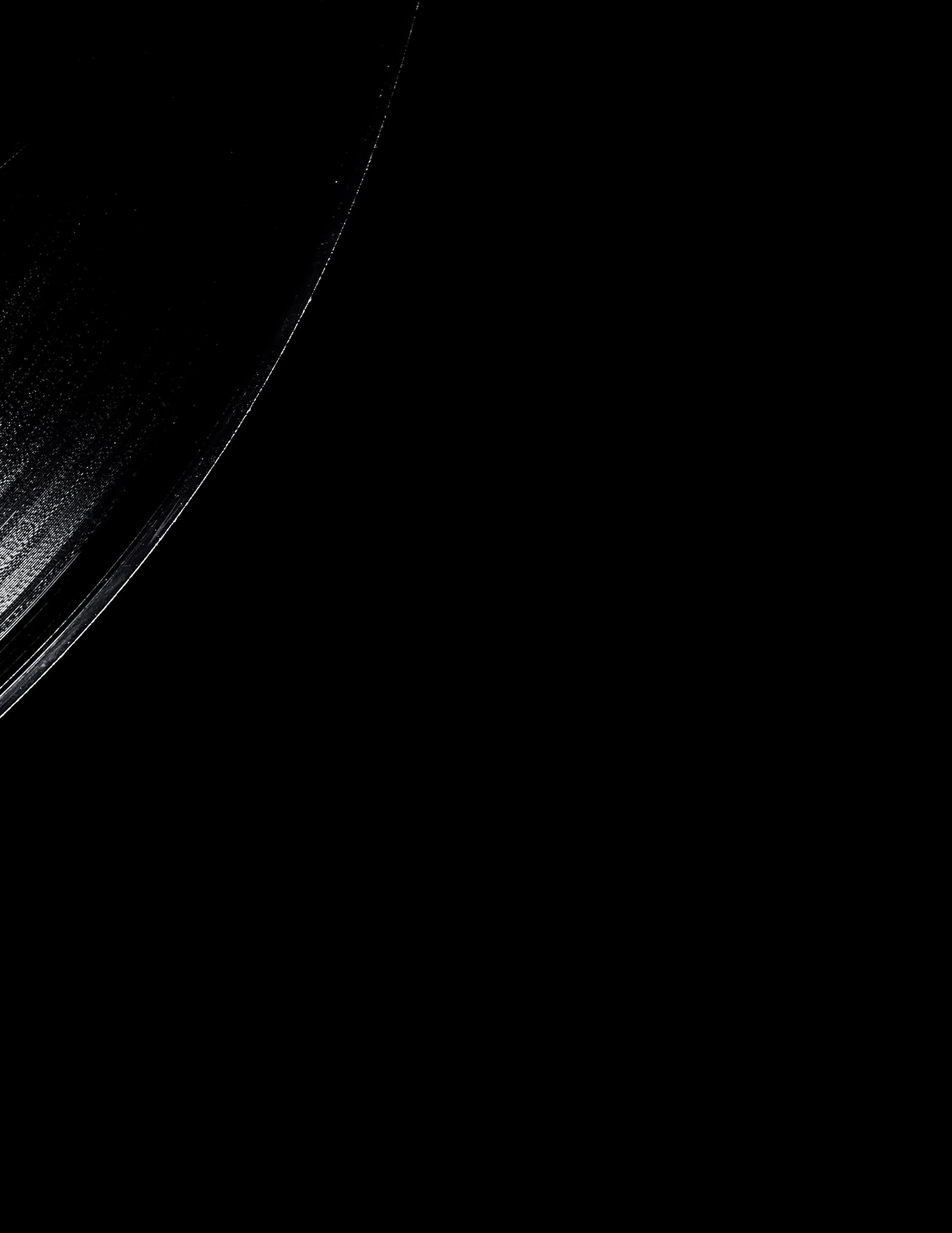
M Magazine | 47
‘UK producers have long been using samples to bolster their hip hop, grime and rap tracks.’
'Sampling has helped shape the genre as now we know it.’
THE BRITISH STORYTELLER
WHO CONQUERED HIP HOP
London-born Ricky Walters went on a great adventure to become one of the most influential MCs in rap history. M explores how his distinctive style and lyrical wit shaped an enduring legacy.
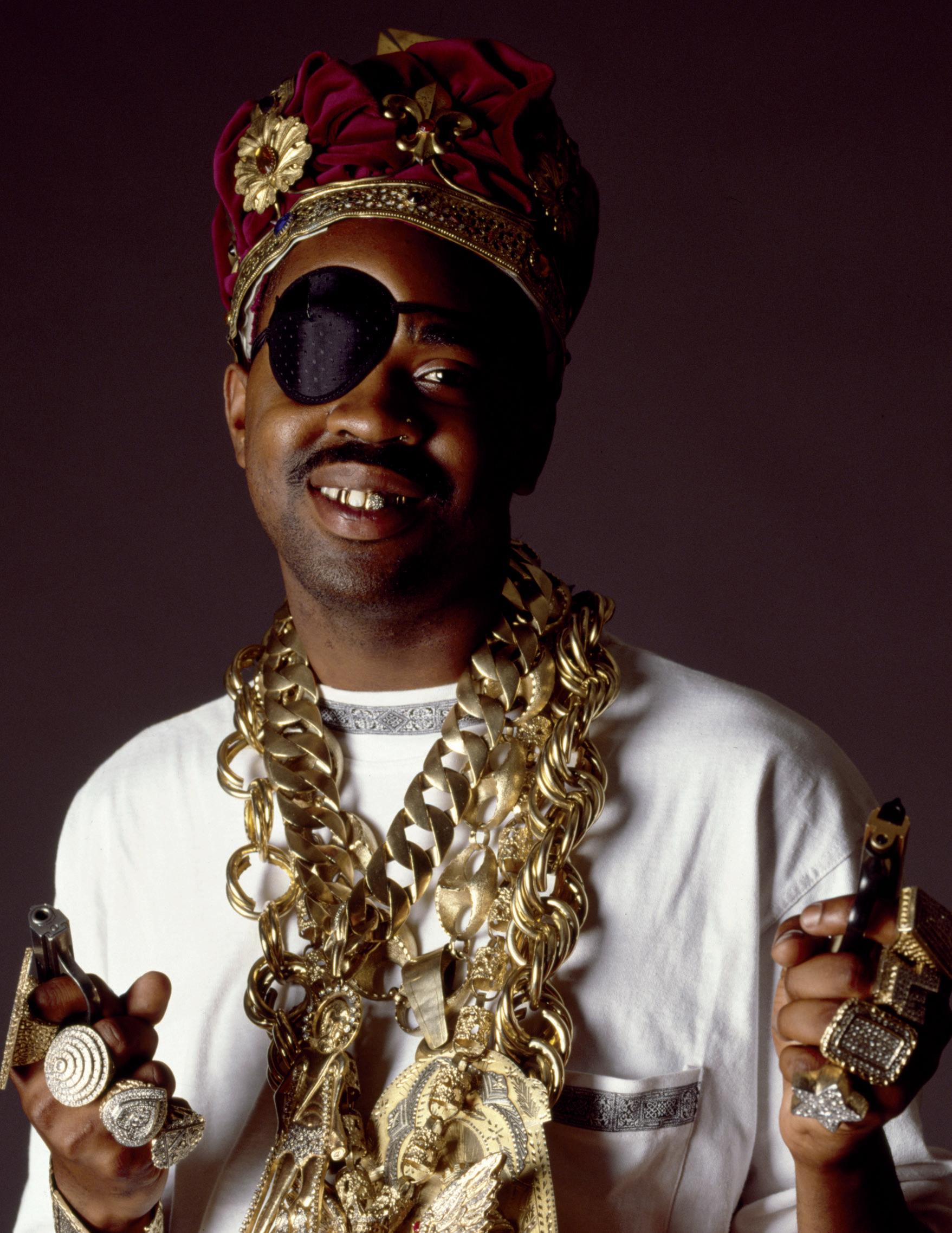 By Kevin EG Perry
By Kevin EG Perry
The Bronx, 1984: on the corner of 170th Street and Jerome Avenue, ‘Human Beat Box’ Doug E. Fresh has been invited to judge a rap battle. When a 19-year-old in Ray-Bans calling himself MC Ricky D steps up to the mic, Fresh’s ears prick up: Ricky’s compelling stories, smooth delivery and British accent set him apart from his rivals. Frankly, they set him apart from what anyone else was doing in hip hop. After the show, Fresh approaches the young man with an offer: 'Yo, we should do something together.' What they went on to do together would change rap history and launch the career of the genre’s most influential storyteller, Slick Rick.
Richard ‘Slick Rick’ Walters was born in Mitcham, south London on 14 January 1965. At just 18 months old he was blinded in his right eye by a shard of glass from a broken window, an injury which would have a profound impact on his life. 'I was always pretty shy because of the eye,' he said in a 2014 interview. ‘So rather than going out and playing sports, I stayed indoors and wrote stories.' At the age of 11, he waved goodbye to the UK as his family moved to the US, settling in Baychester in the northeast of the Bronx. The biggest difference between Mitcham and the Bronx was the prevalence of boomboxes on every street corner, which played the breakbeat and funk records — The Honey Drippers’ Impeach The President, 7th Wonder’s Daisy Lady — that would lay the foundations of hip hop.
Young Ricky found himself inspired. As The Fatback Band’s King Tim III and the Sugarhill Gang’s Rapper’s Delight began to hit the airwaves in 1979, the stories the young teenager scrawled in his notebooks began to morph into verses and rhymes. At school in Manhattan, he formed the Kangol Crew (inspired by the distinctive headgear) with fellow aspiring rapper Dana Dane. They performed at school contests, in parks and, eventually, the Bronx rap battle which led to that fateful meeting with Doug E Fresh. Within months, MC Ricky D had become a fully-fledged member of Doug E’s Get Fresh Crew, and on 13 August 1985 they dropped a single that would make the pair of them international stars almost overnight.
On the single’s A-side, The Show, Doug and Rick traded bars over a beat that interpolated the theme from Inspector Gadget, before Fresh introduced his sideman as Slick Rick for the first time on record. The song became a huge hit on both sides of the Atlantic, earning the Get Fresh Crew an invitation to fly to London to perform on Top of the Pops in November 1985. The B-side, La Di Da Di, turned out to be even more influential. The song, which features Doug beatboxing as Rick narrates a story about being accosted by a woman and her mother on the street, has gone on to be sampled and referenced in literally thousands of tracks since by artists ranging from Beyoncé and Kanye West to Miley Cyrus and Robbie Williams. Its opening line 'OK, party people in the house' has become a staple of hip hop records, while the rhyme 'Ricky, Ricky, Ricky, can’t you see? Somehow your words just hypnotise me’ have also been

referenced and quoted countless times, most famously on The Notorious B.I.G.’s Hypnotize. After just two songs on either side of a single, Slick Rick was already reshaping hip hop in his own image.
Perhaps it was inevitable that this rapid success would see Rick outgrow his role as Doug E. Fresh’s sideman. After splitting with the Get Fresh Crew, Rick became just the third artist to sign to Def Jam Records when founder Russell Simmons sought him out to relaunch his career as a solo artist. His debut album The Great Adventures of Slick Rick was released in November 1988, and went on to spend five weeks at the top of Billboard’s hip hop chart. The record is now considered a classic, and tracks like Children’s Story, about two young men who get drawn into a life of crime, cemented Rick’s reputation as hip hop’s greatest storyteller. 'No artist before or since has painted pictures as vividly as Slick Rick did on that album,’ Busta Rhymes told Q Magazine in 2009. ‘He had that London twang and the mannerisms, but still had the ‘hood mentality — the urban, edgy approach. Nobody else had that combination.’
Sadly for Slick Rick, life imitated art when his career was upended by criminal charges. He hired his cousin, Mark Plummer, as a bodyguard to protect him as his fame grew, but instead Plummer tried to extort money from his newly wealthy relative. After Rick found bullet holes in his door he replied by shooting at Plummer, injuring both him and a passer-by. In 1991 Rick was convicted of attempted murder, among other charges, and spent five years in prison. During this time he released a pair of albums, The Ruler’s Back and Behind Bars, but neither reached the heights of his acclaimed debut. His influence, however, never wavered. On his debut album in 1993, Snoop Dogg made the unusual move of covering La Di Da Di in full (as Lodi Dodi) and paid tribute in his own unequivocal style. 'Gotta say what’s up to Slick Rick,' he announced on the intro. 'Those that don’t like it, eat a dick.'
After his release from prison, Slick Rick released his fourth album The Art of Storytelling in 1999. Hailed by critics as a startling return to form, the record saw Rick team up with a who’s who of rap icons. Nas, OutKast and Snoop Dogg were among those who were keen to step into the booth with a legendary MC whose voice, style and lyrical wit had done so much to influence and inform the development of hip hop. It was a fitting moment of redemption for Slick Rick, the storyteller from south London whose greatest and most outlandish tale just might be his own.
M Magazine | 49
'Slick Rick’s compelling stories, smooth delivery and British accent set him apart from his rivals.’

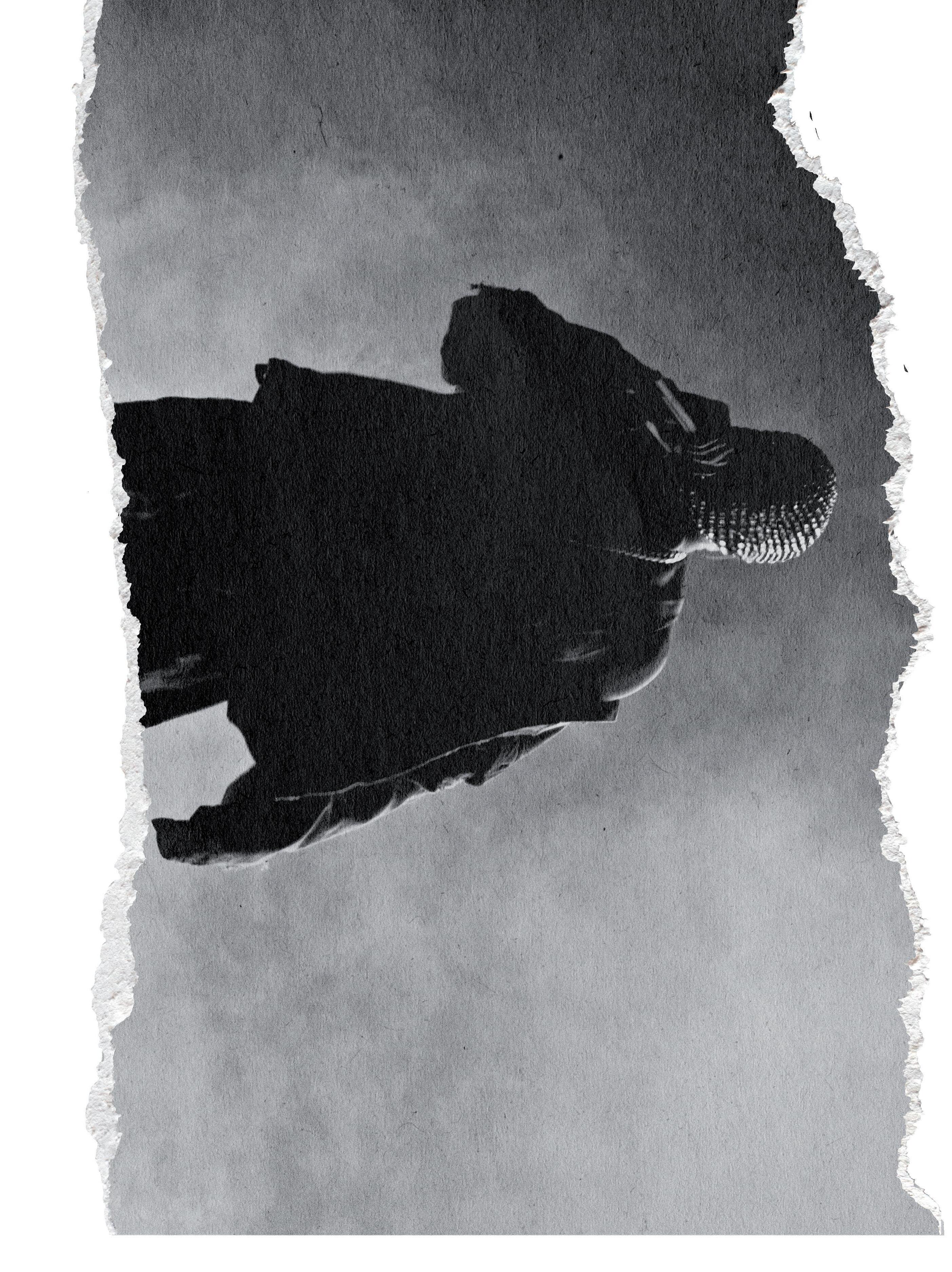
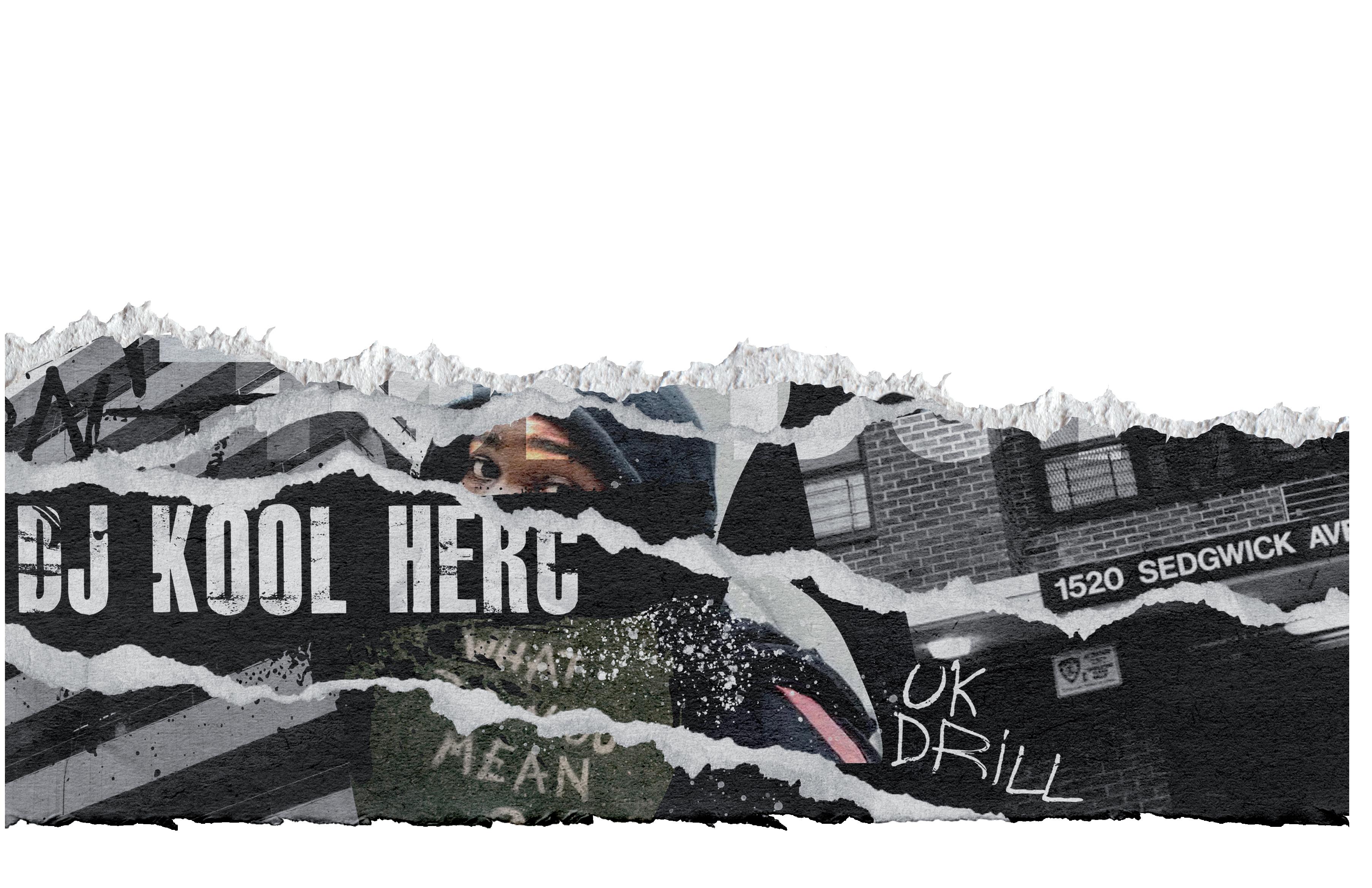
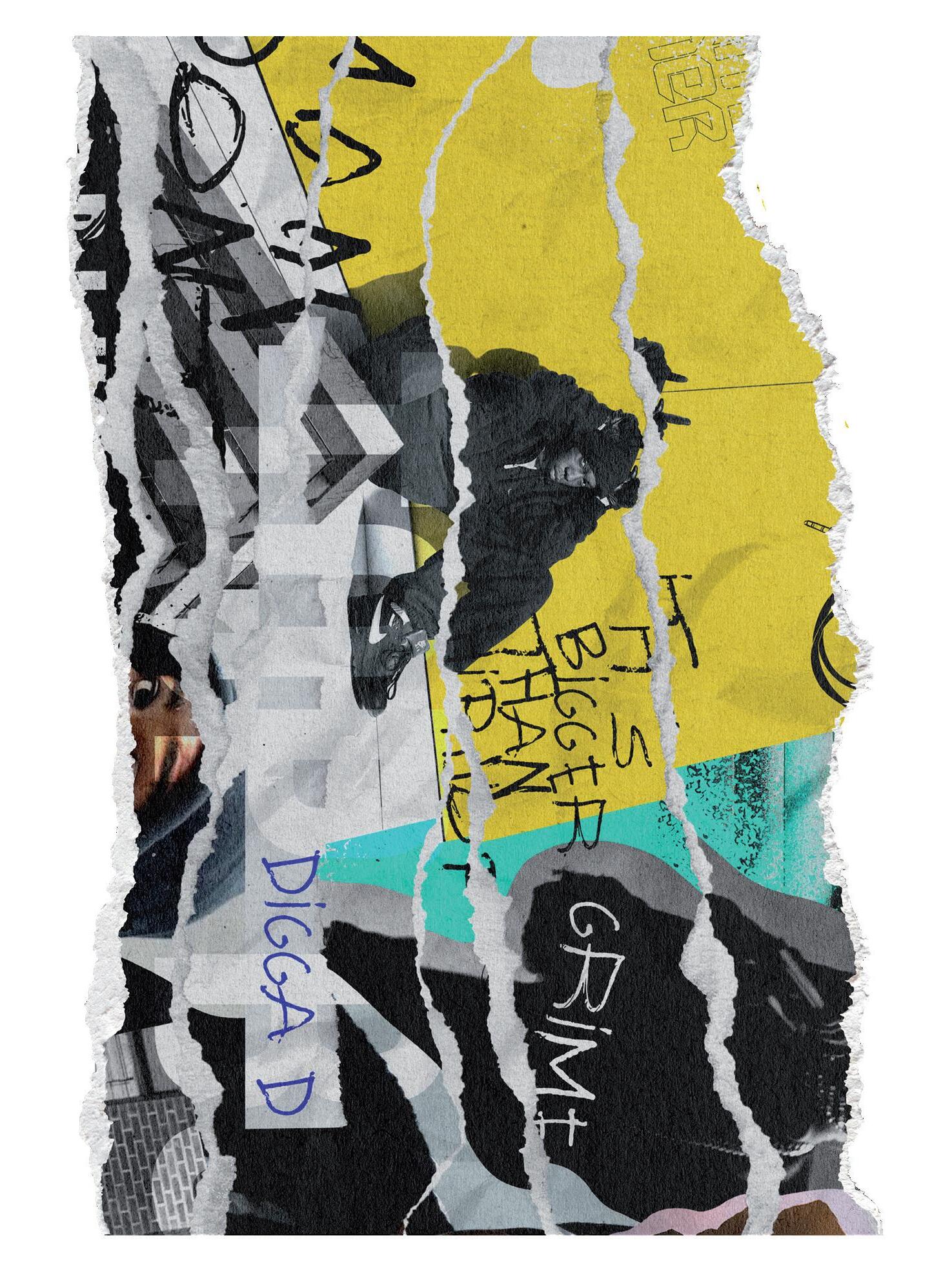

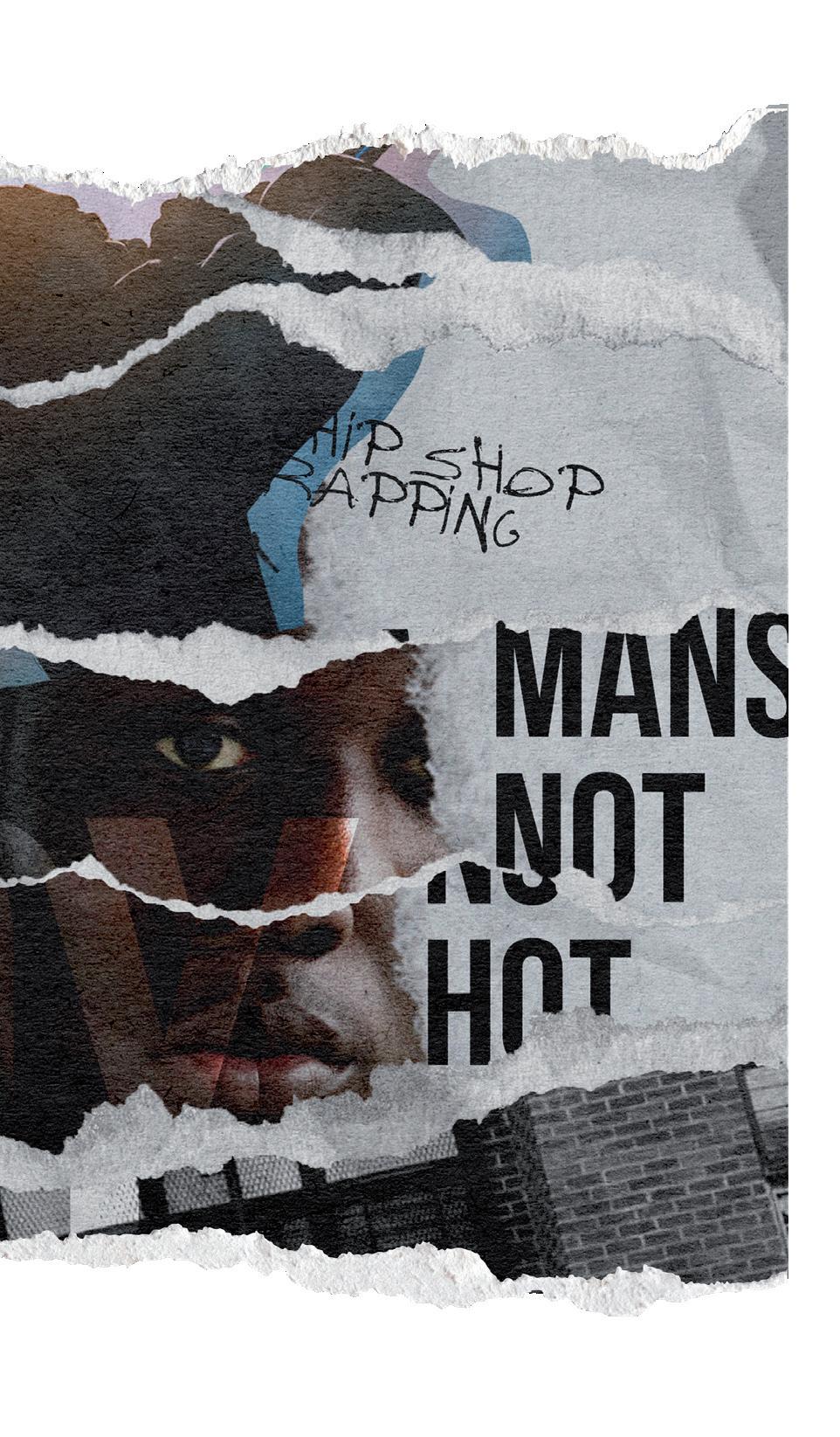
'The influence of hip hop on the UK music scene can’t be understated.’
Hattie Collins
1520 Sedgwick Avenue in the Bronx, New York. Housing 102 apartments, this caramel-coloured tower block is where, 50 years ago, 18-year-old Clive 'DJ Kool Herc' Campbell and his sister Cindy threw a party in the building’s community room. Inspired by the selectors (DJs) and toasters (MCs) of the sound system culture from his Jamaican childhood, Herc hooked up two turntables and a microphone and set about replicating the atmosphere and dynamism of the dancehalls of Kingston.
As he began to mix the instrumental break between two copies of the same record, people lost their minds. How was he doing that? Not satisfied with merely inventing breakbeat DJing, Herc then got on the mic and began to hype up the crowd by shouting out ‘all the break-boys and break-girls' in the house, before his pal Coke La Rock took over as MC. As these events unfolded, on 11 August 1973, hip hop took its first breath.
Five decades on, 1520 Sedgwick Avenue is now acknowledged as the birthplace of hip hop (or, as Herc once put it, ‘the Bethlehem of hip hop culture’). Now a dominant force in popular culture — from language, fashion and technology to politics, dance and art — hip hop has become a highly lucrative industry, with many of its leading figures accumulating impressive wealth. Jay-Z was the first rapper to claim a spot on the Forbes Billionaires list earlier this year, closely followed by his multi-millionaire peers Diddy, Dr. Dre and Drake.

Musically-speaking, hip hop continues to greatly influence music creators across the globe. In the US, numerous offshoots such as gangsta rap, trap and Jersey club have all emerged, while hip hop has regularly mingled with other genres over the past five decades. Take Mary J. Blige, who was crowned the 'Queen of Hip Hop Soul’ in 1992 thanks to the rough 'n' ready R&B vocals on her

M Magazine | 51
The UK is well-known for being the home of grime, UK drill, Afroswing and road rap, all of which derive inspiration in some way from hip hop.
The UK genres that owe a debt to hip hop
the
By
debut What’s The 411, which spoke searingly of life, love and heartbreak over hard-knock hip hop beats. There's also been ample crossover moments with artists from the world of guitar music, with arguably the most notable and influential being Aerosmith and Run-DMC's joint international hit Walk This Way in 1986.
Elsewhere, the rising popularity of reggaeton, which originated in Panama in the late '80s before crosspollinating with New York’s hip hop scene via Puerto Rico, has been led in recent years by global superstar Bad Bunny. The Puerto Rican rapper and singer has been Spotify’s top-performing artist for the past three years, while overall streams of reggaeton artists grew by 147% from 2018 to 2020.
Closer to home, the influence of hip hop on the UK music scene can’t be understated. Whether it’s the pioneering likes of London Posse and Cookie Crew, globally successful contemporary artists like Stormzy, Dave and Little Simz, or the rise of grime, trip hop and UK drill, this country has long been inspired by — and significantly contributed to — hip hop’s global growth.
As we celebrate hip hop’s big 5-0, let’s take a closer look at four homegrown genres that can all trace their roots back to hip hop.

Grime
When grime music emerged from Bow in 2001 without a name or any formal infrastructure, it sounded — and looked — like nothing else that had come before it. 140BPM beats made on PlayStations, barking British accents, strange new slang: grime, and the Nike Air Max BW and black glove-wearing people behind it, could have only been made in London.
Like hip hop, grime was also greatly informed by sound system culture. This was a scene that was formed during clashes on sweaty stages at the UK music club night Sidewinder, at makeshift pirate radio studios on the Crossways Estate and at overcrowded youth centres on Devons Road in Bow. The idea? To be the best, you had to beat the rest.
Grime’s official recognition arrived around the same time it found its name, as Dizzee Rascal’s Boy In Da Corner scooped the 2003 Mercury Prize. Since then, scene superstars such as Stormzy have headlined Glastonbury's Pyramid Stage, while Skepta has fronted campaigns for brands as diverse as Rolls Royce, Diesel and Nike. Grime MC Nolay, meanwhile, recently starred alongside her peers Kano and Little Simz in the final instalment of Netflix’s hugely popular series Top Boy
Grime may have ceded some of the spotlight to genres like UK drill and UK rap in recent years, but its legacy is set in stone. By taking the confidence of hip hop, the spirt of sound systems, the energy of electronic music and arguably the anarchy of punk, it created a beautiful Black British musical movement that will stand the test of time.

Road rap
If Wiley is considered the Godfather of Grime, then south London’s Giggs bears the same title for road rap. During summer 2007 you couldn’t go anywhere without hearing the Peckham artist’s Talkin’ da Hardest , the suffocatingly insistent single that was built around a beat Dr. Dre originally created for his protégé, Stat Quo. Giggs, alongside his SN1 crew (Joe Grind, Tiny Boost,
‘Giggs brought a much grittier sensibility to Black British music with his brand of road rap.’
Giggs
Gunna Dee and Kyze) as well as the likes of Blade Brown and Dubz, brought a much grittier sensibility to Black British music with his brand of road rap.

As with grime, the sound of young, mostly Black and Brown men from working-class backgrounds caught the attention of the police. Yet, despite the best attempts of the Met to shut down both scenes, road rap survived and thrived. Its leader Giggs continues to enjoy huge mainstream success, including collaborations with the likes of Drake, Ed Sheeran and Meek Mill.
Afroswing
While grime, jungle and garage artists have often paid homage to their Jamaican or Caribbean roots, the West African ancestry of Black British musicians has rarely been as celebrated. Donae'O’s 2009 funky house album Party Hard began to change that, though, with its vibrant references to Afrobeats and Soca on its joyfully commanding title track. Gradually, more artists began to draw on their Nigerian, Ghanaian or Gambian heritage in their music, such as Mover and Timbo STP’s single Mover
After several attempts to name the sound –traprobeats and Afrobashment didn’t quite make the cut – south Londoner Fuse ODG officially coined the genre Afroswing in 2017. That same year, J Hus and producer Jae5’s blend of Afrobeats, rap and bashment permeated mainstream consciousness with Hus’s Top 10 debut, Common Sense . Since then, a slew of UK artists such as Not3s, MoStack and Tion Wayne have enjoyed considerable chart success, while their Nigerian counterparts Burna Boy, Wizkid and Tems are dominating on a global level.
UK drill
Directly inspired by drill music’s original form, which emerged in Chicago in 2010, Brixton’s 150 crew (now known as GBG) are widely credited with initially putting a British spin on things. Brixton Hill's masked group 67 then pushed the scene further into the spotlight in 2016 with their brilliantly ominous Giggs-featuring single Let’s Lurk , which later became the basis for Michael ‘Roadman Shaq’ Dapaah’s parody hit Man’s Not Hot
The nihilistic overtones of drill emerged much more directly from gang culture than grime, and it has been similarly, if not even more voraciously, targeted by the police. Live shows are routinely cancelled and drill lyrics are regularly used as evidence in court. In 2022, the Met made 1,825 requests to remove rap videos from
YouTube, resulting in 1,636 – almost 97% – being taken down. Digga D, one of the stars of the scene, is subject to a criminal behaviour order, meaning he must notify the Met within 24 hours if he plans to publicly release new music so that they can screen his lyrics.
Despite the authoritarian hysteria surrounding the music (or maybe because of it), drill’s influence is showing no signs of dwindling. Shepherd’s Bush’s Central Cee, whose music sits somewhere between drill and UK rap, currently stands at the forefront of the movement. The first UK rapper to clock up a billion streams in a year, his record deal with Columbia is reported to be worth £20 million, while his recent joint single with Dave, Sprinter , enjoyed the biggest streaming week for a rap song in UK history. Further bolstered by a spot in XXL’ s hugely influential ‘Freshman Class’, it’s now entirely possible that Cee could become the first British rapper to truly break America.
If such a reality does materialise, it will be a fitting testament to the substantial growth of UK hip hop. While that unassuming Bronx tower block which hosted Herc’s trailblazing night 50 years ago will always remain the ‘Bethlehem of hip hop’, the UK’s own hip hop landmarks — from grime’s origination on Devons Road in Bow, to the always-innovative streets of Brixton — make up the ground zero of a blossoming cultural movement.
M Magazine | 53
J Hus
M speaks to Outlaw Posse’s K-Gee, singer and producer Tiggs Da Author and songwriter Maiday about the importance of the hook in UK hip hop.
 By Dwayne Wilks
By Dwayne Wilks
Above: Aitch
Comprised of MC Bello and DJ K-Gee, Outlaw Posse were at the forefront of UK hip hop in the late ‘80s and early ‘90s thanks to pioneering UK rap tracks like Livin’ In Hackney. According to K-Gee, Outlaw Posse’s peak years pre-dated the eventual commodification and commercialisation of hip hop, and as such the duo ‘didn't go in thinking “this is going to be a hit” or “this is going to be massive”. We just did what felt good.’
Livin’ In Hackney's staying power wasn’t down to a deliberately catchy melody or a memorable hook — in fact, most Outlaw Posse choruses didn’t feature any lyrics at all. 'A lot of the hooks [came from] me on the turntables, cutting up rap records like DJ Premier,’ K-Gee tells M. ‘Sometimes I'd listen to [MC] Bello's raps and then find a hook that I could scratch in, or I’d build a hook from a scratch of an existing hip hop record, and he'd then write a song that made sense with that kind of hook. We did go on to use vocalists sometimes, but most of it was turntablism, man!’
In those early days of UK hip hop, the hook section of a song would usually be reserved for the DJ as a space for them to demonstrate their technical skills. As the likes of Outlaw Posse and London Posse sought to push the envelope for pure UK hip hop during the ‘90s, homegrown genres such as jungle and UK garage, which entrusted the hook to its songwriters, came to dominate the airwaves. Grime then emerged at the turn of the century and swiftly became the country’s dominant lyric-driven, hook-favouring hip hop genre; its music speaking to the experience of inner-city UK life in a totally authentic voice.
This model began to shift towards the end of the ‘00s, though. As the likes of Giggs and Blade Brown started to lay the foundations of road rap, many of grime and UK rap’s best talents began aiming for the charts via slower tempos, more accessible instrumentals and catchier choruses. One such example was Wretch 32’s 2011 single Don’t Go, featuring Wiltshire singer-songwriter Josh Kumra and co-written with Rachel ‘Maiday’ Moulden. The melody and lyrics of its chorus are almost nursery rhymelike in their simplicity, which, as Maiday tells M, attained a potency that ensured Don’t Go reached the top of the charts as intended in August 2011.
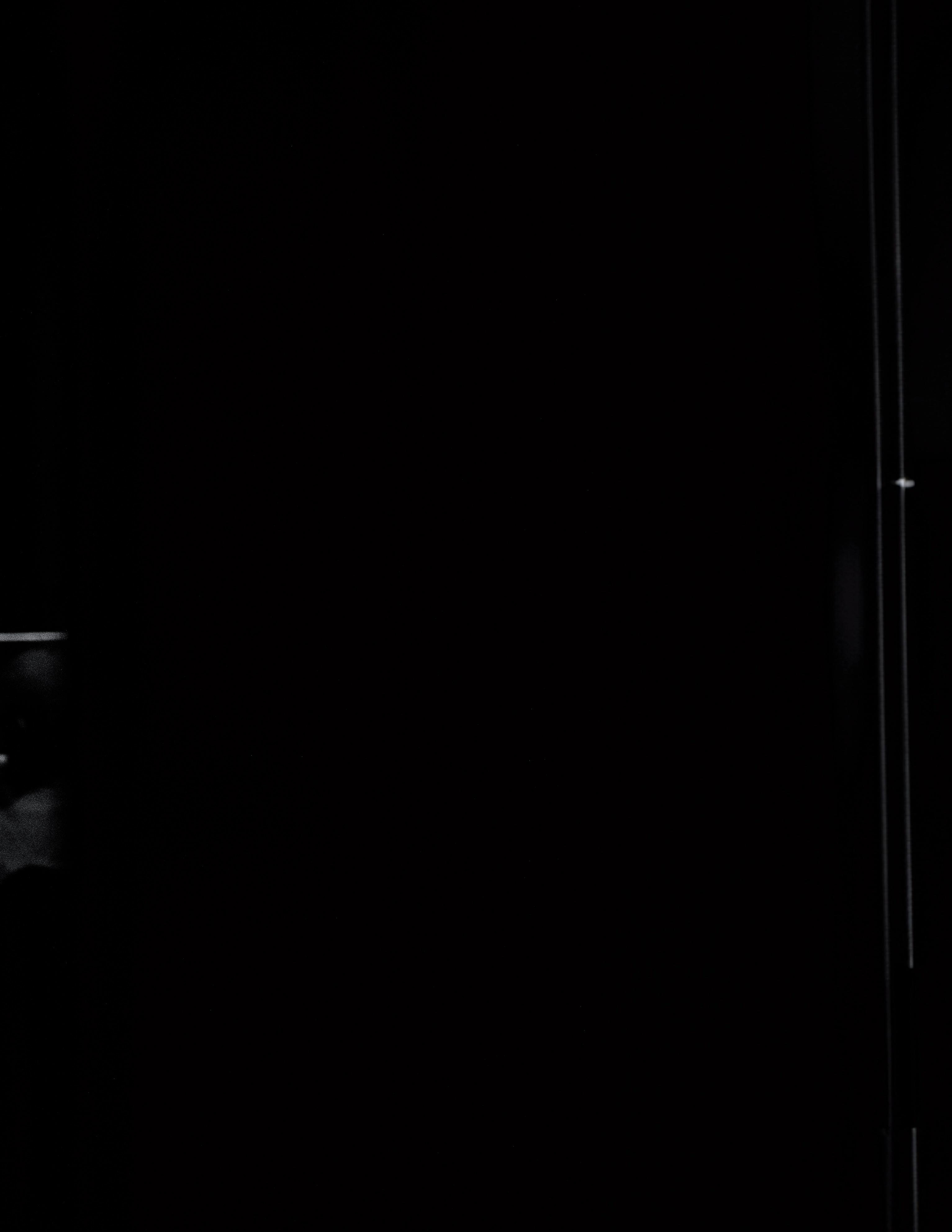
'The track and chorus came from an original demo I'd written and produced a few years prior while living in Birmingham,’ Maiday recalls. ‘A version of the full song can be found on Josh Kumra's album, but the sung verses were switched out for Wretch's bars on Don't Go.'
The universality of the genuine emotions in the lyrics sought to win the hearts of the masses. 'I'm not an
outwardly social person but I crave connection, and songwriting and singing is how I connect,’ Maiday adds. ‘It's been reflected back at me beautifully by the array of people who've told me what the song means to them — people of all ages and backgrounds. It means the world.'
UK hip hop took huge strides towards becoming the global sound it is today during the 2010s: gone were the doubts about its commercial viability, as was any inferiority complex about its standing compared to US hip hop. An acclaimed artist in his own right, Tiggs Da Author became renowned as UK hip hop’s chief hook-maker towards the end of that decade. Equipped with a distinctly soulful tone and the sharpest understanding about his collaborators, Tiggs has delivered classic hooks on tracks like Nines’ NIC and Potter Payper’s Gangsteritus
‘I'd say that with 90% of the songs I make, I tend to do the hook first,' Tiggs tells M about his creative process. ‘I will speak to the rapper about their life in general to get a gauge of where they're at mentally, or I might listen to the songs they've been making for their project and I'll think about what’s missing. I might then end up doing a hook that I know is going to challenge them.’
Tiggs is usually able to forge a unique chemistry with each of his collaborators. ‘Me and my collaborators typically come from deprived backgrounds, so the chances are that I know exactly what they're going through because I've probably gone through the same things, or my friends have,’ he explains. ‘And because I'm a fan of theirs, I already have an idea of what they're going through as artists as well as what they're going through as people.’
As UK hip hop has become more comfortable in its own skin, further success has been achieved through its artists embracing their authenticity — a quality that Tiggs is often able to tap into and channel into each hook he writes. ‘One of my favourite hook-makers that I look up to is Nate Dogg, as I feel [he had a similar approach],’ he adds of the late US singer and rapper. ‘You can put him on a song with a super-hood rapper and it takes it to a different level. [Nate’s hooks] almost come from a rapper’s perspective, or a mandem perspective in general, and it just works because it doesn't alienate the rapper's fan base.’
Tiggs’ clear respect for one of hip hop’s legendary hookdeliverers is especially fitting during the genre’s 50th anniversary celebrations. Given the positive evolution that UK hip hop has enjoyed over the years, it might not be too long before the likes of Tiggs or Maiday are similarly hailed among hip hop’s greatest hook writers.
M Magazine | 55
P MONEY
The London MC tells M about the creative influence he drew from his challenging upbringing, how he helped grime break through the mainstream and why the genre is now open to everyone.
 By Emmanuel Onapa
By Emmanuel Onapa
‘Grime makes you realise you’re not alone’
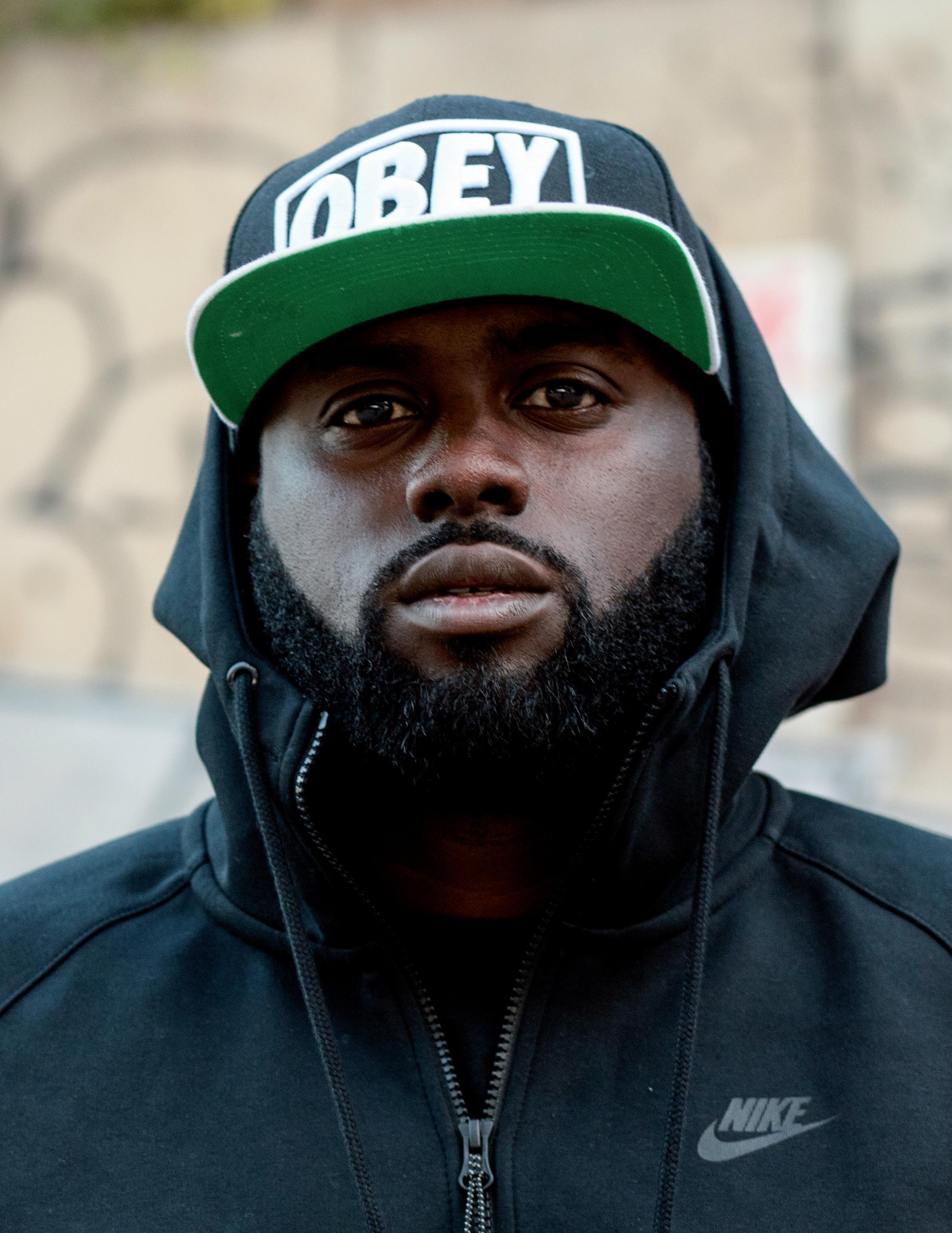

M Magazine | 57
At the core of UK hip hop, one artist in particular has risen to become a poetic storyteller of the streets; a voice that articulates the graphic realities and complex narratives of life in the urban sprawl. Meet P Money, the grime artist whose verses are not just lyrics but potent slices of life, conveying an unfiltered depiction of the environment that sculpted him.
Born in Lewisham, southeast London, P Money's journey through life has taken in a variety of experiences: after dropping out of college, he began to encounter the harsh realities of street life and the stark realities of gangs. ‘I grew up in New Cross, to be precise. It was quite a rough neighbourhood back then,’ P tells M. ‘It’s changed a lot now, but it was really different back when I was growing up.’
His music paints a vivid portrait of growing up Black and working-class in the ‘hood: a narrative knitted with threads of resilience, struggle and survival. His lyrics don't shy away from these harsh truths, but they also capture the spirit that thrives amid adversity. ‘Most of my lyrics are just what happens on the street, whether I'm involved or not,’ he elaborates. ‘It's my description of my surroundings, my neighbourhood, my life, my friends and family.'
Loss casts a shadow over many Black people in urban communities and has been a recurring theme in P Money's life and artistry; the premature departure of friends engraving marks on his soul. While often misunderstood in the moment, P’s music is often a voyage through pain that has profoundly affected the evolution of his music and persona. ‘You go through losing friends to the street; I've lost friends in car accidents from a young age,’ he says. ‘You have trauma from it, but don’t realise its trauma. But where I’m from is just life, and you just go through it.'
He's now able to recognise how these losses have shaped his identity as an artist and a human being. ‘I was 15 or 16 when I lost two or three friends,’ P adds. ‘You don't realise how much it affects you. Only when you look back do you realise the way you write, the type of songs you write, or the way you are as a person now are because of a lot of the things you've gone through when you were young.’
P's story is not an isolated one, sharing many of these struggles with his fellow grime artists alongside creative barriers. He remembers being met with opposition during the genre’s formative years, with artists banned from radio stations, barred from performing at certain venues, and subjected to an unremitting wave of hurdles to jump. ‘Grime has been through a lot,’ he recalls. ‘We were banned from everywhere; we weren’t allowed to perform grime — you couldn’t even put it on a flyer without being targeted by the police.’
Yet despite being on the receiving end of these villainous attacks, grime was still able to carve out a space for healing, solace and companionship, as well as provide a platform for voices that may otherwise have gone unnoticed. 'Grime isn’t just a scene or genre: it's culture, its community and it’s the people,’ P tells M. ‘It’s the street. Grime makes you realise you’re not alone — some people are going through the same things as you, and they’re here to support you.’
P Money's experience with the grime community has been nothing short of welcoming. Its fans are typically active partakers, believers and allies who have rallied behind artists like P in the face of targeted police harassment. ‘They will show you love, no matter what,’ he reflects. ‘When I made it public that the police were trying to target me [over] what I felt was just racism, loads of people started reaching out to tell me their experiences and back me up. If it weren’t for grime, I would have been suffering in silence.’
As well as this public support, grime’s growth has also stemmed from the adaptability and flexibility of the artists themselves. Initially a grassroots music movement that relied on pirate radio, vinyl records and sheer willpower, grime’s mainstream recognition, which now includes its own dedicated playlist on Spotify, is evidence of its significant growth. ‘Streaming platforms such as Spotify and Apple didn’t acknowledge grime for many years,' P Money says. 'But we’ve managed to get there.’
From the lyrical cadence that flows through their songs to the fashion choices of its musicians, hip hop has left a strong imprint on the cultural landscape, particularly in the UK. 'Americans used to dress baggy in the hip hop scene, but we didn’t in the UK: we would wear tracksuits and they would be slightly fitted,’ P explains. ‘Now you look at North American artists and you see people like Drake start to wear Stone Island, which is a UK thing. Not even just American rappers, either: you now see young Americans wearing Nike Tech tracksuits — that should show you the level of influence that UK hip hop culture has.’
'Grime isn’t just a genre: it's culture, its community and it’s the people.’
'Grime has been through a lot.’
The UK has recently witnessed a rise in young hip hop artists stepping into the spotlight to share their nuanced stories and perspectives, something that pleases P greatly. 'Central Cee has come through and is taking over right now, going number one with Dave: that’s something that didn’t happen back in the day,' he says. 'I can only see the future being even better, because now that young people are seeing that [example] you’re going to have more young people coming through [the ranks]. The next massive act will probably be under 20, and we haven’t had that since Dizzee Rascal.'
Over the course of his career, P Money has learned to navigate the shifting tides of hip hop and, at times, adapted his songwriting style to meet the demands of his everevolving global audience. Such experiences have led him to a vital realisation: rather than just crafting hooks and verses, hip hop songwriting is about connecting people in all walks of life.


'I write because now that I've travelled the world, I understand that you need to write your lyrics in a way everyone can understand,' P reflects. 'People of all ages, all backgrounds, all sexualities are listening to your music, so you have to write in a way where everybody feels included and can relate [to you]. The moment you don't, you can isolate yourself.’
P’s career also saw him take part in the legendary grime clash series Lord of the Mics, which featured the likes of Skepta, Kano and Wiley over its 15-year run. In the early days of grime, such clashes and rap battles were central to the culture as emerging artists honed their skills, battled for acknowledgement and ultimately staked their claim to be the best in the game.
'If you're screaming in your songs that you're the best and that no one can take you on, then it was like, “OK, well go in the ring then so we can see". Otherwise, it's just a bunch of waffle,' P recalls. 'I don’t think [clashes] are a thing now — people don’t need to clash. It's good sportsmanship, but you don’t have to [do it] any more.'
As made clear by these clashes, lyrical prowess has long reigned supreme in grime. This, though, often overlooks the impact of its producers who, as P explains, are a vital part of the creative process. 'When it comes to songwriting I think about my lyrics, what the track is about and what type of beats I need,’ he explains. ‘From there, I target what producer I feel can make the best beat for the track I have in mind.’
It’s a tried-and-tested method that has elevated P Money to be one of grime’s venerated operators, bolstered by his unwavering belief in the spirit of grime: commitment, community and, above all else, authentic self-expression.
M Magazine | 59
‘The next massive UK hip hop act will probably be under 20, and we haven’t had that since Dizzee Rascal.'
Hip hop entrepreneurs changing the game
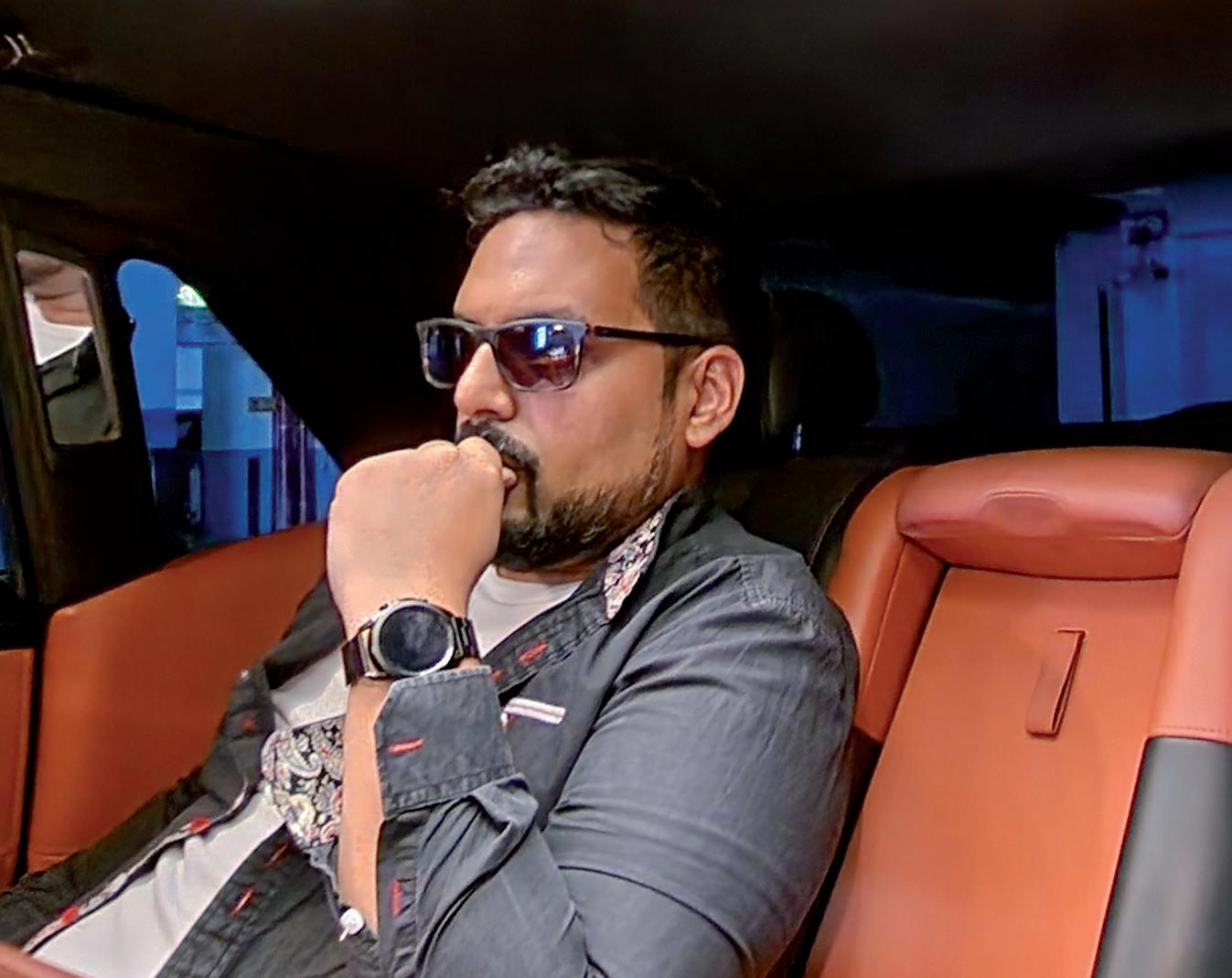
It’s not just the rappers who’ve shaped the country’s hip hop scene — visionary business leaders have also found ways to help the artists and the culture thrive. M speaks to some of those who made it happen.
By Kevin EG Perry
AJ Joshi (left) was working with grime artists before it was even called grime. 'There was a new emerging sound, and the toss was between “sublow” and “grime”,’ recalls the serial entrepreneur, who founded the internet radio station MajorFm.com in London in 2001. The burgeoning scene’s major players were all keen to get themselves heard over the digital airwaves.
‘We had Wiley come down, JME, Skepta, Jammer, Nasty Crew… this was super early — JME was about 14, I think!’ AJ continues. ‘There was a general consensus to start coining the word "grime”, so grime was born and we became the first grime-focused radio station in the UK.’
Prior to 2001, the UK’s homegrown hip hop scene was still in a process of gradual development. Early indie labels such as Music of Life, founded in 1986 by producer Simon Harris, gave a home to UK rappers like Derek B and Asher D. Britain’s first hip hop magazine, Hip Hop Connection, was launched in 1988 and quickly earned high-profile fans like Public Enemy’s Chuck D, who described it as ‘the best magazine in the world'.
‘As the music industry has changed, it’s become increasingly important for artists to also be entrepreneurs.'
However, by the end of the century the UK scene had largely been driven underground, with Britpop in its pomp. The arrival of grime changed all that. ‘When I first got involved in the industry, a lot of UK artists wanted to emulate US artists,’ recalls AJ. ‘It wasn’t cool to have a UK scene at the time until grime artists started to make it cool. Then, all of a sudden, US artists started to pay heed.’ Grime combined hip hop with UK garage and jungle to create a sound and style all of its own. Thanks to MajorFm.com, that sound was soon reverberating around the planet. ‘You had a small east London community, and all of a sudden they were put on a global stage,’ AJ remembers. ‘I remember quite vividly that Jammer’s first international booking, in New York, came directly through the station.’
In the wake of that success, digital TV station Channel U was launched in 2003 and brought grime’s pirate radio aesthetic into thousands of living rooms. When the channel’s founder Darren Platt died in 2016, The Guardian saluted his 'vast contribution to the British music scene’.
Grime now had fans all over the world, but many of them had no way of actually getting their hands on the music they loved. AJ founded UKRecordShop.com in 2004 as a way of distributing grime music while supporting emerging artists so that they could record while remaining independent. ‘I was the first person to advance these artists,’ AJ points out. ‘I would advance them through the business so they could go and record the music, and then we’d start the promo. There was a lot of trust involved there, but most importantly I ensured that they owned the masters. Our mission was championing independent music.’
As the popularity of grime continued to grow, a DIY media scene, spearheaded by SB.TV, was spawned. Originally a YouTube channel founded in 2006 by teenage entrepreneur Jamal Edwards (above right), SB.TV grew into a diverse media platform that helped launch the careers of artists including Ed Sheeran, Jessie J and Stormzy. Jamal died in 2022 at the age of just 31 and is remembered by those who knew him as a pioneer. ‘Jamal was a close, dear friend,’ says AJ. ‘He always had a vision and was focused on executing it with integrity.’
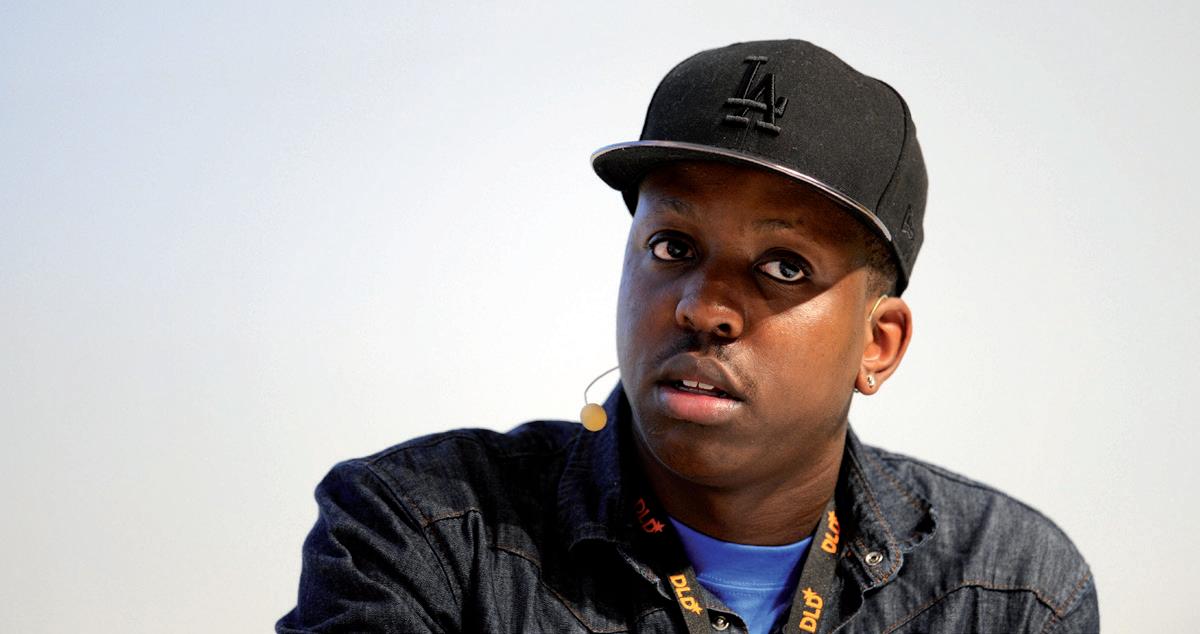
By 2007 grime was entering the mainstream, but while record labels and radio stations were now clamouring for a piece of the action, there was still a distinct lack of investment in British rap at a grassroots level. Entrepreneur Corey Johnson was one of those who stepped in, founding the Digital Holdings studio in south London along with the record label Defenders Entertainment and the charity Community Youth London.
‘We need creative hubs and spaces like this where not just musicians, but photographers, videographers, vloggers and influencers have a creative space that they can access and the industry supports,' Corey told M back in 2019 about the initiative.
As the music industry has changed through the internet era, it’s become increasingly important for artists to also be entrepreneurs themselves. Birmingham rapper Mist is a prime example: alongside his music career he also runs a record label, a clothing brand and a CBD business, on top of hosting the BBC car show Gassed Up. ‘I’ve always been that entrepreneur where I’d do any job,’ he told The Financial Times in 2021. ‘One thing I’ve been taught is to always have residual income.’
The way that artists interact and collaborate has also changed dramatically in the modern era. Entrepreneur Alena Golden is the co-founder and CEO of Rap Tech, an app developer whose flagship product Rap Fame has grown from its London base to become a worldwide hit boasting some six million registered artists.
'We grew up listening to rap music, but we never made it as musicians!' says Alena of her and her brother Dan, the company’s head of product. 'We wanted to contribute to the community, to the culture, and we saw that people wanted to collaborate and to have access to beats and a mobile recording studio.’
50 years on from the birth of hip hop, and two decades after the emergence of grime, British rap is in rude health. In 1999 the genre accounted for just 3.6% of all singles purchased in Britain, but, by 2020, that figure had risen to 22%. That seismic change is largely down to the artists, but it’s also thanks in part to the forward-thinking entrepreneurs who saw a way to take UK hip hop to the masses. For people like Alena, that work continues today.
‘Our mission is to democratise the music industry,’ she says. ‘We want to make it accessible to everybody.’
M Magazine | 61
'Jamal Edwards always had a vision and was focused on executing it with integrity.’ – AJ Joshi
FROM
SOUTH LONDON TO THE WORLD:
A TRIBUTE TO
TY
Michelle Escoffery and a whole host of the late artist’s friends and collaborators look back on the remarkable life and career of TY.
TY photographed by Tee Max

M Magazine | 63
'TY quickly decided that he was going to be different from the rest of the pack.’
– Blak Twang
TY was a shining light in UK hip hop. Born Ben Chijioke on August 17, 1972 in London, the rapper, producer and songwriter crafted genre-defying music throughout his two-decade career and positively used his platform to promote unity, cultural diversity and social change.
‘I remember hearing TY freestyle for the first time in Hyde Park in the early 90s: I was blown away.’
Michelle Escoffery
TY's upbringing in richly diverse south London laid the foundations for his unique artistic voice. His Nigerian heritage melded with the city's cultural tapestry, and this fusion would later define his musical style.
‘TY was an amazing artist who was quite unique in the way he approached music and how he wanted to present himself. We started out in music at pretty much the same time, on the Angell Town Estate in Brixton. He was a unique character who didn’t want to conform to what was meant to be cool: he decided that he was going to be different from the rest of the pack.’
Blak Twang
‘TY’s subtle influence has been huge. So many artists have come up after him and been influenced by his bravery and honesty. He was one of the first UK artists I know of to openly embrace his Nigerian heritage. He’s also one of the first names mentioned when people within the UK hip hop scene talk about people who mentored, advised and pushed them to stand in their greatness.’
Rodney P
While US giants continued to cast a shadow over the UK’s burgeoning hip hop scene at the turn of the millennium, TY recognised an opportunity to steer a uniquely British narrative. His 2001 debut album Awkward (2001) demonstrated his ability to seamlessly weave together jazz, soul and reggae influences within the fabric of hip hop, while his 2003 follow-up Upwards was nominated for the Mercury Prize.
‘TY has taken UK hip hop worldwide and was one of the first true MCs to be respected internationally. His pride in telling stories from his British-Nigerian perspective, saturated with his intelligent flow, UK accent and quick-witted humour, married with his often-overlooked production skills that made him stand out. TY was always ahead of his time and wanted to take everyone with him for the purpose of elevating our culture.’
Michelle Escoffery
A master of storytelling, TY's work often transcended genre boundaries. Collaborations with artists such as Roots Manuva, De La Soul and Tony Allen underscored his versatility, and his desire to build bridges extended outside of the studio, too. One of TY's most significant achievements was co-founding the Ghetto Grammar movement, a London workshop series that intersected hip hop and spoken word.
‘By co-founding the Ghetto Grammar movement, TY made sure we were representing our authentic selves in the sense of telling our own stories using our own voices and accents.’
Blak Twang
‘TY was somebody who connected a lot of dots between a lot of different people. As much as being an MC, he was a host: he would put his arm around people at the very early stages of their career. As a person, he was very open, very welcoming, entertaining and an amazing human being. As he went on in his career, he continued to have this ability to do just do him, and not feel like he had to pander to anything. I have a lot of respect for people who recognise that it's going to be difficult to swim against the tide but do it anyway.’
Tee Max
TY was also renowned for his commitment to community and social activism, passionately advocating for racial equality and championing marginalised communities.
‘TY really wanted to champion women in hip hop and was passionate about so many things that he didn’t feel were getting enough exposure.’
Blak Twang
‘He recognised early on my true potential and consistently encouraged me to embrace my role as a producer. This boosted my confidence and allowed me to become the producer I had always aspired to be.’
Drew
Horley
‘TY has taken UK hip hop worldwide.’
– Michelle Escoffery
'Over time, you start to learn more and more about TY, his personal experiences and the difficulties he had in his life. It made me marvel even more that he could be the open and supportive person he was having been through as much pain as he'd been through. I just remember him being possibly one of the most entertaining people I'd ever seen on stage. The way he could just bring in a crowd, it was amazing.'
Tee Max
Following TY’s death in May 2020, a mural was unveiled in Brixton by artists Bunny Bread and Jason Caballero of Create Not Destroy. Originally painted to honour a local hero, the artwork was regenerated in August 2023 to mark the 50th anniversary of hip hop.
‘The mural has served as a way for us to honour and remember TY. Given that his birthday and the 50th anniversary of hip hop both fell in the same month, we felt it was the perfect time to rejuvenate the mural and create a new visual representation of TY’s artistic legacy.’
Bunny Bread, Create Not Destroy
2021 saw the launch of the now-annual fundraising event Pass The Torch For TY. As well as celebrating TY's legacy, the event showcases a selection of the artists he collaborated with, admired and championed during his lifetime.
‘There will never be another like TY, and his music lives on. We’ll continue to shine his light and keep his memory and legacy going.’
Blak
Twang
‘TY’s legacy not only continues throughout his music and albums but through the tributes, his immediate family, friends, charities he supported and his extended musical family that has been a part of his journey and career.’
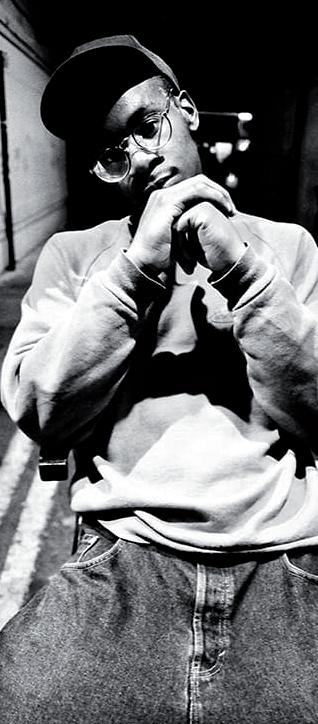 Drew Horley
Drew Horley
‘The impact TY had on my life and work can't be underestimated: he taught me the importance of truly being yourself. TY was a unique character, expressing himself as a human being and through the medium of creative artistry every day. I learned from TY that it’s OK to feel comfortable in your own skin, and to follow and execute the vision you have for yourself and your craft even when most people can’t see what you see.’
Michelle Escoffery
M Magazine | 65
’The way TY could just bring in a crowd, it was amazing.’ – Tee Max
TY photographed by Tee Max











 Above: London Posse
Above: London Posse









 By Jesse Bernard
By Jesse Bernard














 By Oumar Saleh
By Oumar Saleh



















 Photo: JM Enternational
By Will Pritchard
Photo: JM Enternational
By Will Pritchard































 By Kevin EG Perry
By Kevin EG Perry












 By Dwayne Wilks
By Dwayne Wilks

 By Emmanuel Onapa
By Emmanuel Onapa







 Drew Horley
Drew Horley